Categories
BC Museum Portraits: Museum of Surrey
The BC Museum Portraits Project is an audio interview and photography initiative that will result in an online archive of the ‘institutional memory’ of the Province’s museums and archives. We’re excited to present this collaboration between Spencer Stuart and the BC Museums Association.
2020 BC Museum Portraits Collection
Interviews conducted by: Spencer Stuart
Photography by: Tayu Hayward
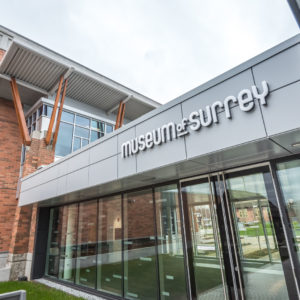
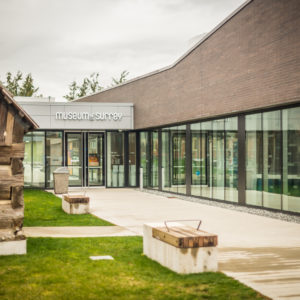
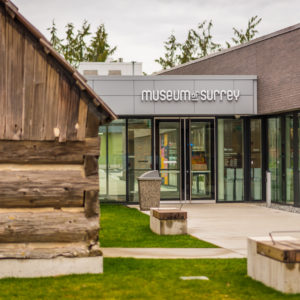
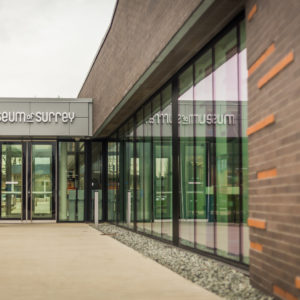
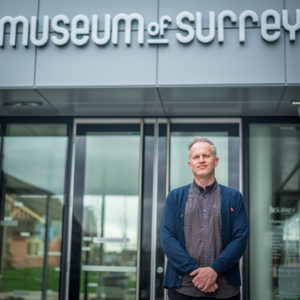
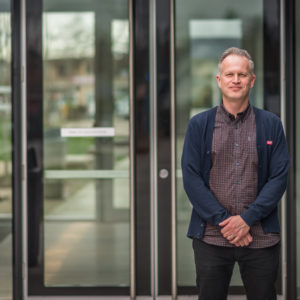
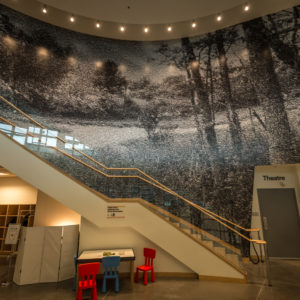
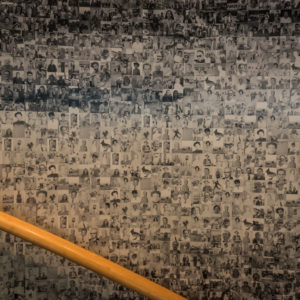

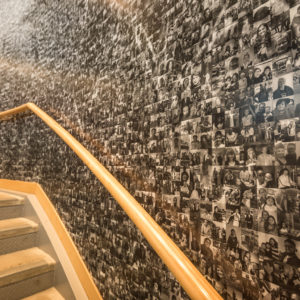
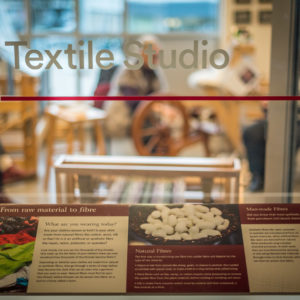
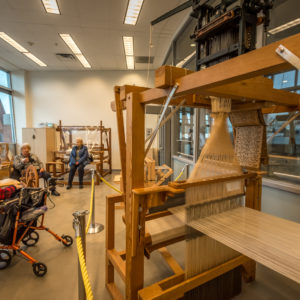

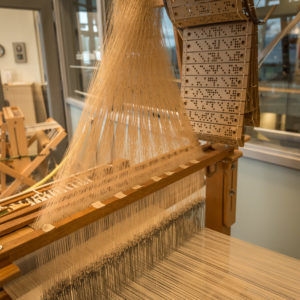
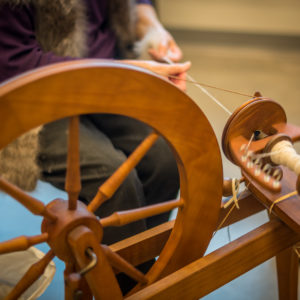

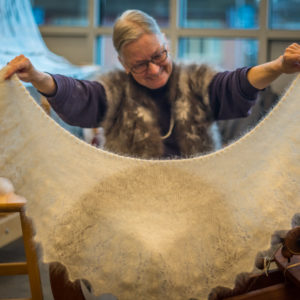
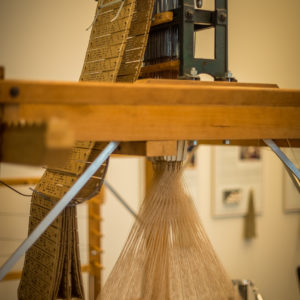
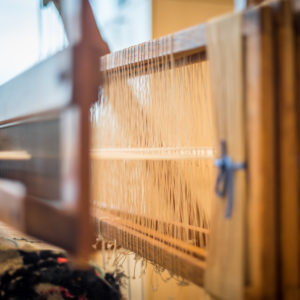
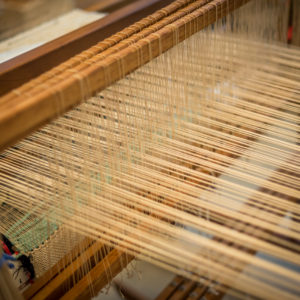
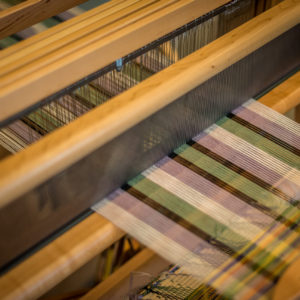
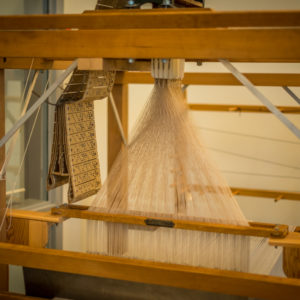
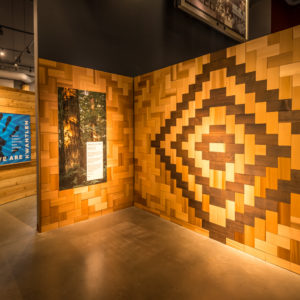
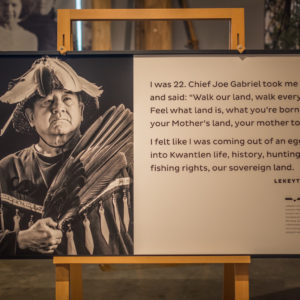
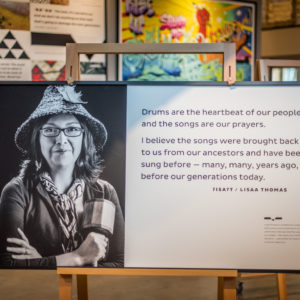
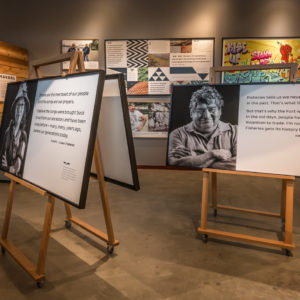
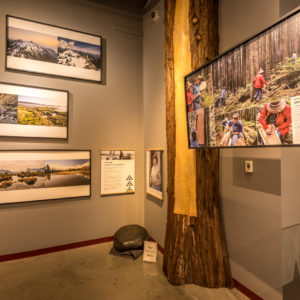
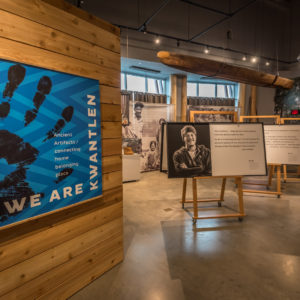
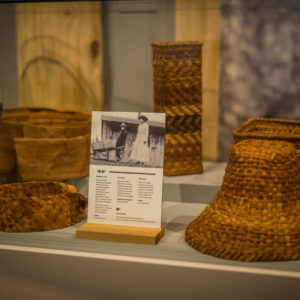

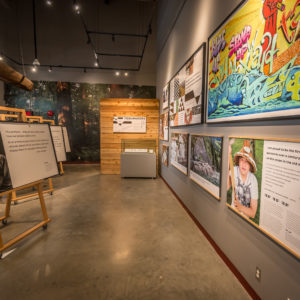

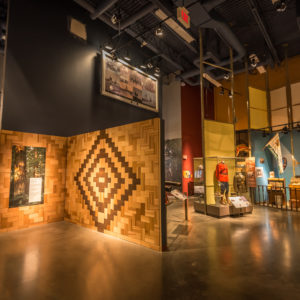
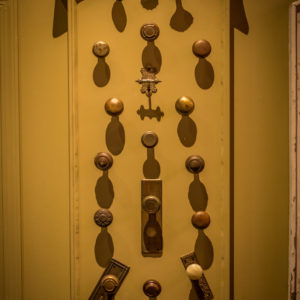
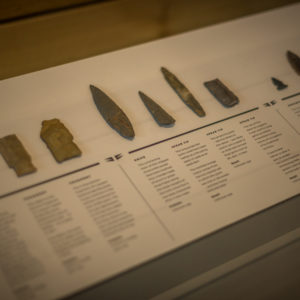
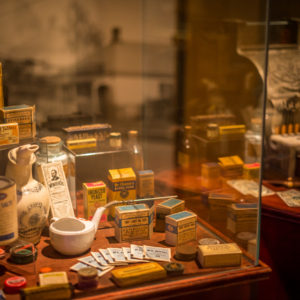
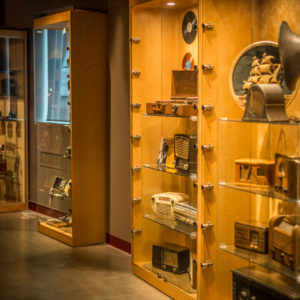
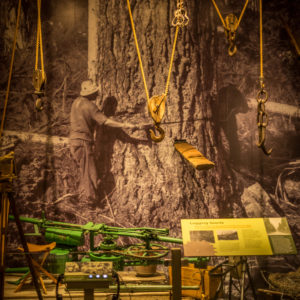
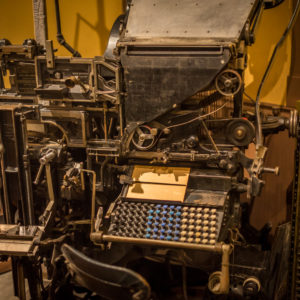
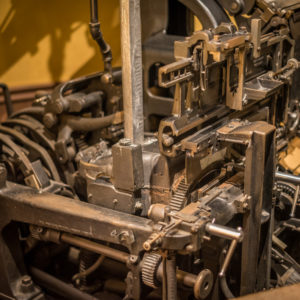
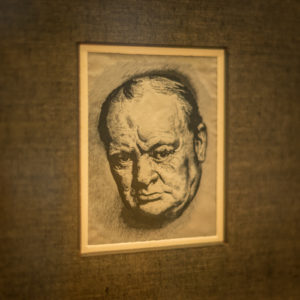
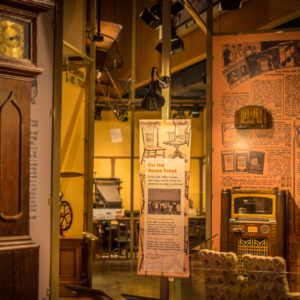
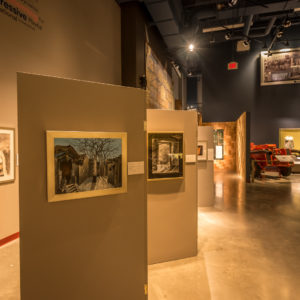
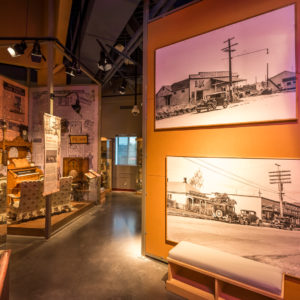
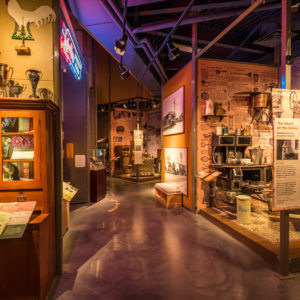
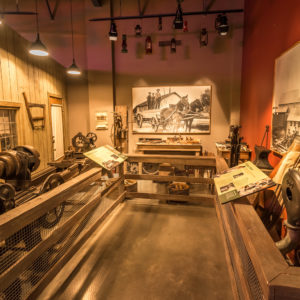
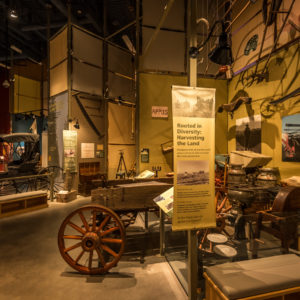
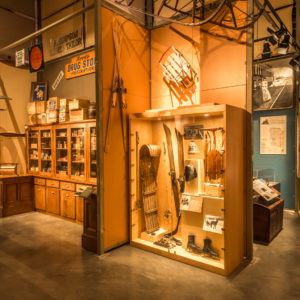
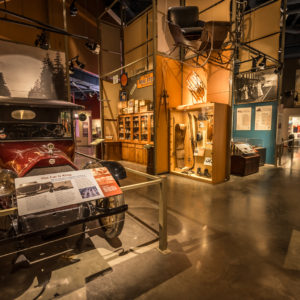
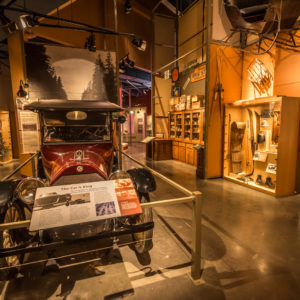
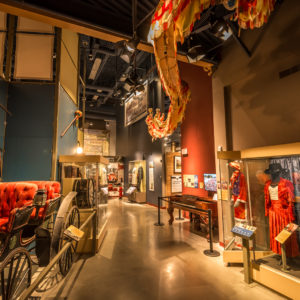
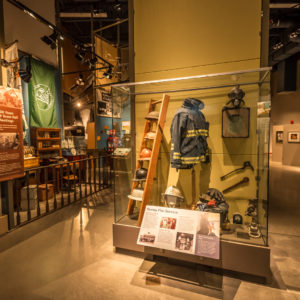
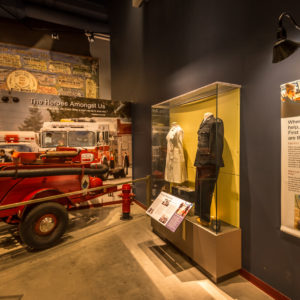
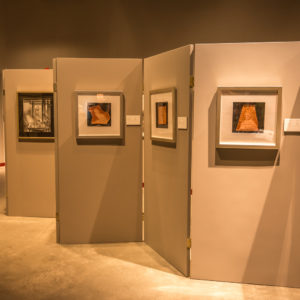
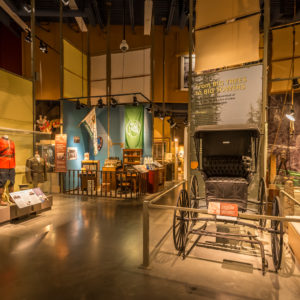
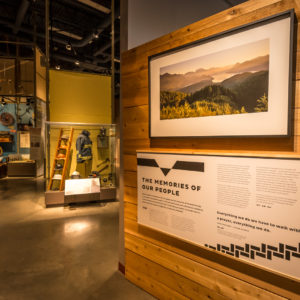
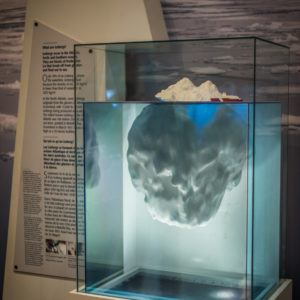
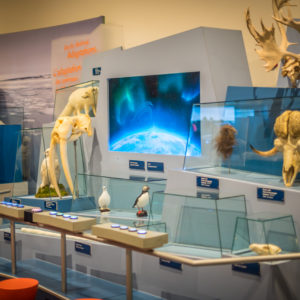
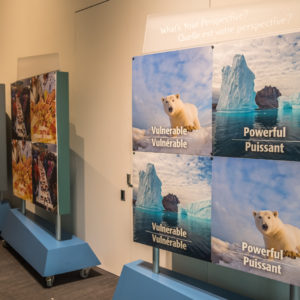
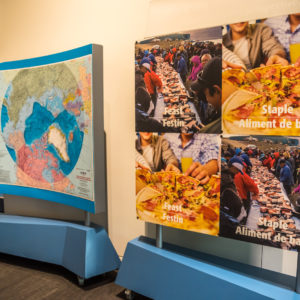
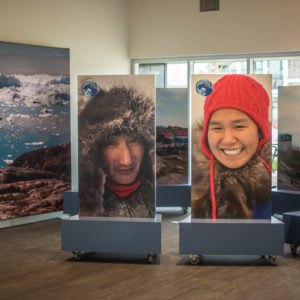

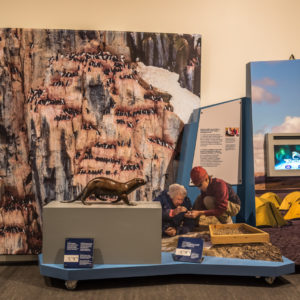
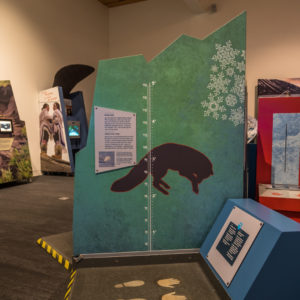
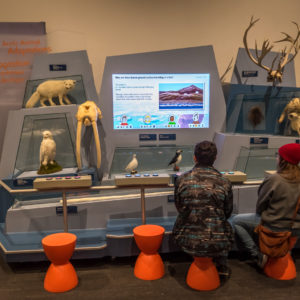
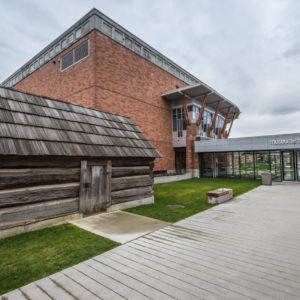
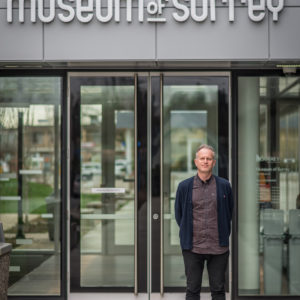
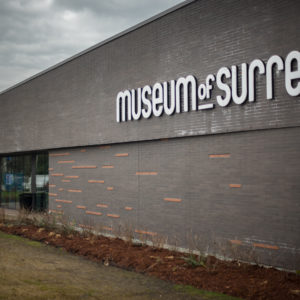
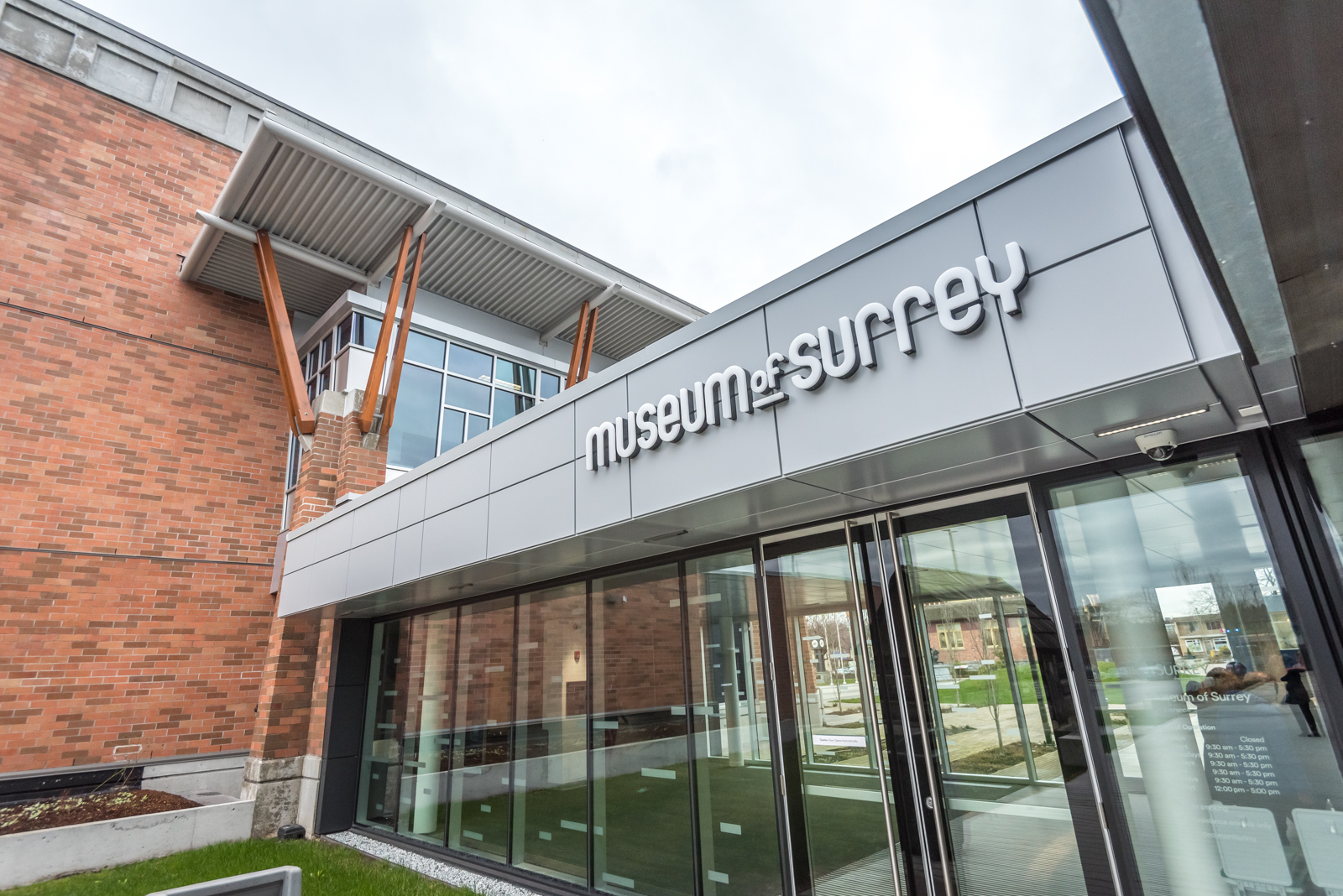
Museum of Surrey

Another View
Good location for a "stakeout".
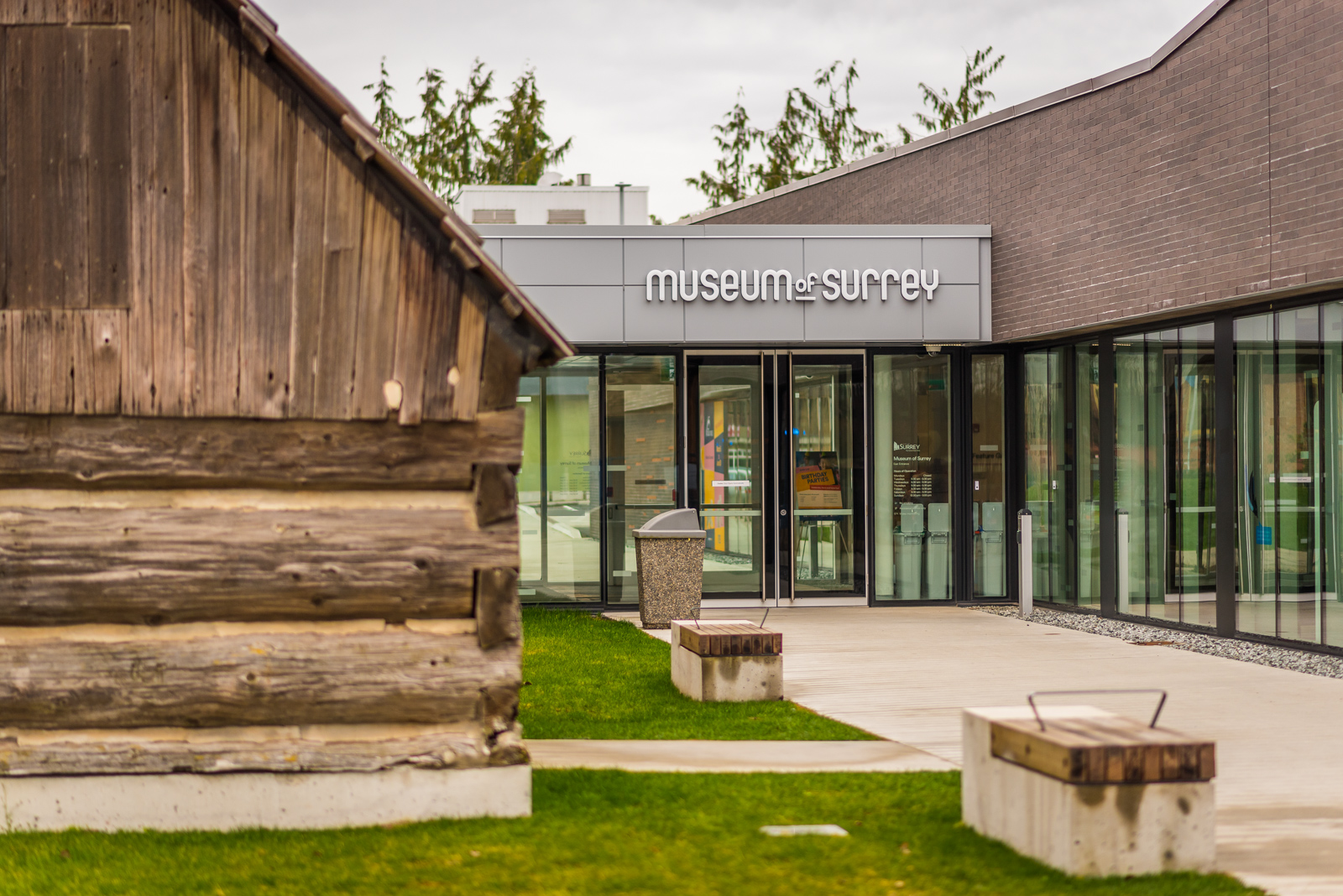
Exterior of the Museum of Surrey
The museum is situated on the unceded and ancestral lands of the Salish peoples, including the q̓ic̓əy̓ (Katzie), q̓ʷɑ:n̓ƛ̓ən̓ (Kwantlen), and se’mya’me (Semiahmoo) Nations. It is owned and operated by the City of Surrey. Located on the Heritage Campus in Cloverdale, the museum includes a main building with feature gallery, TD Explore Zone, Indigenous Hall, Textile Centre and Surrey Stories Gallery.

Exterior view of the Museum of Surrey
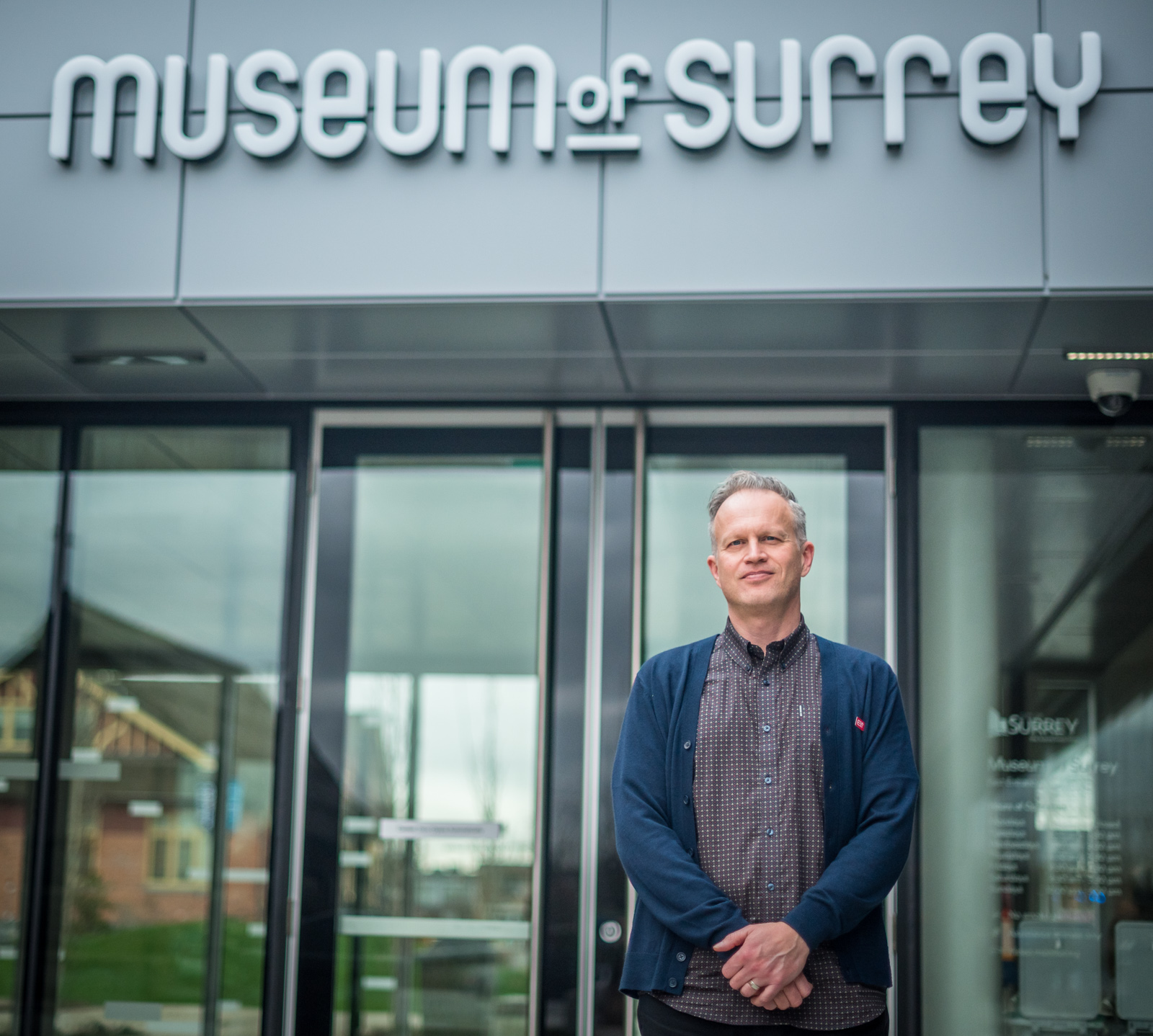
Museum of Surrey manager, Lynn Saffery
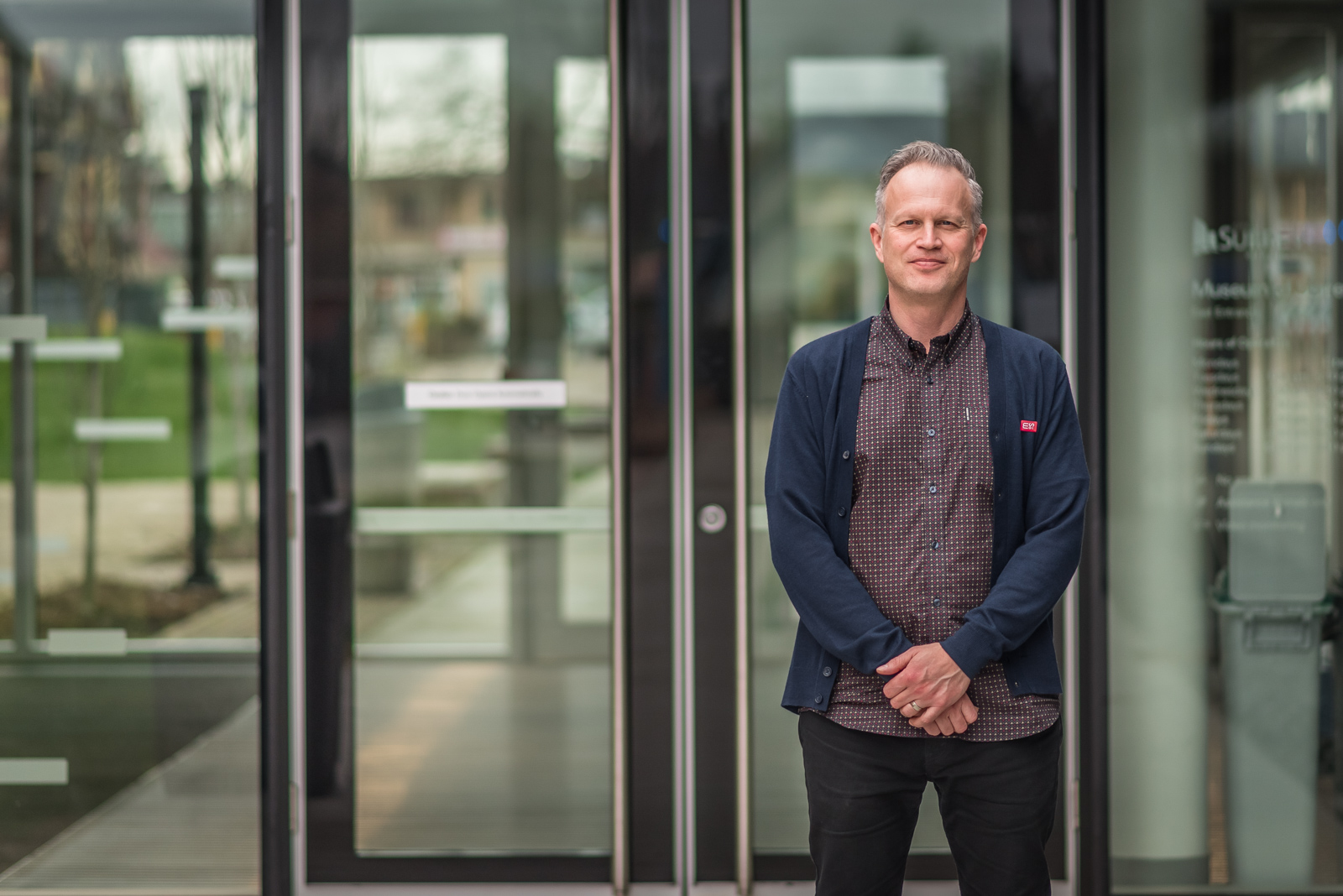
Museum of Surrey manager, Lynn Saffery
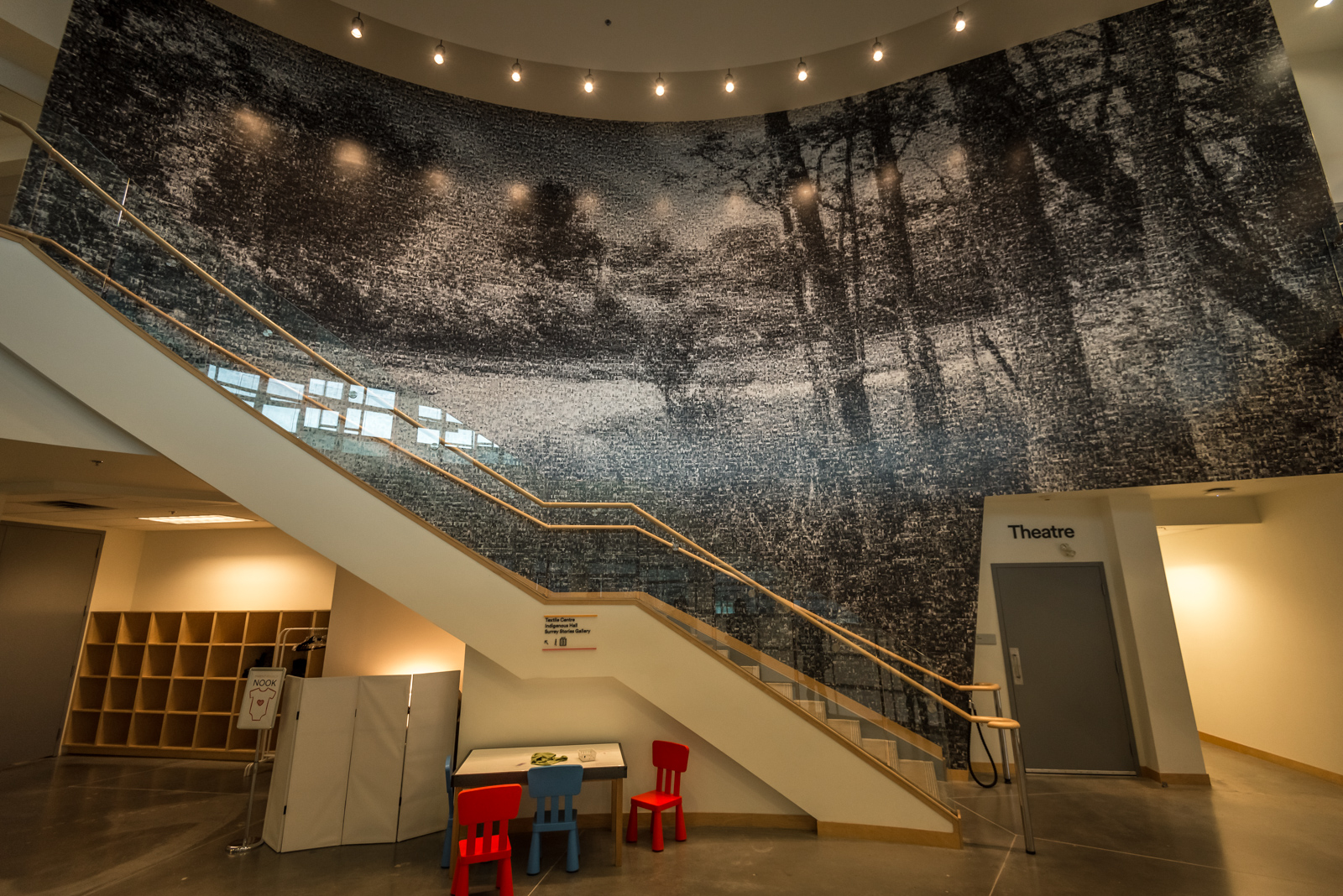
Stepped back view of the ‘Photo Mural Project’
Museum of Surrey’s ‘Photo Mural Project’, standing at 46ft by 15ft the mural is made up of over 2,000 photos submitted by members of the community as well as historical photogs of Surrey. As mentioned on the museum’s site, “From afar, the mural looks like a river which leads to the new Indigenous Hall. The river theme reflects the 1400km of rivers and streams from Surrey’s geography. It emphasizes that rivers have been a connection point for all people in Surrey for thousands of years. It also reminds us that rivers in Surrey are a source of transportation, food, sustainability and connection.”

Detail of the ‘Photo Mural Project’
Museum of Surrey’s ‘Photo Mural Project’, standing at 46ft by 15ft the mural is made up of over 2,000 photos submitted by members of the community as well as historical photogs of Surrey. As mentioned on the museum’s site, “From afar, the mural looks like a river which leads to the new Indigenous Hall. The river theme reflects the 1400km of rivers and streams from Surrey’s geography. It emphasizes that rivers have been a connection point for all people in Surrey for thousands of years. It also reminds us that rivers in Surrey are a source of transportation, food, sustainability and connection.”

Stepped back view of the ‘Photo Mural Project’
Museum of Surrey’s ‘Photo Mural Project’, standing at 46ft by 15ft the mural is made up of over 2,000 photos submitted by members of the community as well as historical photogs of Surrey. As mentioned on the museum’s site, “From afar, the mural looks like a river which leads to the new Indigenous Hall. The river theme reflects the 1400km of rivers and streams from Surrey’s geography. It emphasizes that rivers have been a connection point for all people in Surrey for thousands of years. It also reminds us that rivers in Surrey are a source of transportation, food, sustainability and connection.”
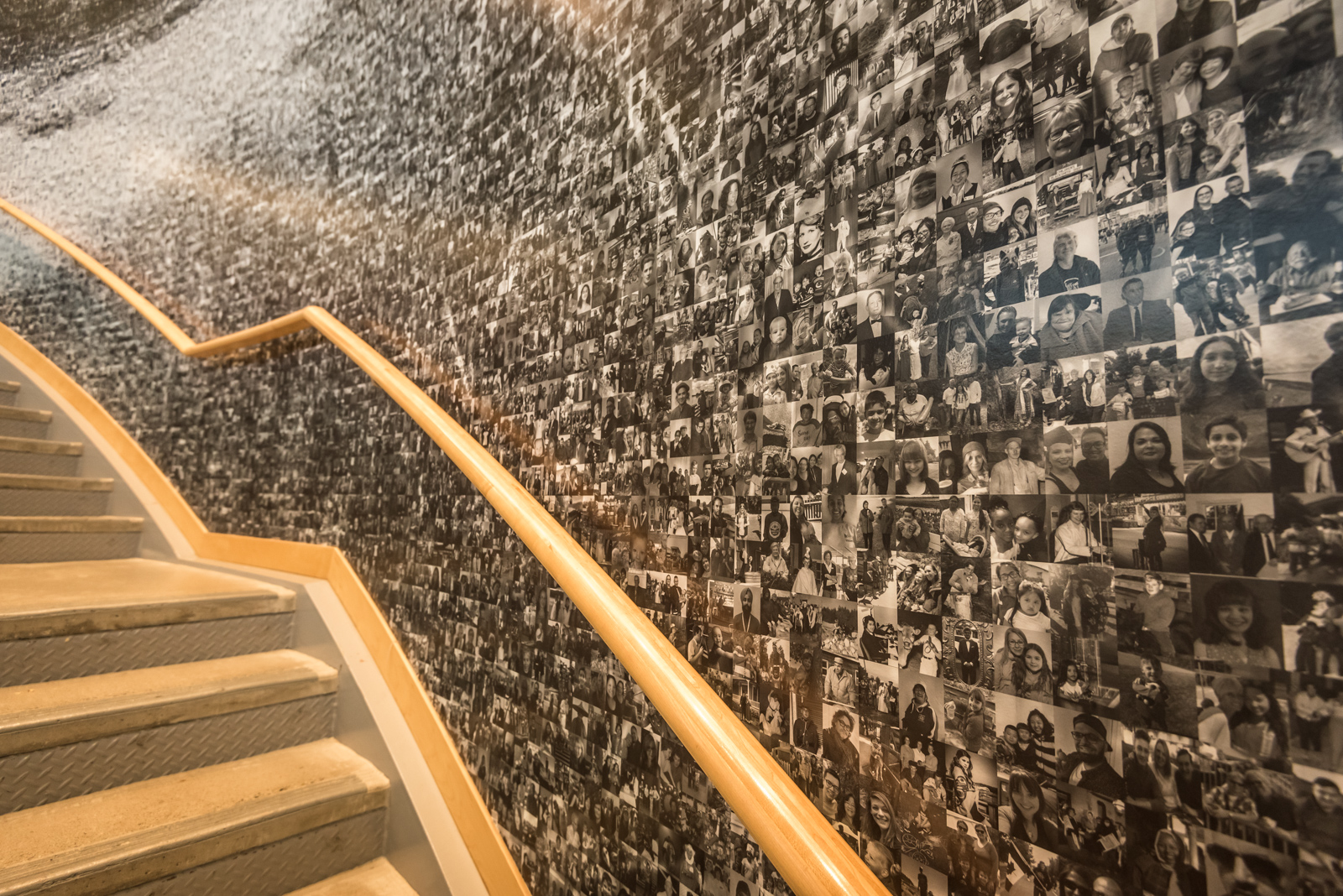
Detail of the ‘Photo Mural Project’
Museum of Surrey’s ‘Photo Mural Project’, standing at 46ft by 15ft the mural is made up of over 2,000 photos submitted by members of the community as well as historical photogs of Surrey. As mentioned on the museum’s site, “From afar, the mural looks like a river which leads to the new Indigenous Hall. The river theme reflects the 1400km of rivers and streams from Surrey’s geography. It emphasizes that rivers have been a connection point for all people in Surrey for thousands of years. It also reminds us that rivers in Surrey are a source of transportation, food, sustainability and connection.”
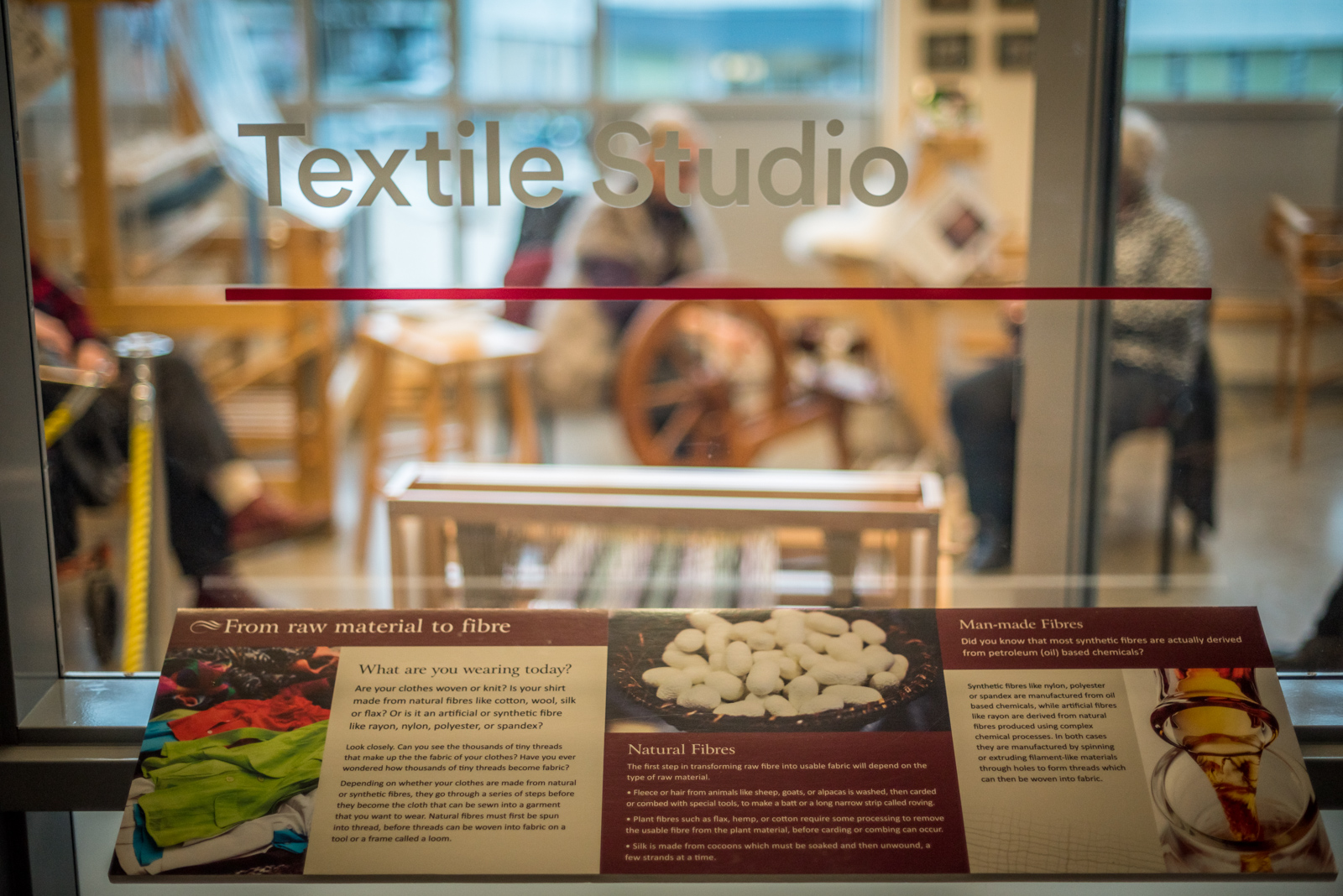
Entrance into the Honey Hooser Textile Centre
As mentioned on the Museum of Surrey site, “The centre is named after her because her son donated her extensive textile collection to the museum in 1984. As a local weaving expert and mentor, Honey used her craft to help special needs people, including badly injured soldiers after World War II.”
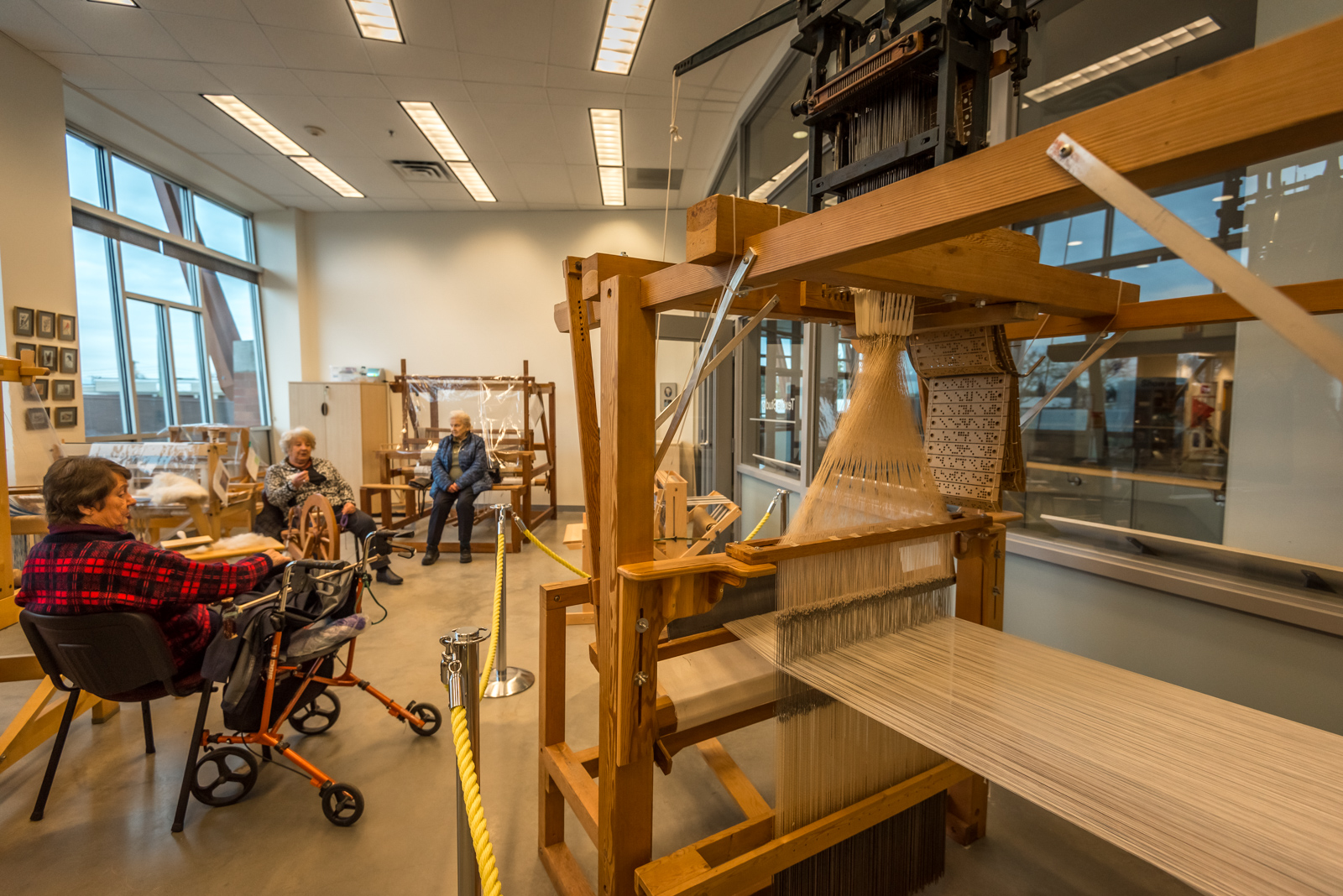
Inside the Honey Hooser Textile Centre
Honey Hooser Textile Centre with its Jacquard Loom. Created in France in 1804 using a punch card method to create intricate patterns, Honey Hooser brought it back from Europe in the 1950s.
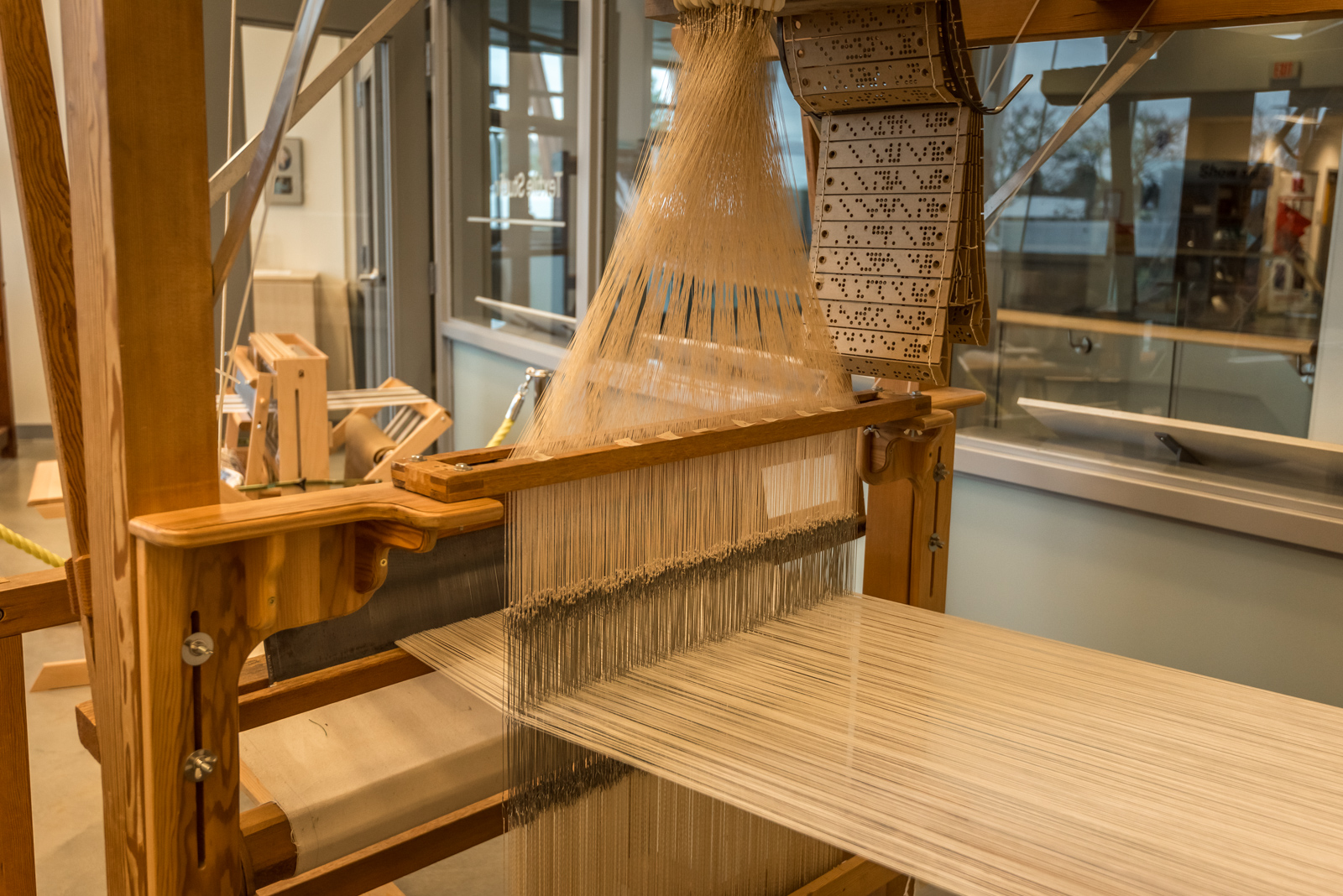
Inside the Honey Hooser Textile Centre
Honey Hooser Textile Centre with its Jacquard Loom. Created in France in 1804 using a punch card method to create intricate patterns, Honey Hooser brought it back from Europe in the 1950s.
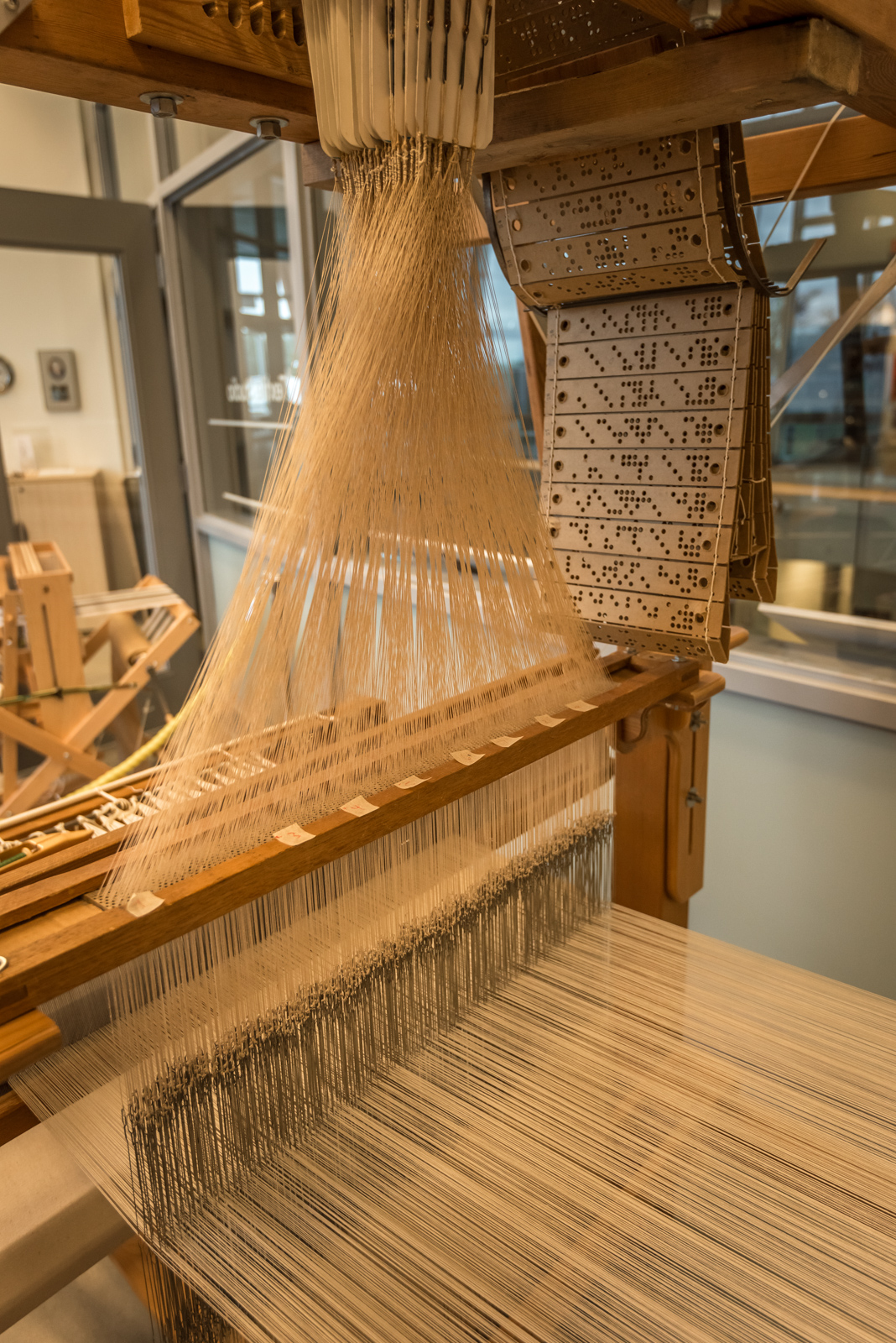
Detail of the Jacquard Loom in the Honey Hooser Textile Centre
Created in France in 1804 using a punch card method to create intricate patterns, Honey Hooser brought it back from Europe in the 1950s.
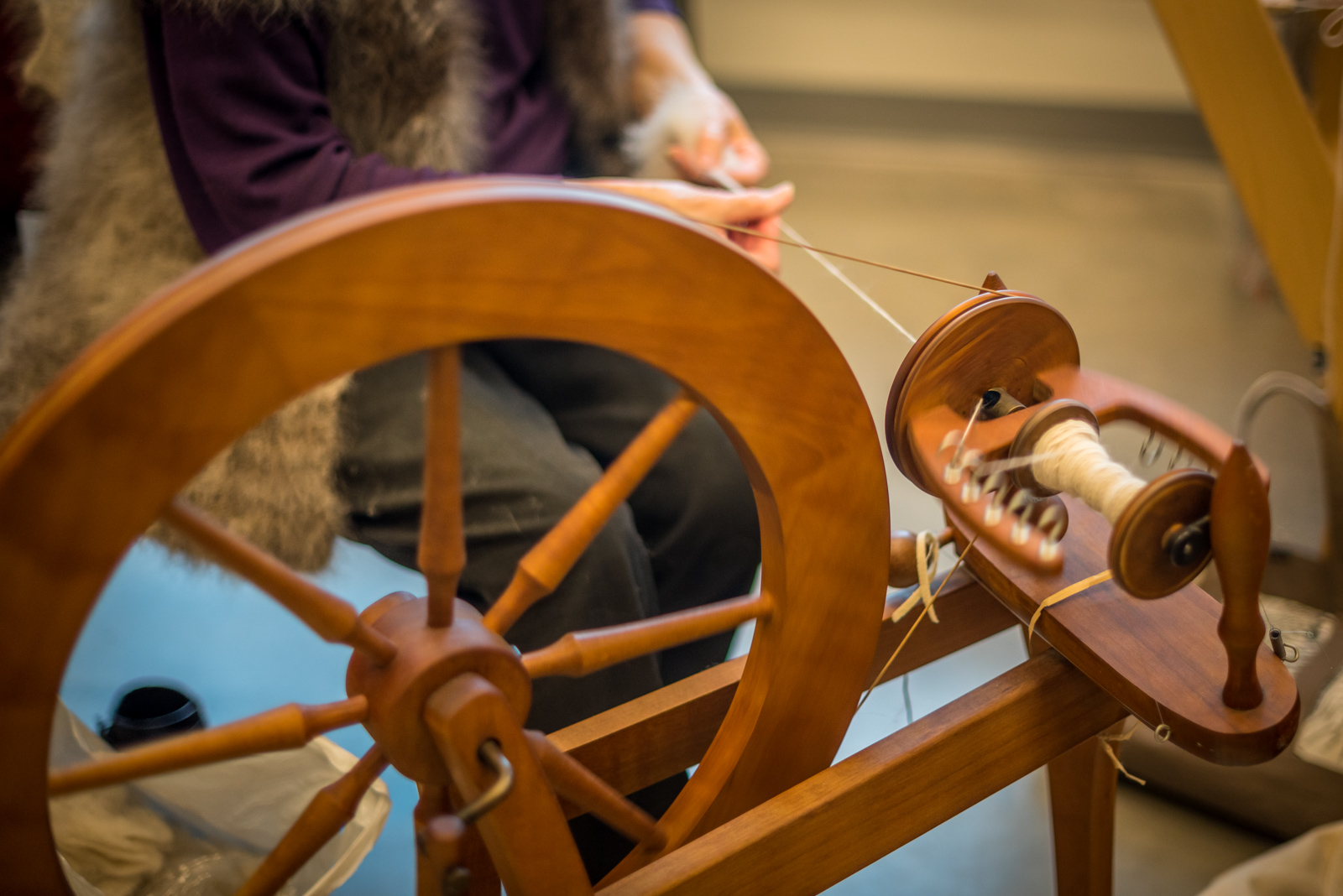
A loom in action at the Honey Hooser Textile Centre
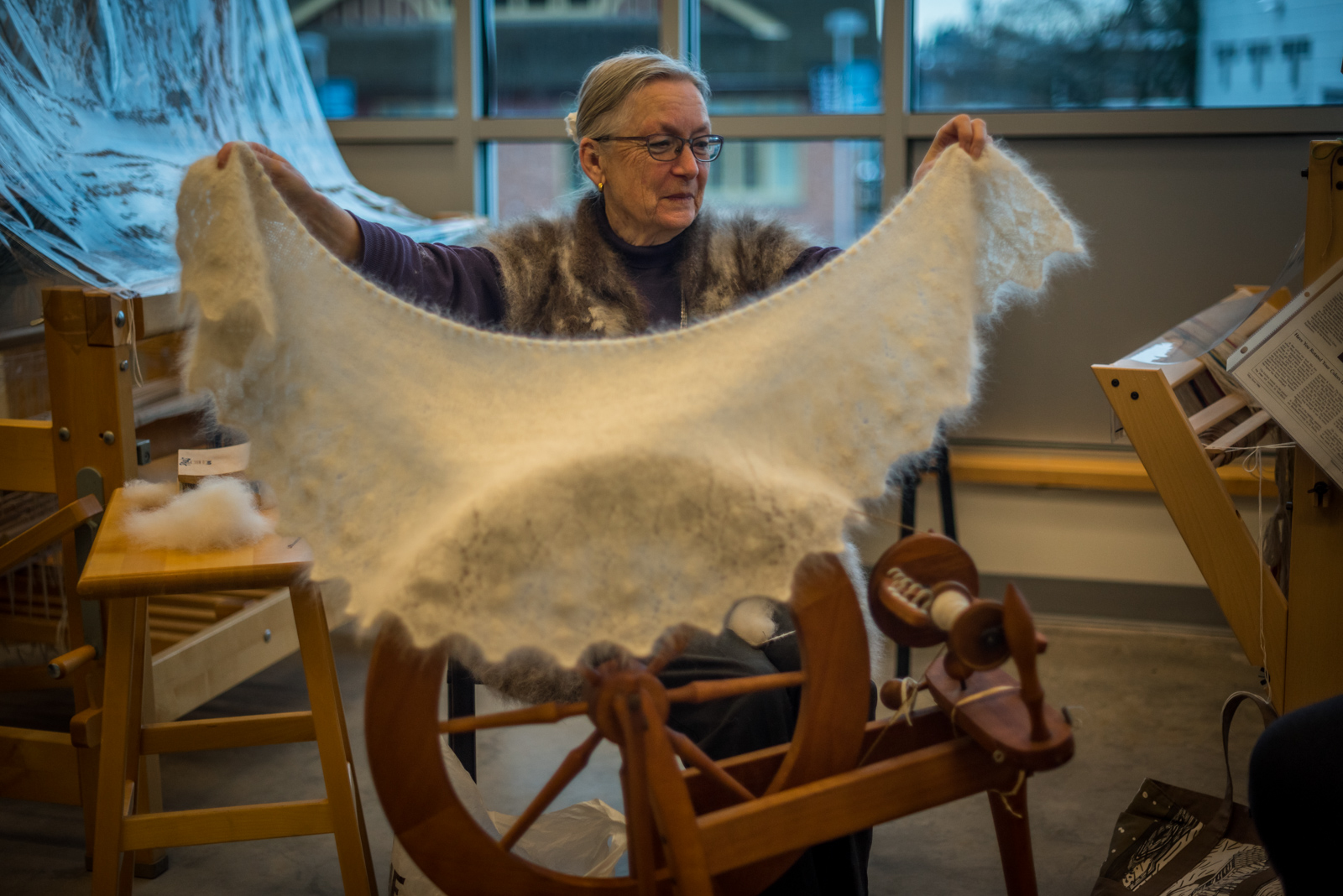
A community member’s creation made using equipment from the in the Honey Hooser Textile Centre
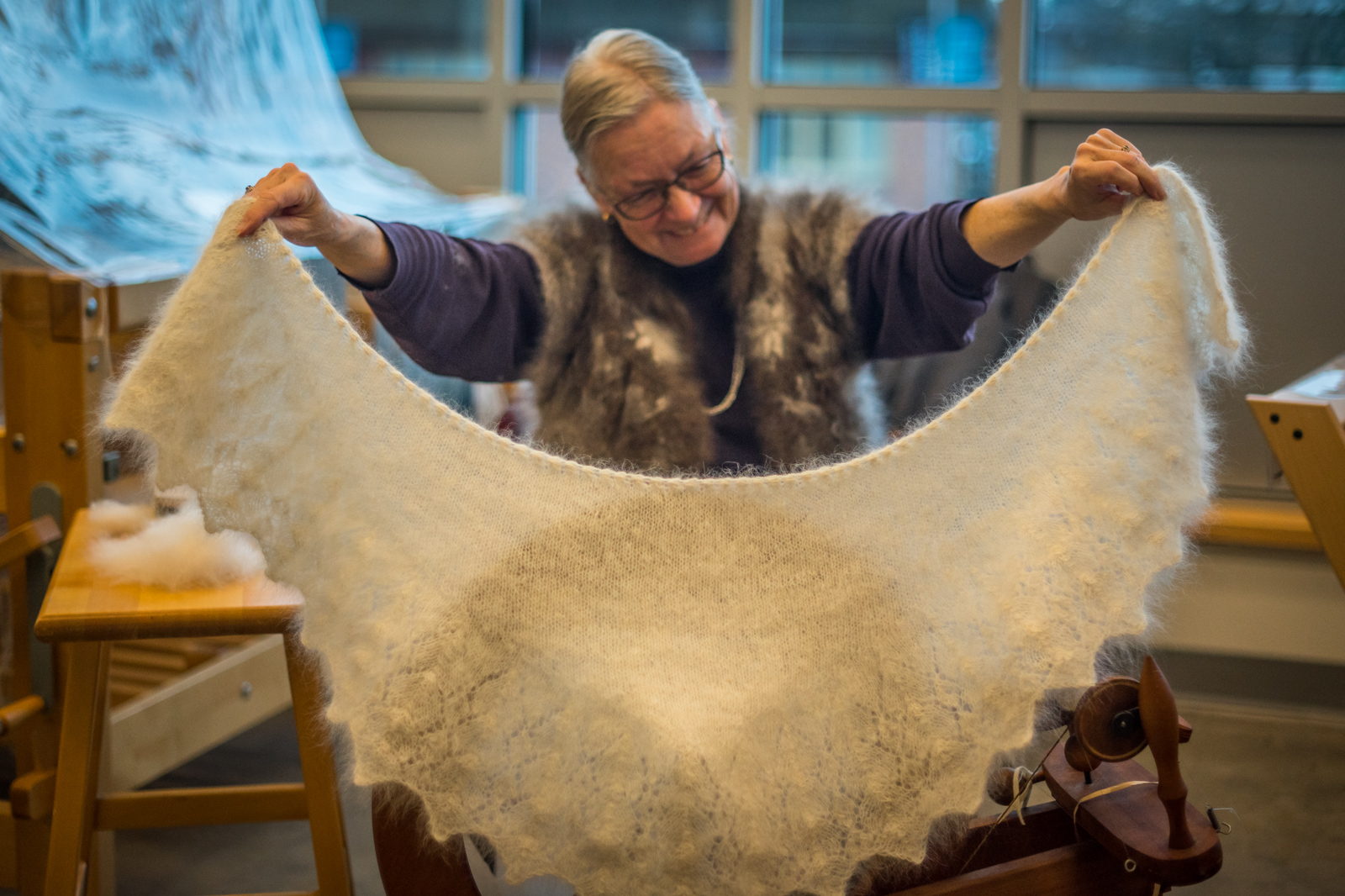
A community member’s creation made using equipment from the in the Honey Hooser Textile Centre
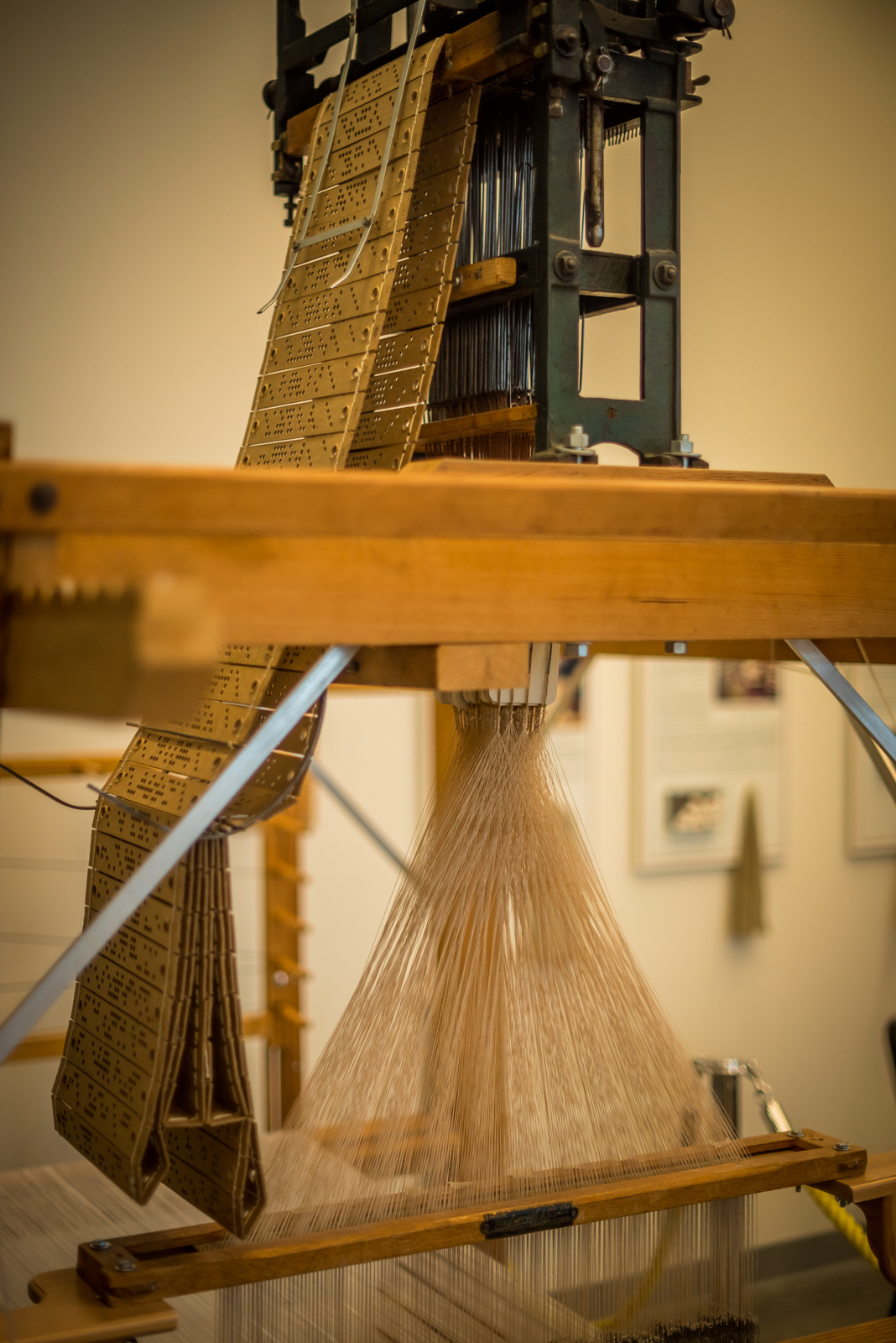
Detail of the Jacquard Loom situated in the Honey Hooser Textile Centre
Created in France in 1804 using a punch card method to create intricate patterns, Honey Hooser brought it back from Europe in the 1950s.
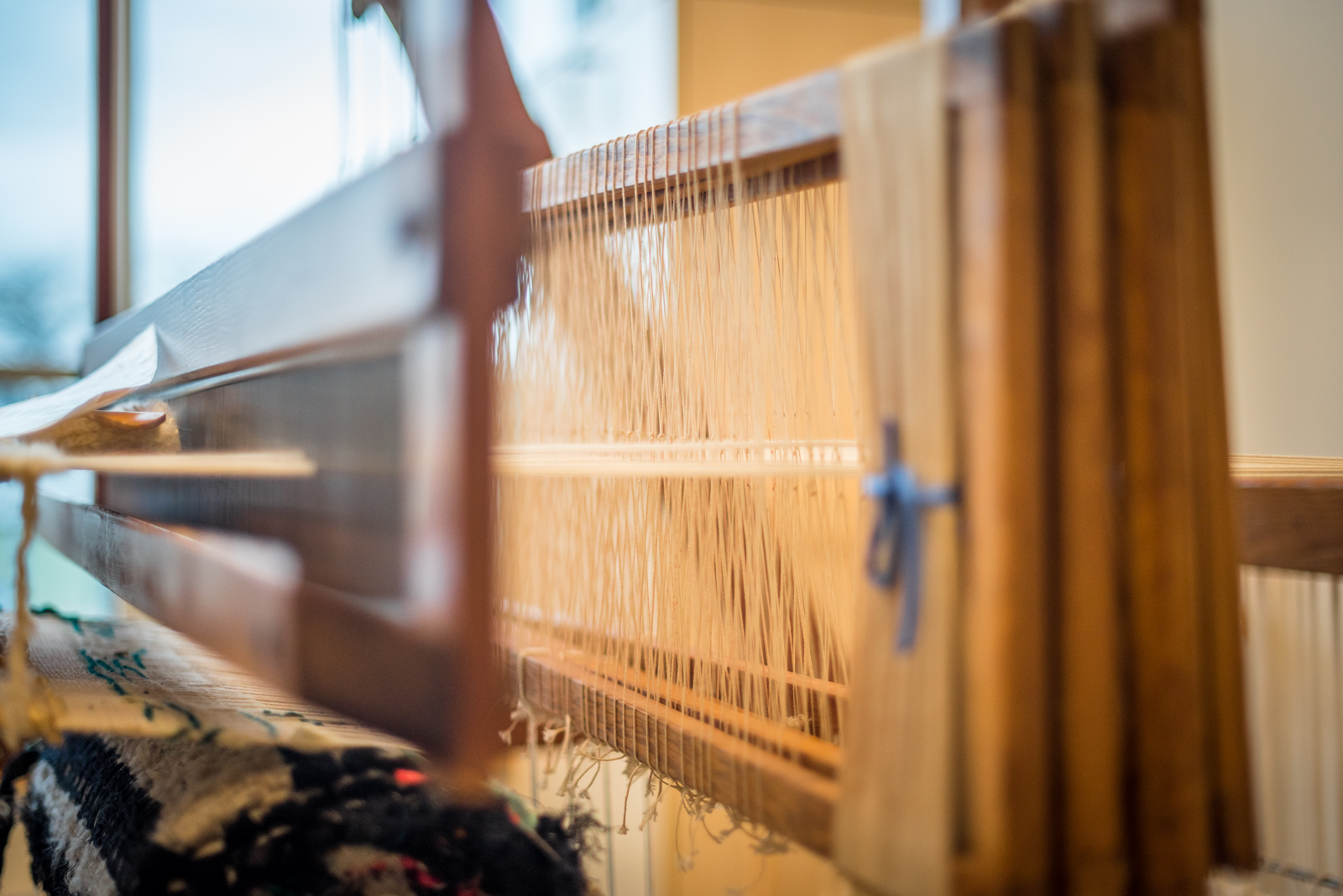
Detail of the Jacquard Loom in the Honey Hooser Textile Centre
Created in France in 1804 using a punch card method to create intricate patterns, Honey Hooser brought it back from Europe in the 1950s.
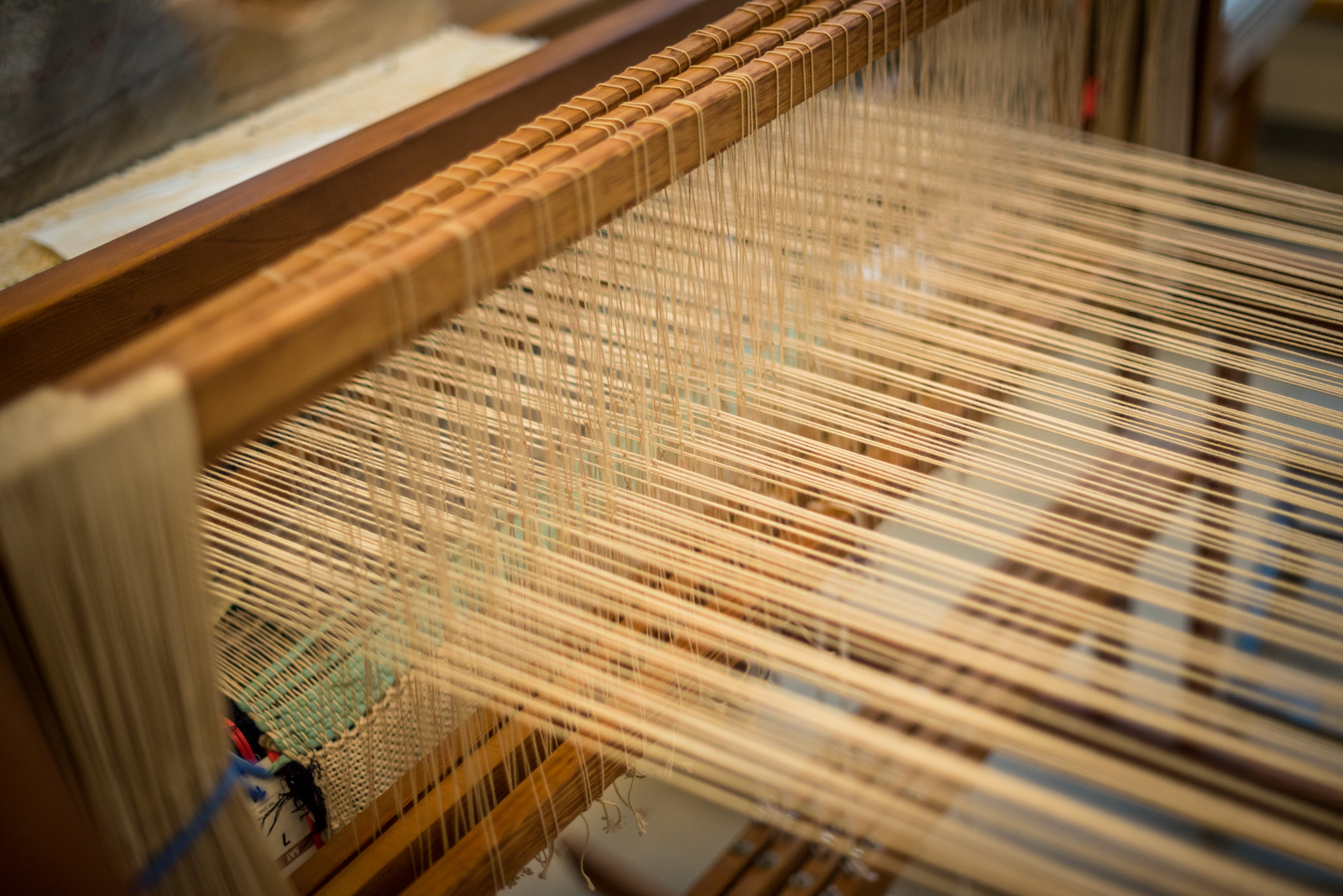
Detail of the Jacquard Loom in the Honey Hooser Textile Centre
Created in France in 1804 using a punch card method to create intricate patterns, Honey Hooser brought it back from Europe in the 1950s.
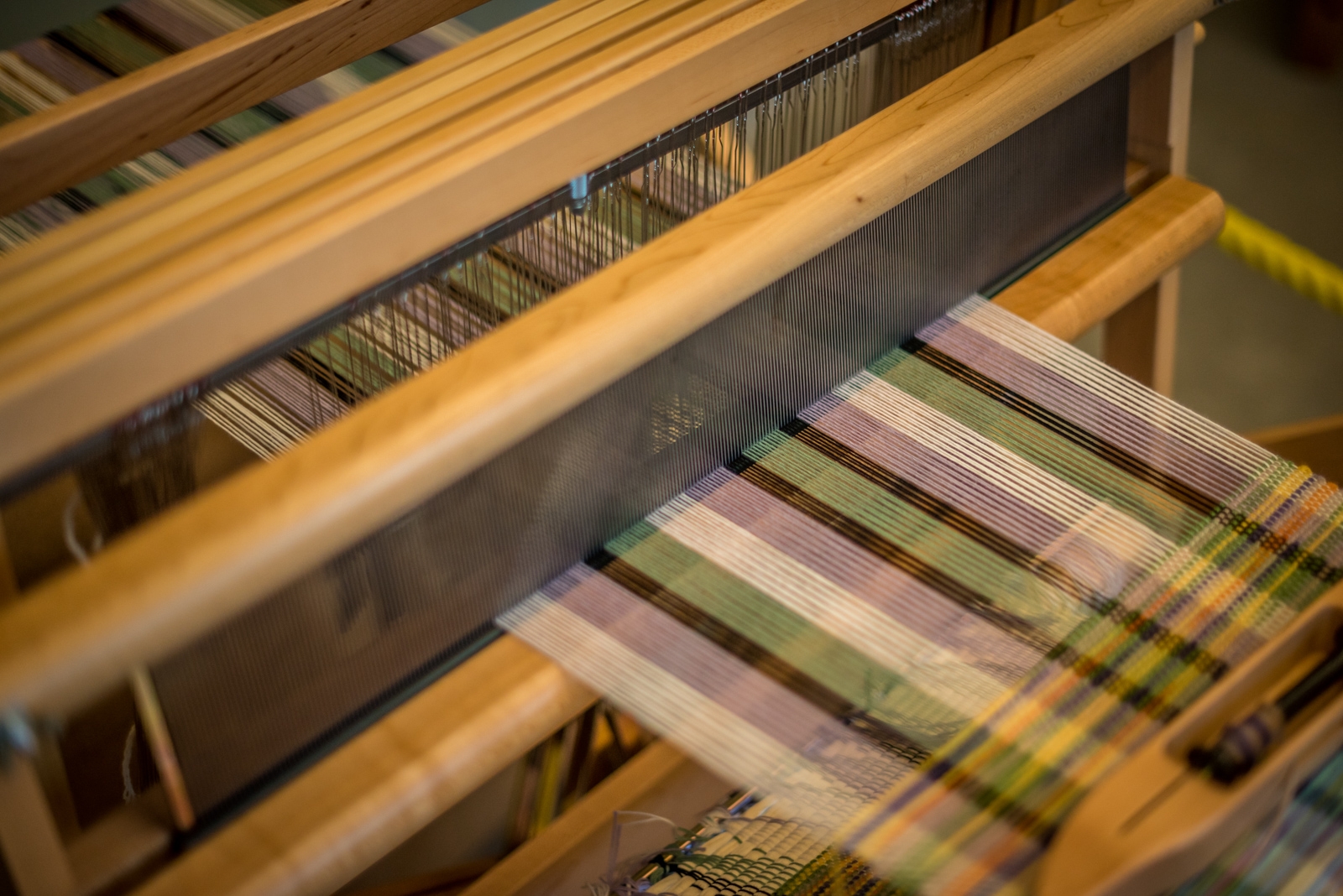
Detail of the Jacquard Loom in the Honey Hooser Textile Centre
Created in France in 1804 using a punch card method to create intricate patterns, Honey Hooser brought it back from Europe in the 1950s.
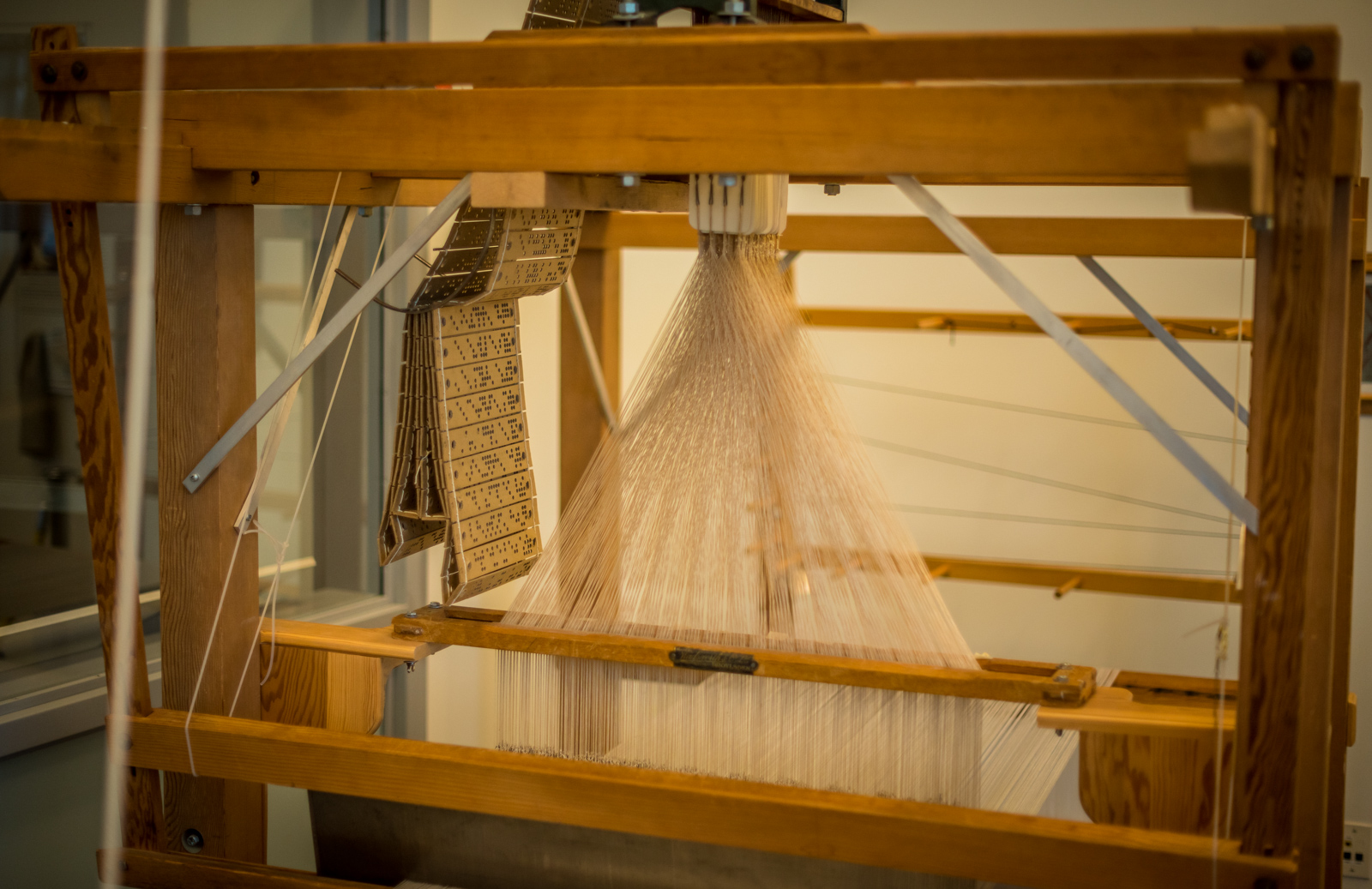
Detail of the Jacquard Loom in the Honey Hooser Textile Centre
Created in France in 1804 using a punch card method to create intricate patterns, Honey Hooser brought it back from Europe in the 1950s.
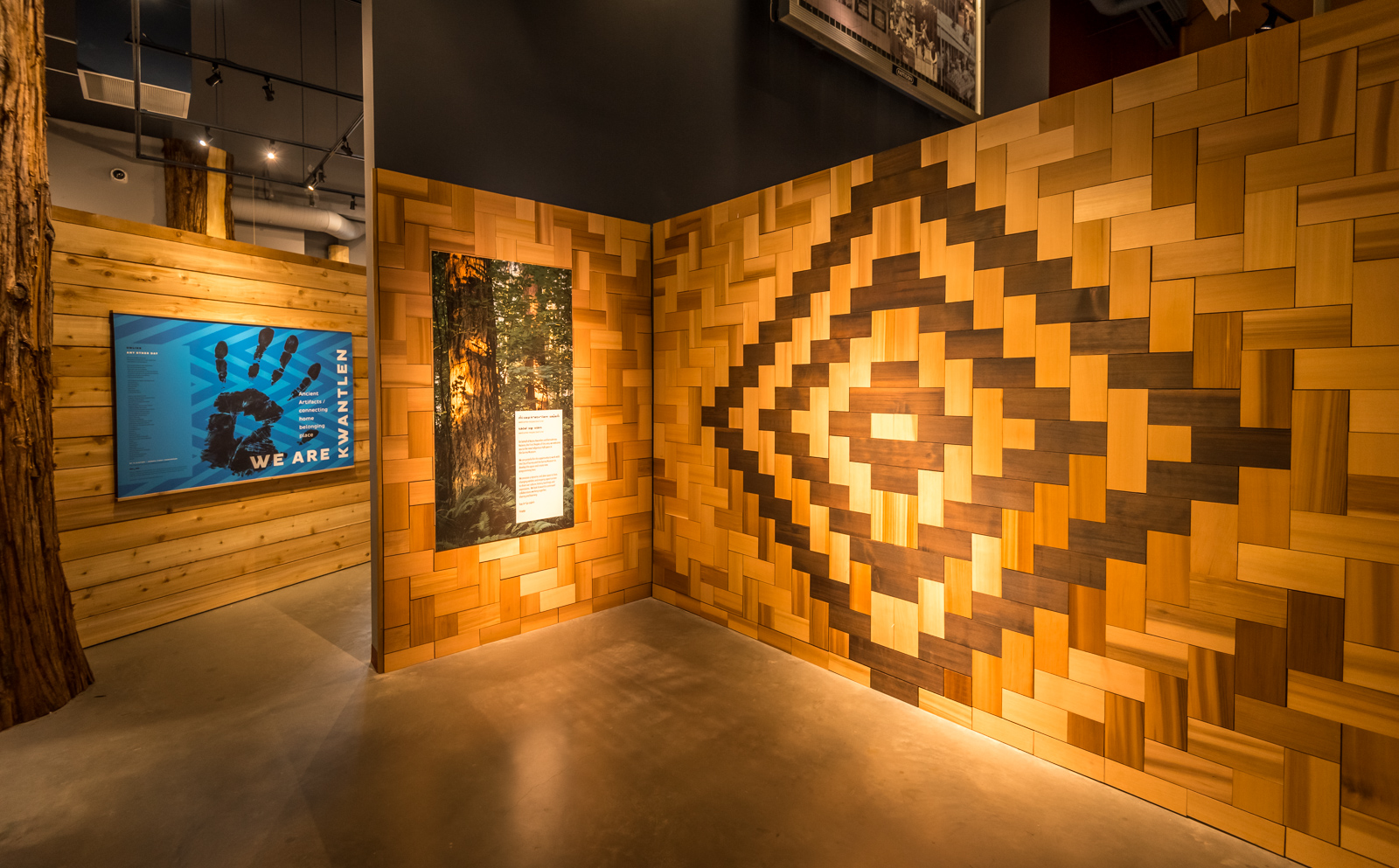
Entrance to ‘We Are Kwantlen’ in the ‘Indigenous Hall’
‘We Are Kwantlen’ held in the ‘Indigenous Hall’ presented by Katzie First Nation, Kwantlen First Nation and Semiahmoo First Nation.
The Hall “is a first of its kind–a space of gathering, storytelling and exhibition that is voiced completely by the communities it represents–Katzie First Nation, Kwantlen First Nation and Semiahmoo First Nation, Surrey’s three land-based Nations. The Indigenous Hall will evolve and change as relationships grow and strengthen. It is a dynamic and alive space intended to educate and story tell.” (Museum of Surrey website)
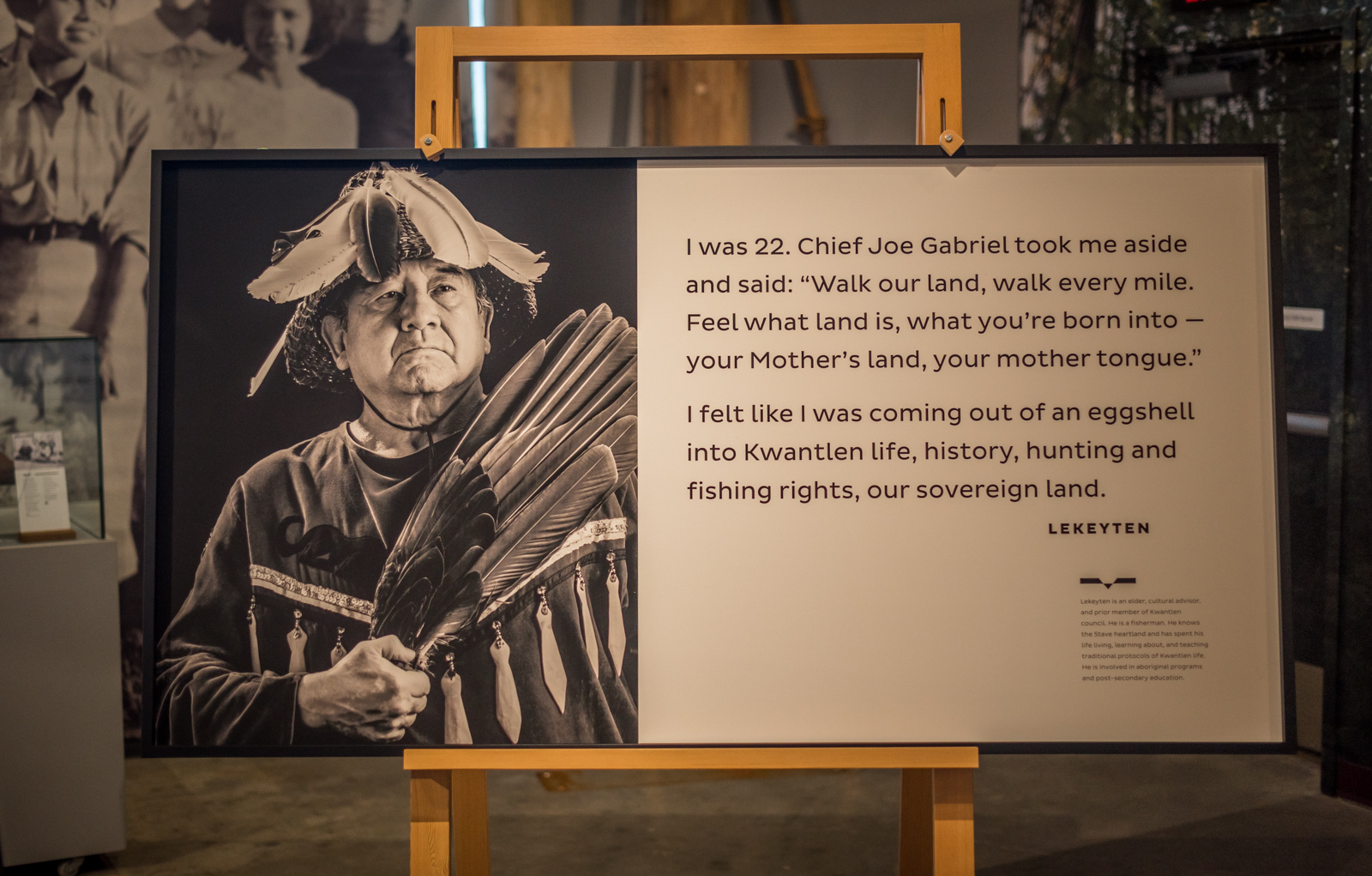
Detail of ‘We Are Kwantlen’
‘We Are Kwantlen’ held in the ‘Indigenous Hall’ presented by Katzie First Nation, Kwantlen First Nation and Semiahmoo First Nation.
The Hall “is a first of its kind–a space of gathering, storytelling and exhibition that is voiced completely by the communities it represents–Katzie First Nation, Kwantlen First Nation and Semiahmoo First Nation, Surrey’s three land-based Nations. The Indigenous Hall will evolve and change as relationships grow and strengthen. It is a dynamic and alive space intended to educate and story tell.” (Museum of Surrey website)
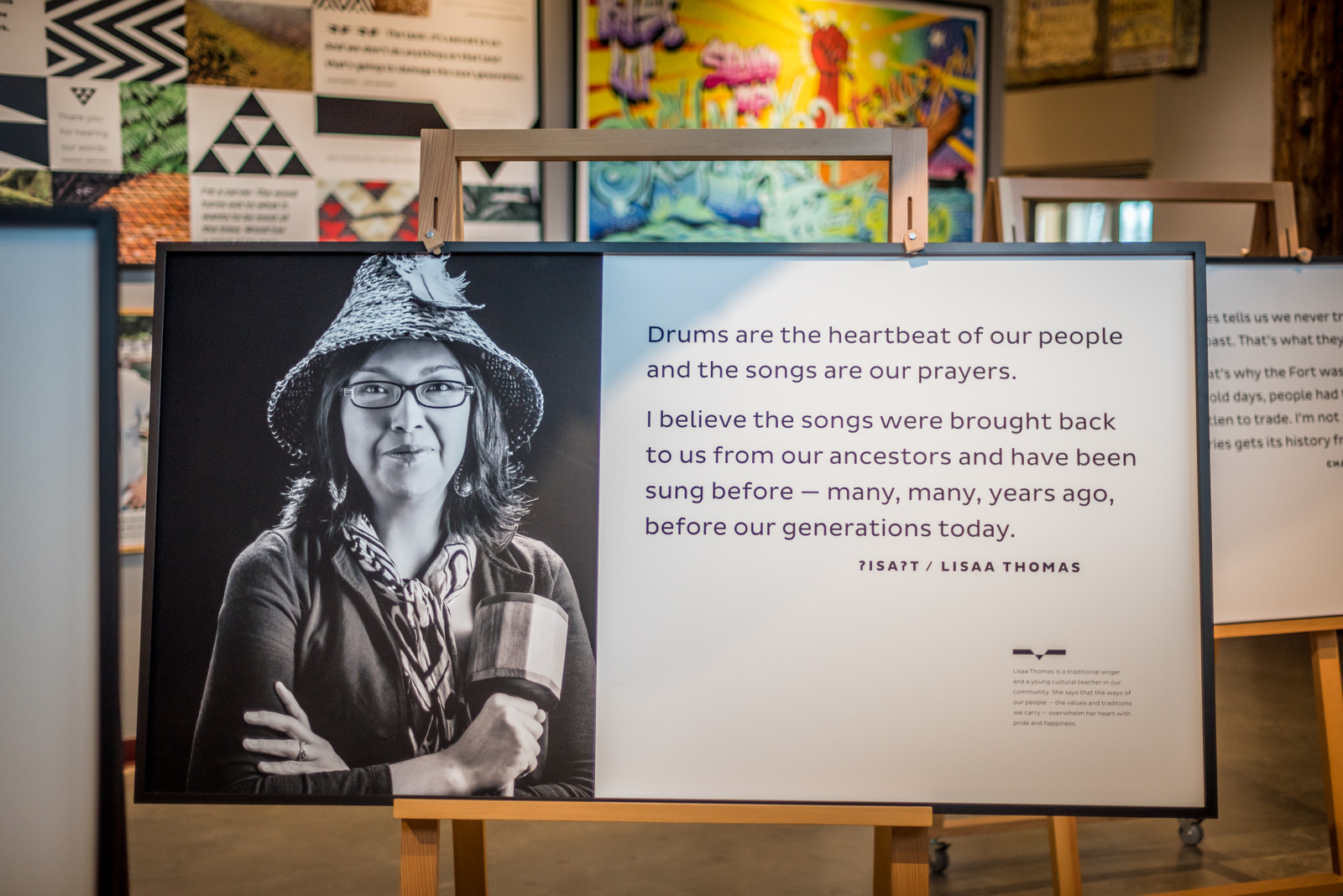
Detail of ‘We Are Kwantlen’ in the ‘Indigenous Hall’
‘We Are Kwantlen’ held in the ‘Indigenous Hall’ presented by Katzie First Nation, Kwantlen First Nation and Semiahmoo First Nation.
The Hall “is a first of its kind–a space of gathering, storytelling and exhibition that is voiced completely by the communities it represents–Katzie First Nation, Kwantlen First Nation and Semiahmoo First Nation, Surrey’s three land-based Nations. The Indigenous Hall will evolve and change as relationships grow and strengthen. It is a dynamic and alive space intended to educate and story tell.” (Museum of Surrey website)
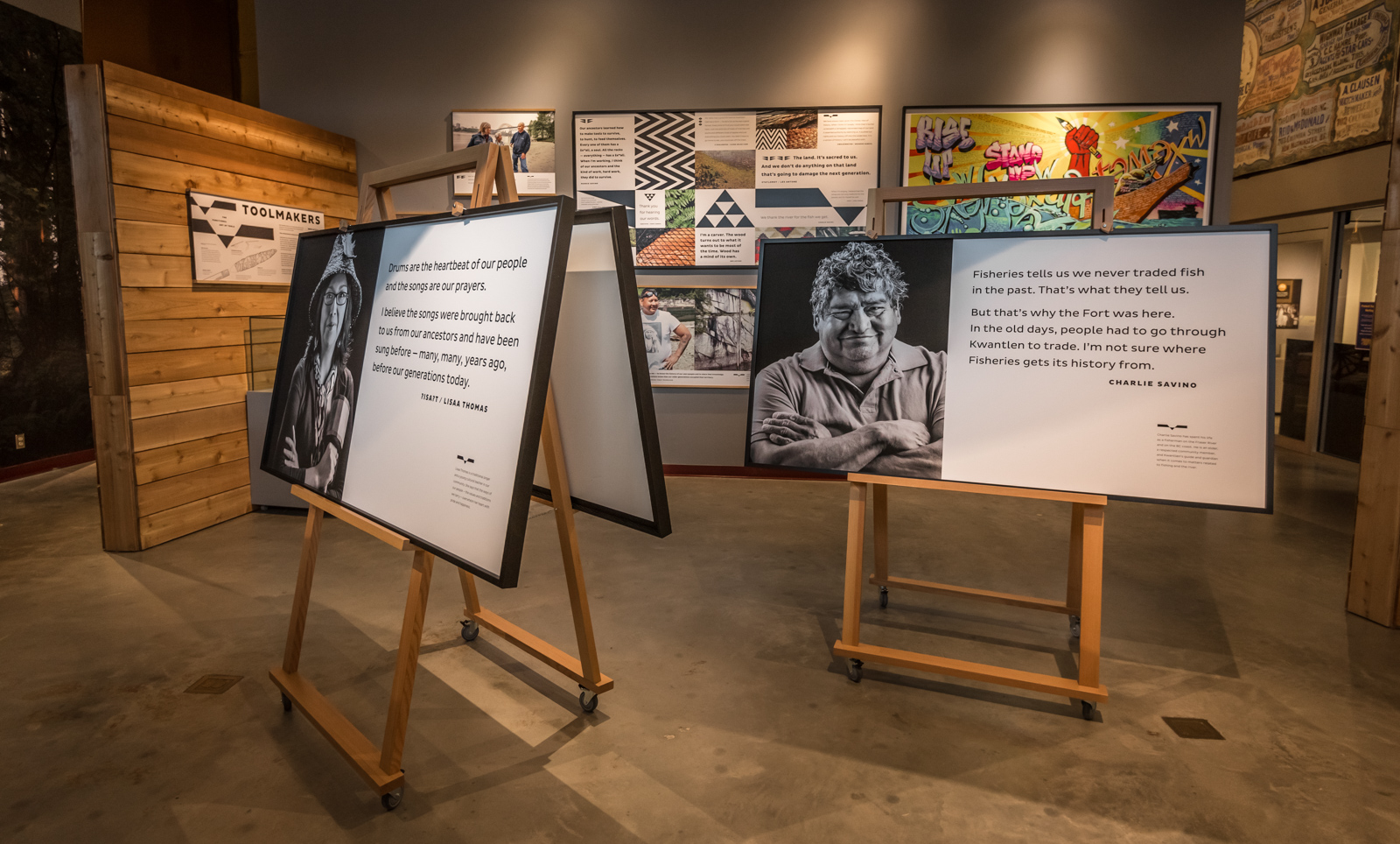
Detail of ‘We Are Kwantlen’
The Hall “is a first of its kind–a space of gathering, storytelling and exhibition that is voiced completely by the communities it represents–Katzie First Nation, Kwantlen First Nation and Semiahmoo First Nation, Surrey’s three land-based Nations. The Indigenous Hall will evolve and change as relationships grow and strengthen. It is a dynamic and alive space intended to educate and story tell.” (Museum of Surrey website)
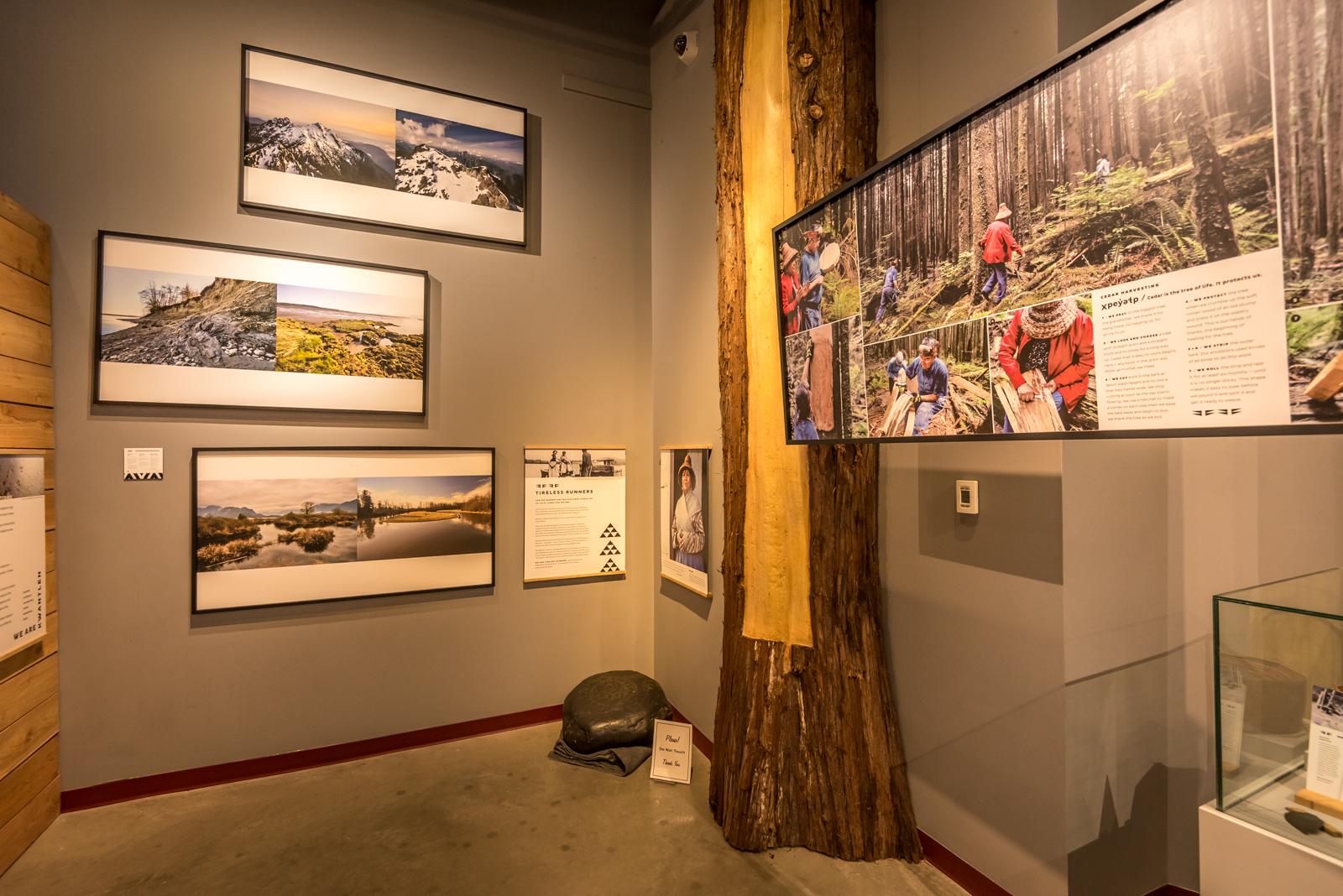
Detail of ‘We Are Kwantlen’
The Hall “is a first of its kind–a space of gathering, storytelling and exhibition that is voiced completely by the communities it represents–Katzie First Nation, Kwantlen First Nation and Semiahmoo First Nation, Surrey’s three land-based Nations. The Indigenous Hall will evolve and change as relationships grow and strengthen. It is a dynamic and alive space intended to educate and story tell.” (Museum of Surrey website)
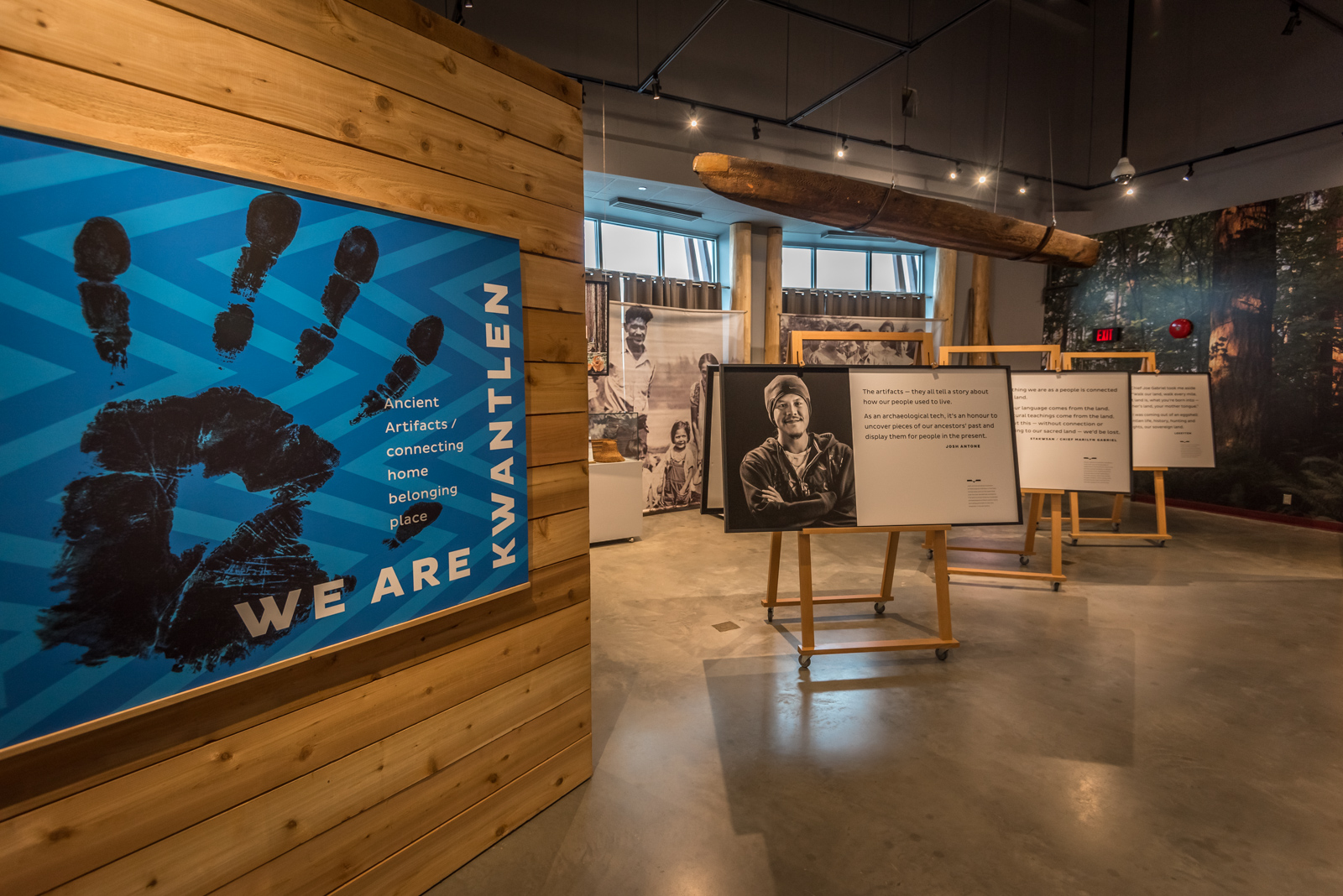
Detail of ‘We Are Kwantlen’
The Hall “is a first of its kind–a space of gathering, storytelling and exhibition that is voiced completely by the communities it represents–Katzie First Nation, Kwantlen First Nation and Semiahmoo First Nation, Surrey’s three land-based Nations. The Indigenous Hall will evolve and change as relationships grow and strengthen. It is a dynamic and alive space intended to educate and story tell.” (Museum of Surrey website)
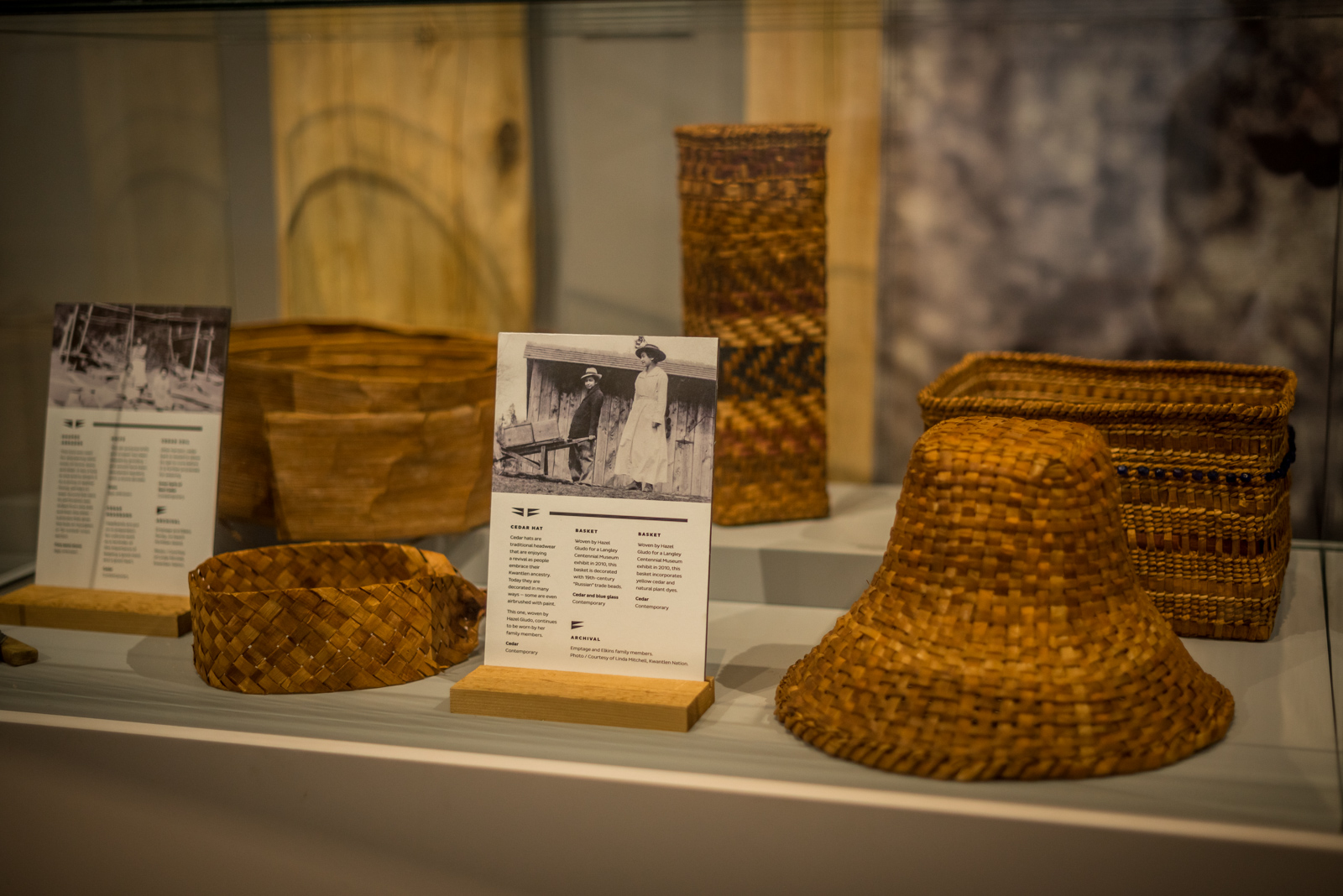
Detail of ‘We Are Kwantlen’ in the ‘Indigenous Hall’
‘We Are Kwantlen’ held in the ‘Indigenous Hall’ presented by Katzie First Nation, Kwantlen First Nation and Semiahmoo First Nation.
The Hall “is a first of its kind–a space of gathering, storytelling and exhibition that is voiced completely by the communities it represents–Katzie First Nation, Kwantlen First Nation and Semiahmoo First Nation, Surrey’s three land-based Nations. The Indigenous Hall will evolve and change as relationships grow and strengthen. It is a dynamic and alive space intended to educate and story tell.” (Museum of Surrey website)
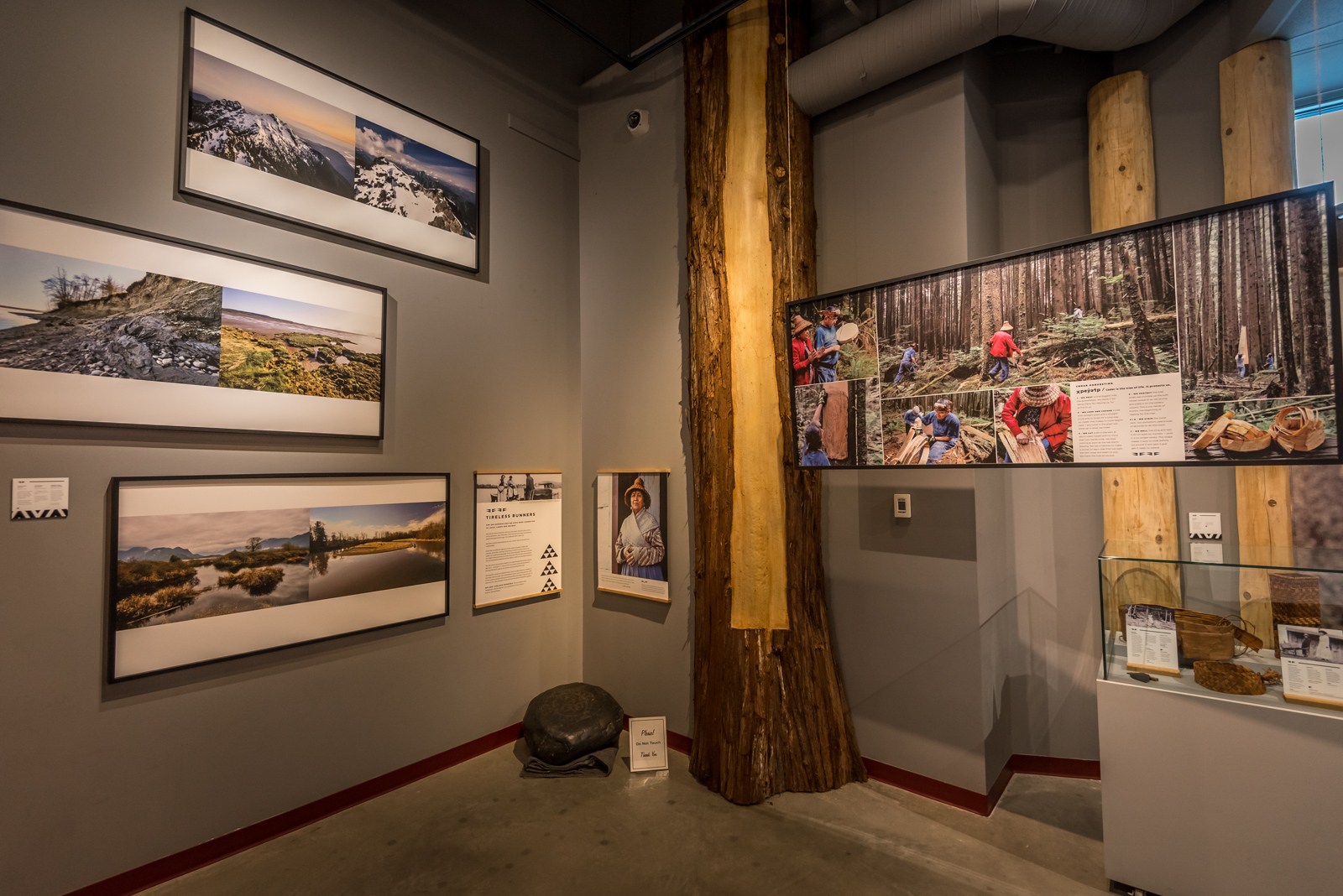
Detail of ‘We Are Kwantlen’
‘We Are Kwantlen’ held in the ‘Indigenous Hall’ presented by Katzie First Nation, Kwantlen First Nation and Semiahmoo First Nation.
The Hall “is a first of its kind–a space of gathering, storytelling and exhibition that is voiced completely by the communities it represents–Katzie First Nation, Kwantlen First Nation and Semiahmoo First Nation, Surrey’s three land-based Nations. The Indigenous Hall will evolve and change as relationships grow and strengthen. It is a dynamic and alive space intended to educate and story tell.” (Museum of Surrey website)
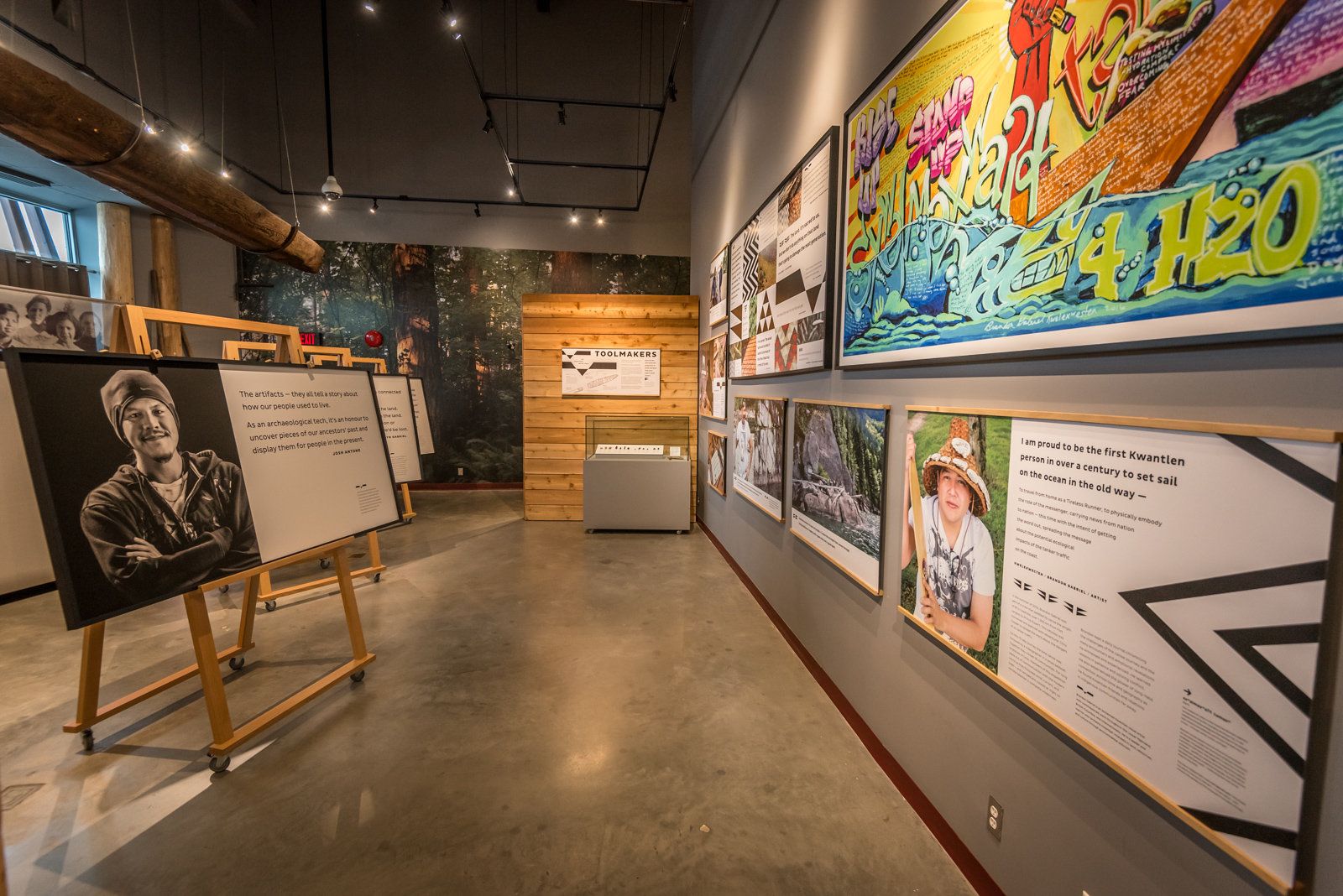
Detail of ‘We Are Kwantlen’
The Hall “is a first of its kind–a space of gathering, storytelling and exhibition that is voiced completely by the communities it represents–Katzie First Nation, Kwantlen First Nation and Semiahmoo First Nation, Surrey’s three land-based Nations. The Indigenous Hall will evolve and change as relationships grow and strengthen. It is a dynamic and alive space intended to educate and story tell.” (Museum of Surrey website)
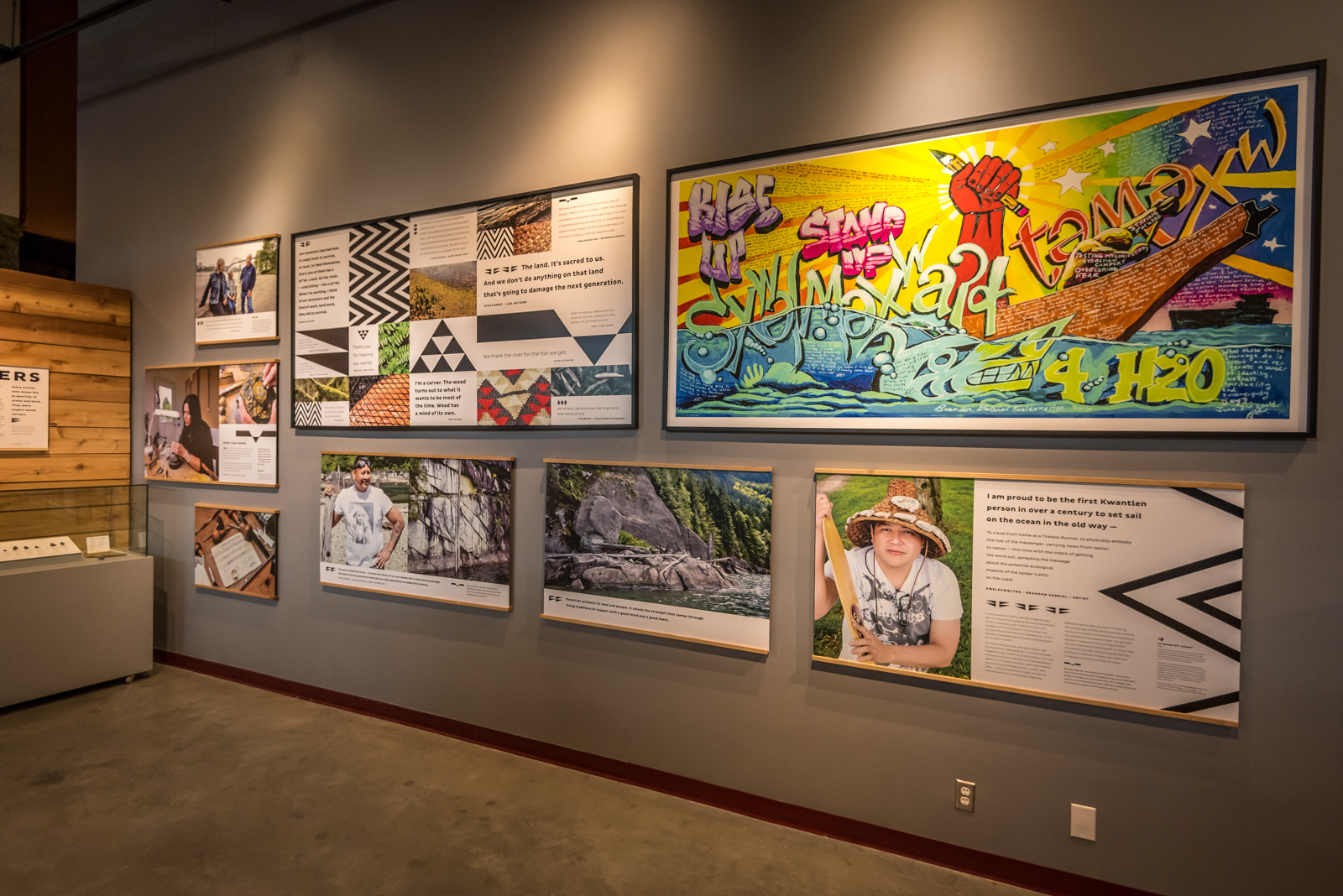
Detail of ‘We Are Kwantlen’
The Hall “is a first of its kind–a space of gathering, storytelling and exhibition that is voiced completely by the communities it represents–Katzie First Nation, Kwantlen First Nation and Semiahmoo First Nation, Surrey’s three land-based Nations. The Indigenous Hall will evolve and change as relationships grow and strengthen. It is a dynamic and alive space intended to educate and story tell.” (Museum of Surrey website)
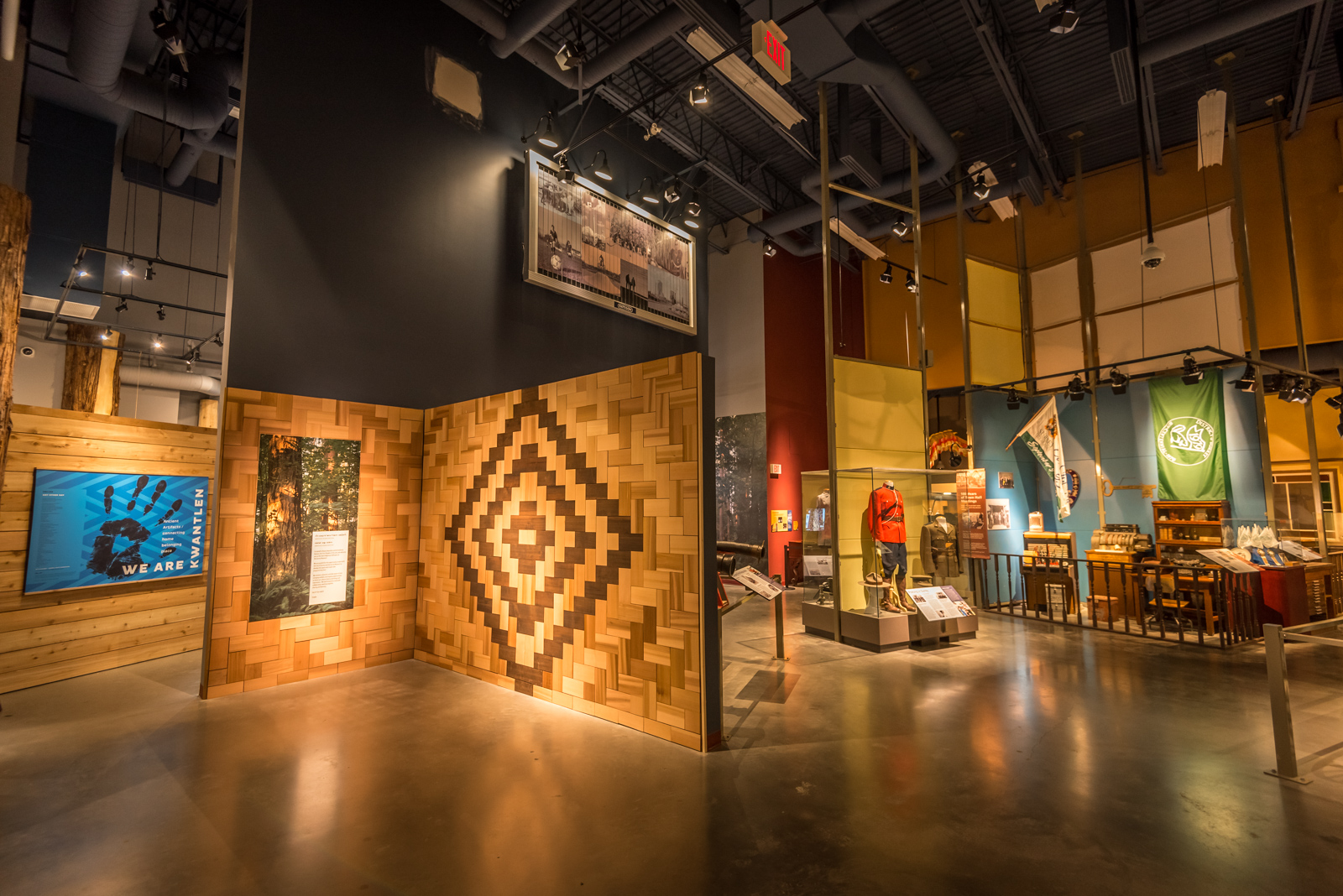
A view of both the entrance to the ‘Indigenous Hall’ and the ‘Surrey Stories Gallery’
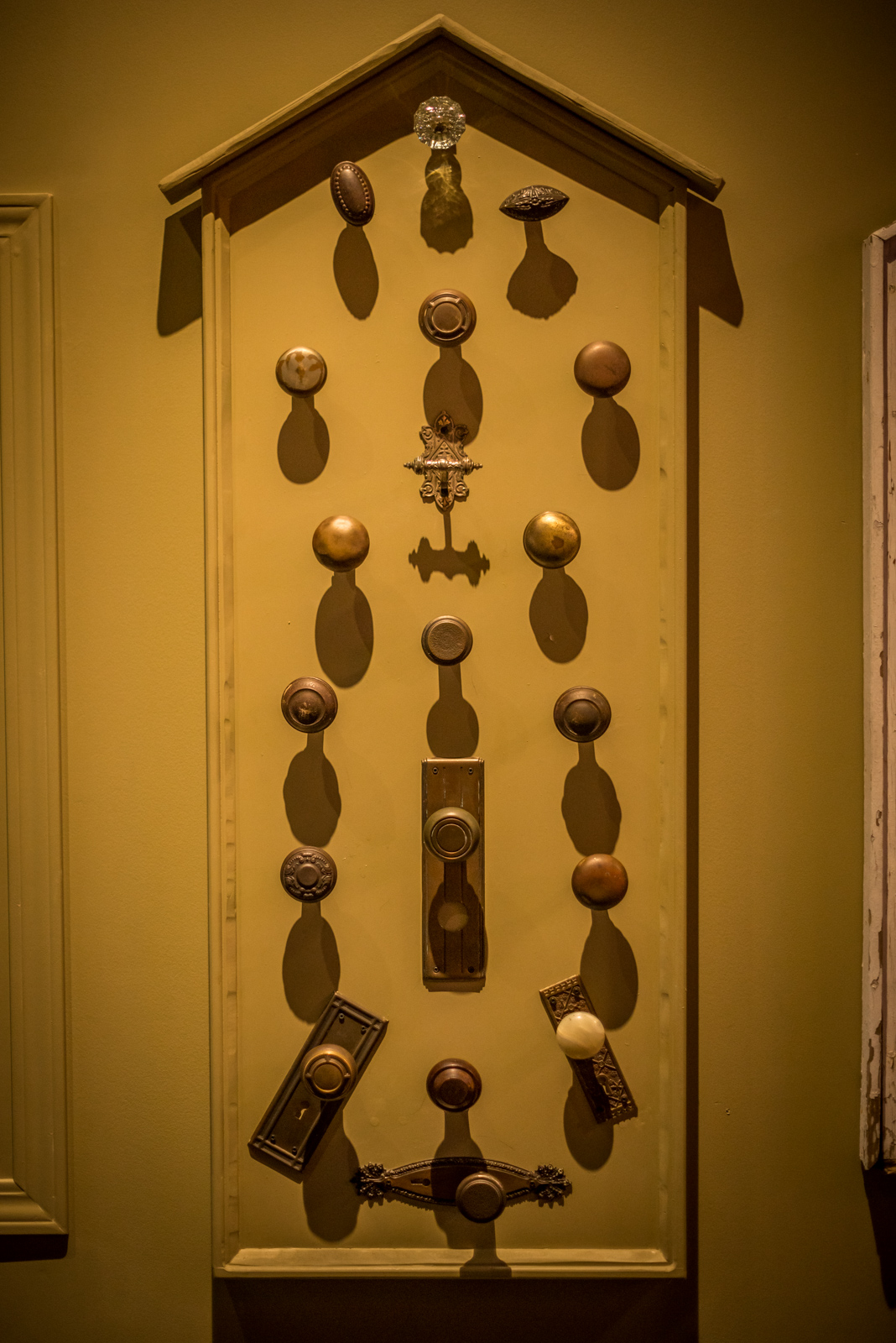
A display of vintage doorknobs in the ‘Surrey Stories Gallery’
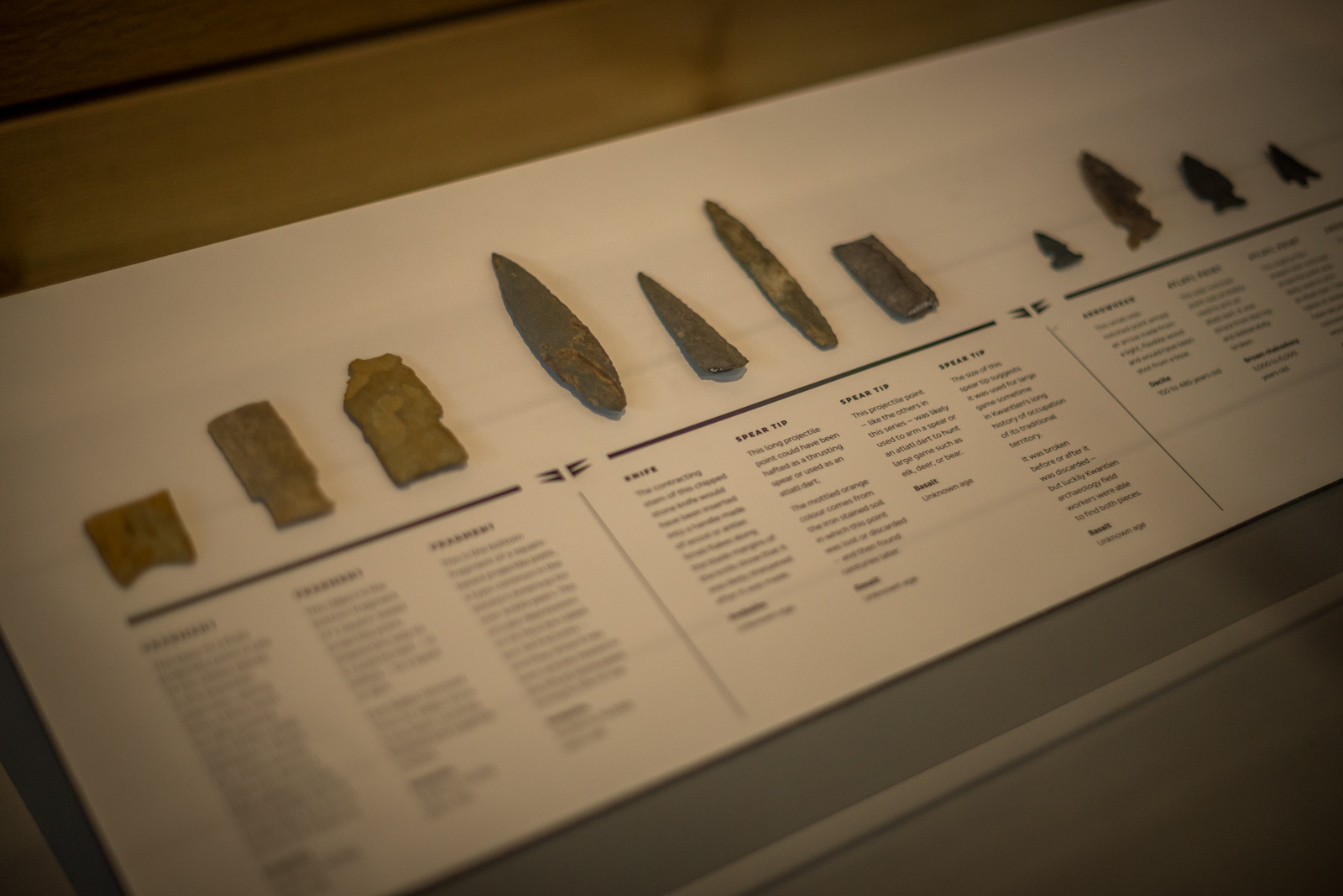
Arrow heads on display in the ‘Surrey Stories Gallery’

A display case from the ‘Surrey Stories Gallery’
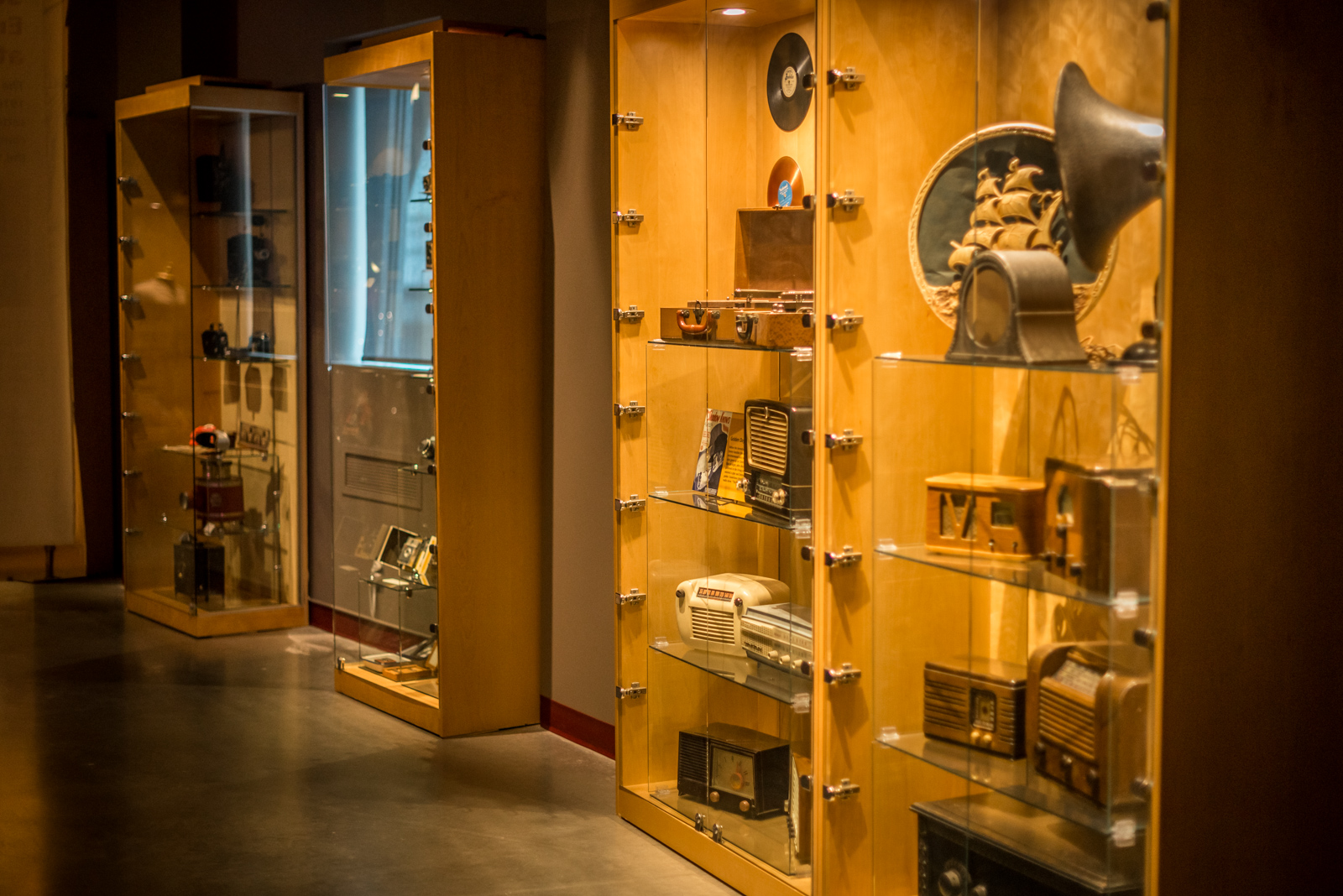
Display case in the ‘Surrey Stories Gallery’

A display of lumber equipment in the ‘Surrey Stories Gallery’
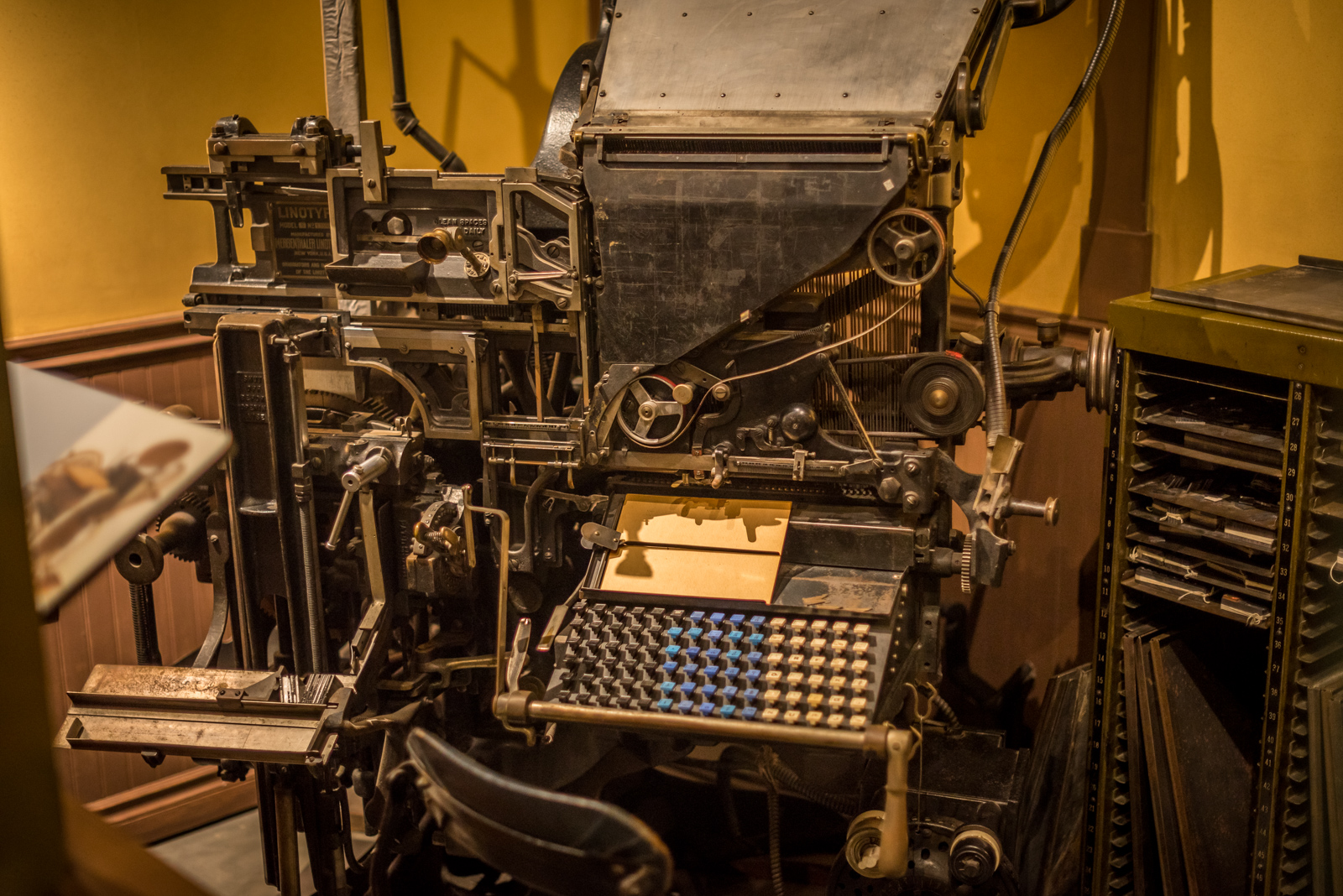
A linotype machine on display in the ‘Surrey Stories Gallery’

Detail of a linotype machine on display in the ‘Surrey Stories Gallery’
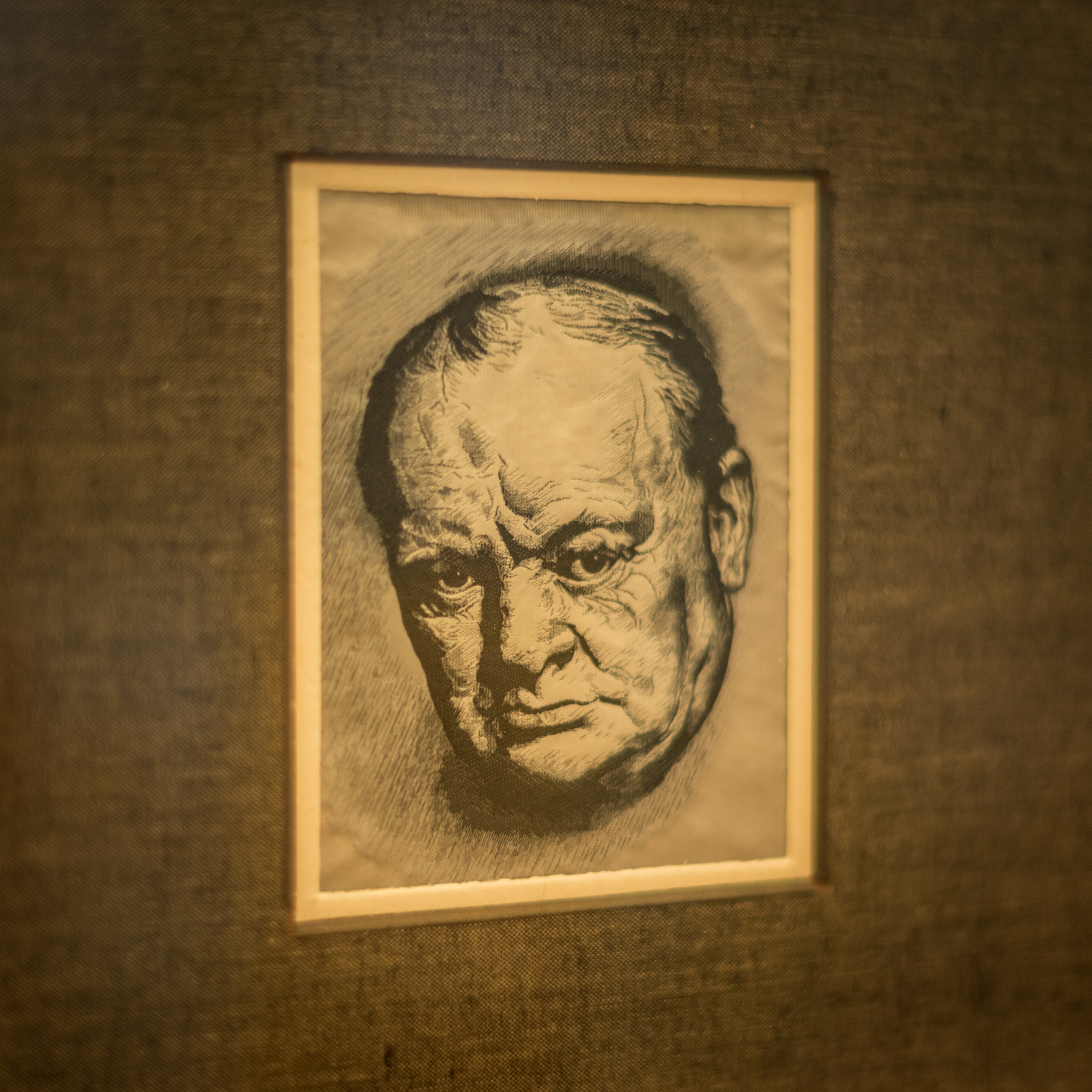
An etching if Winston Churchill on display in the ‘Surrey Stories Gallery’
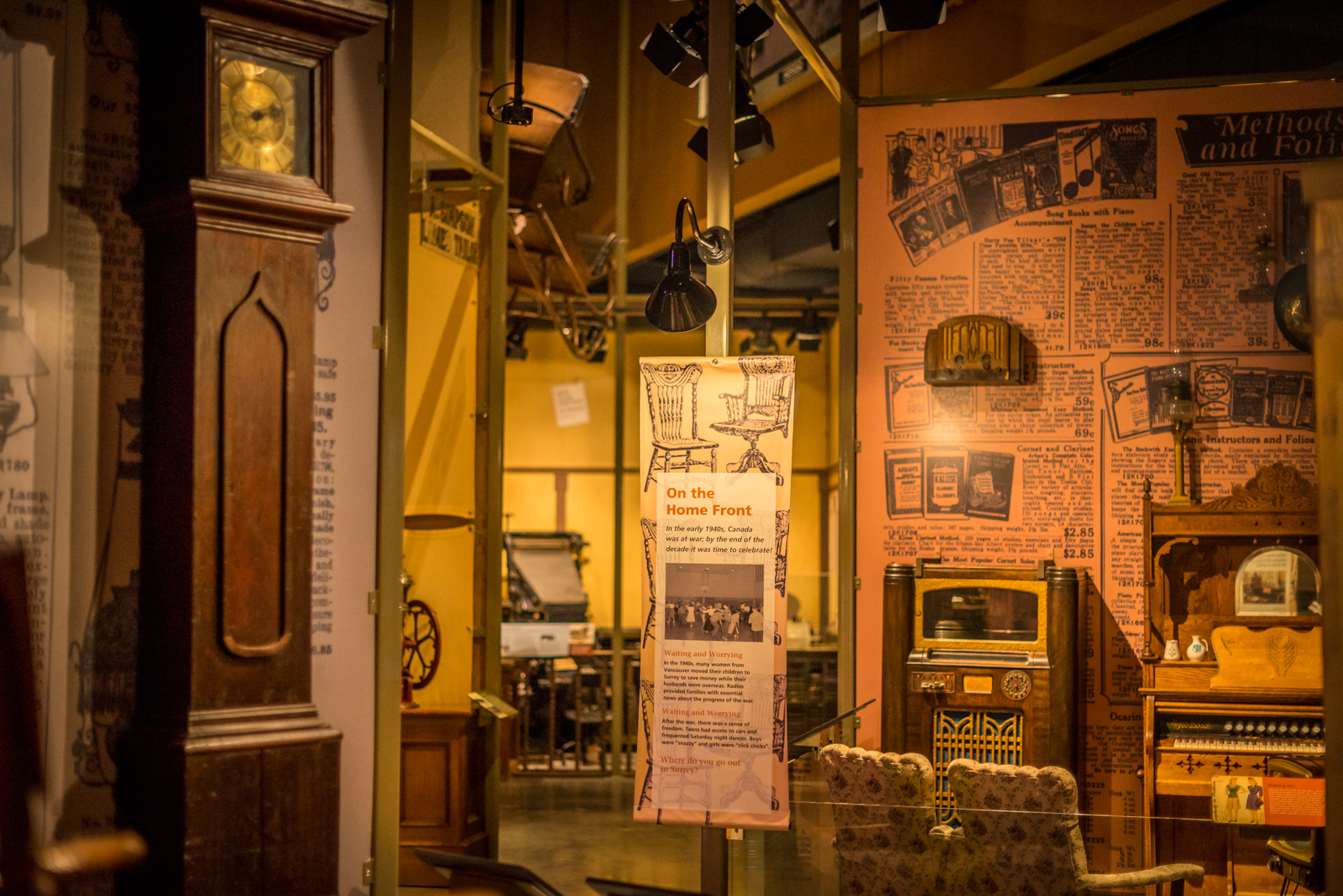
A display case from the ‘Surrey Stories Gallery’
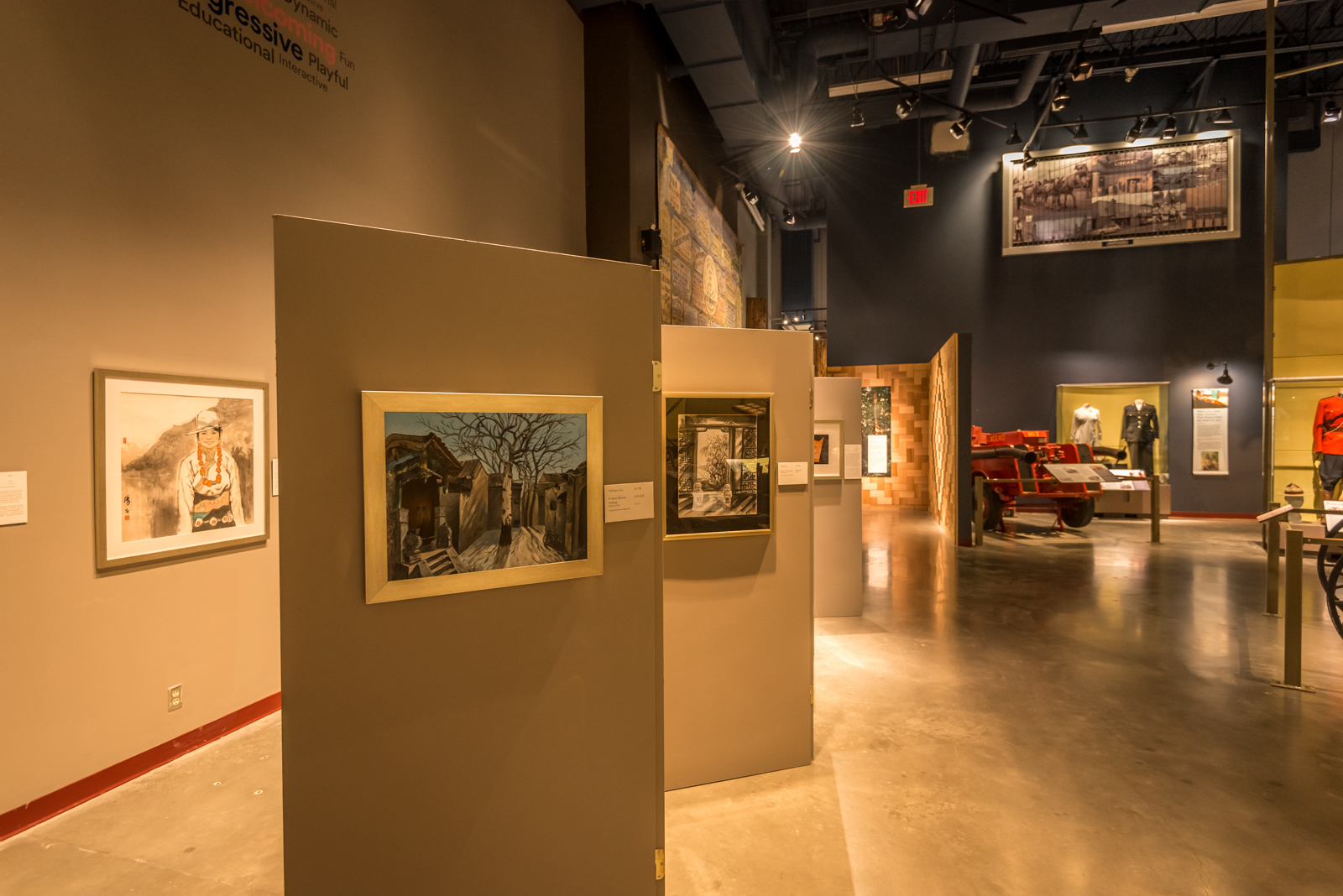
The ‘Surrey Stories Gallery’
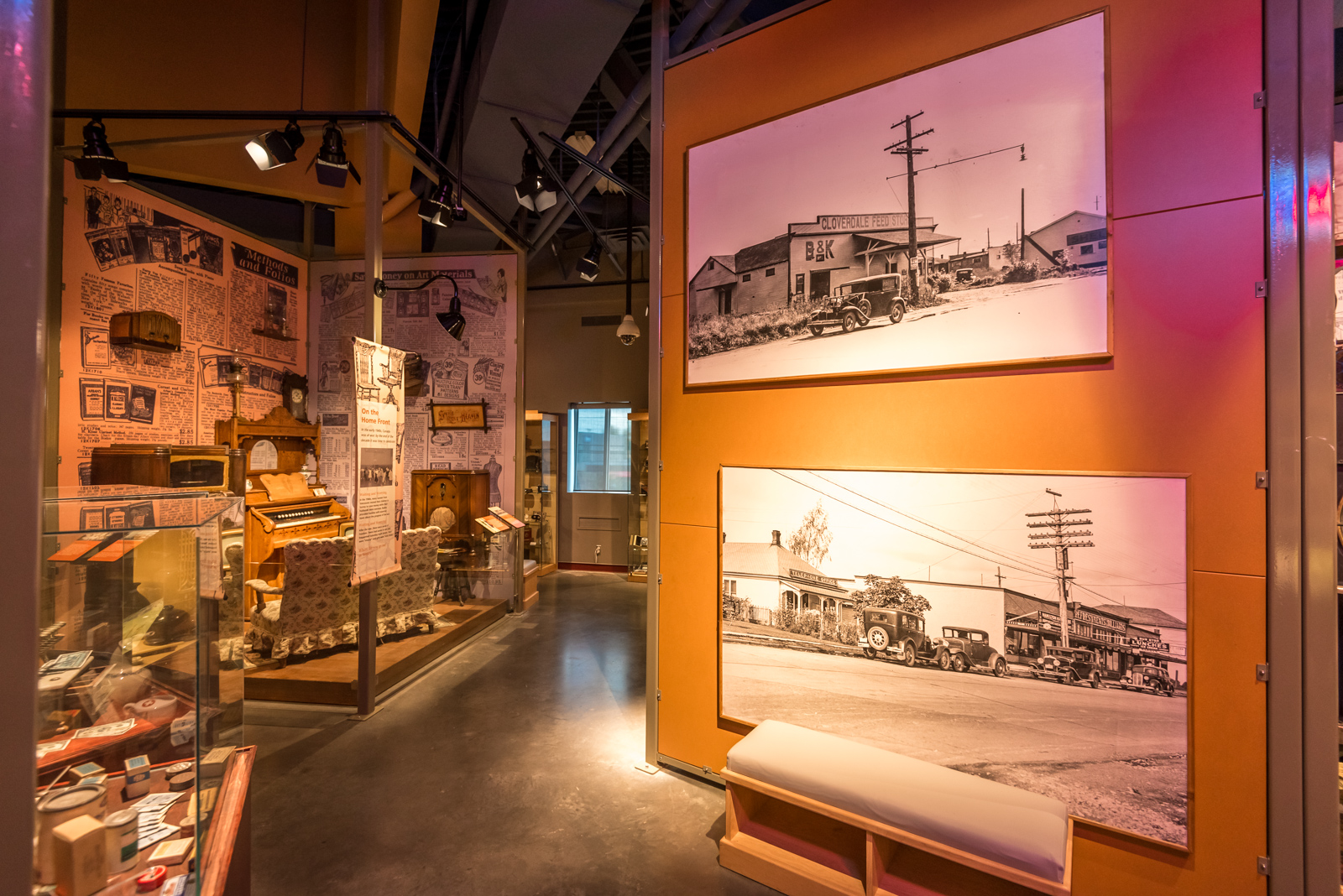
The ‘Surrey Stories Gallery’
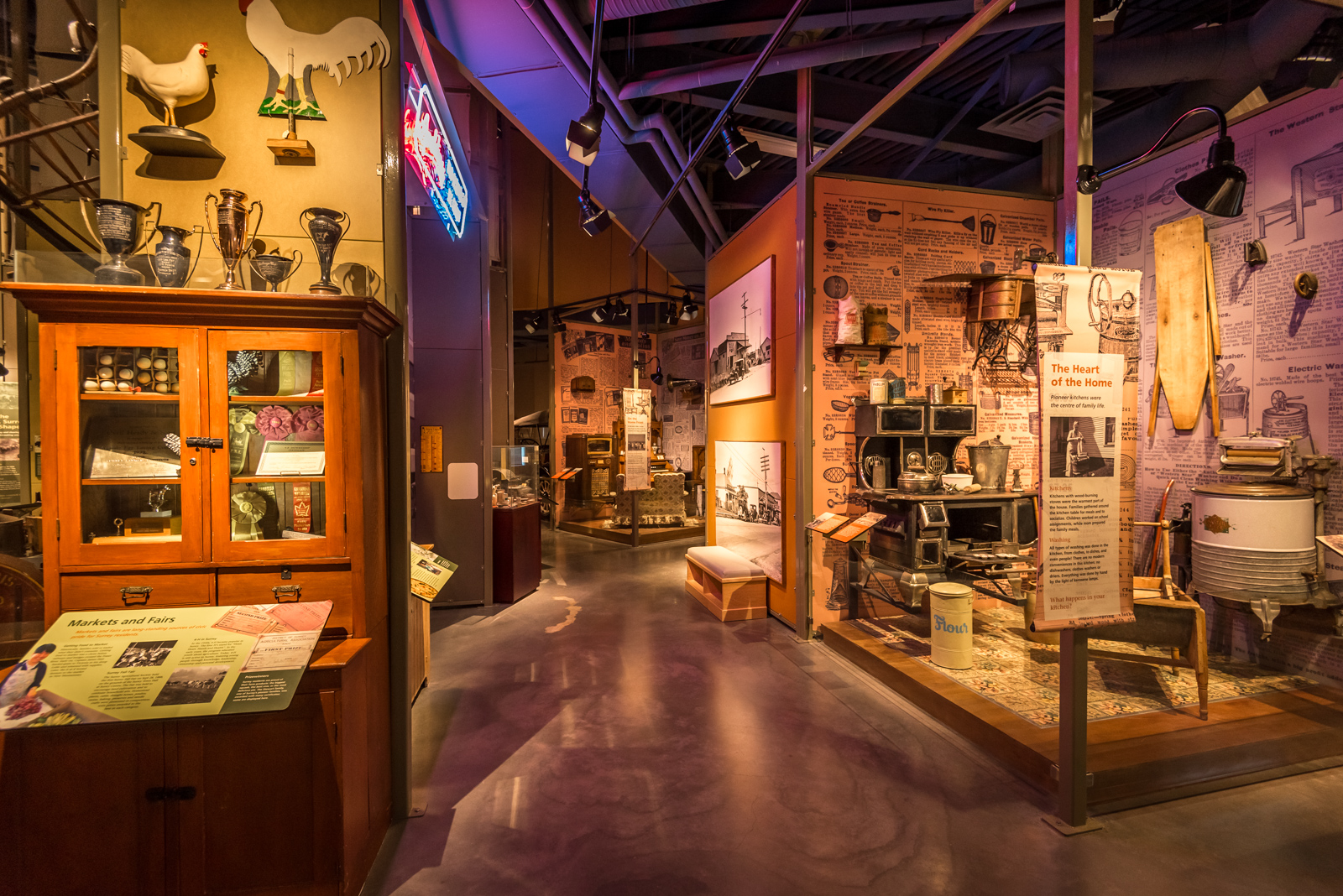
The ‘Surrey Stories Gallery’
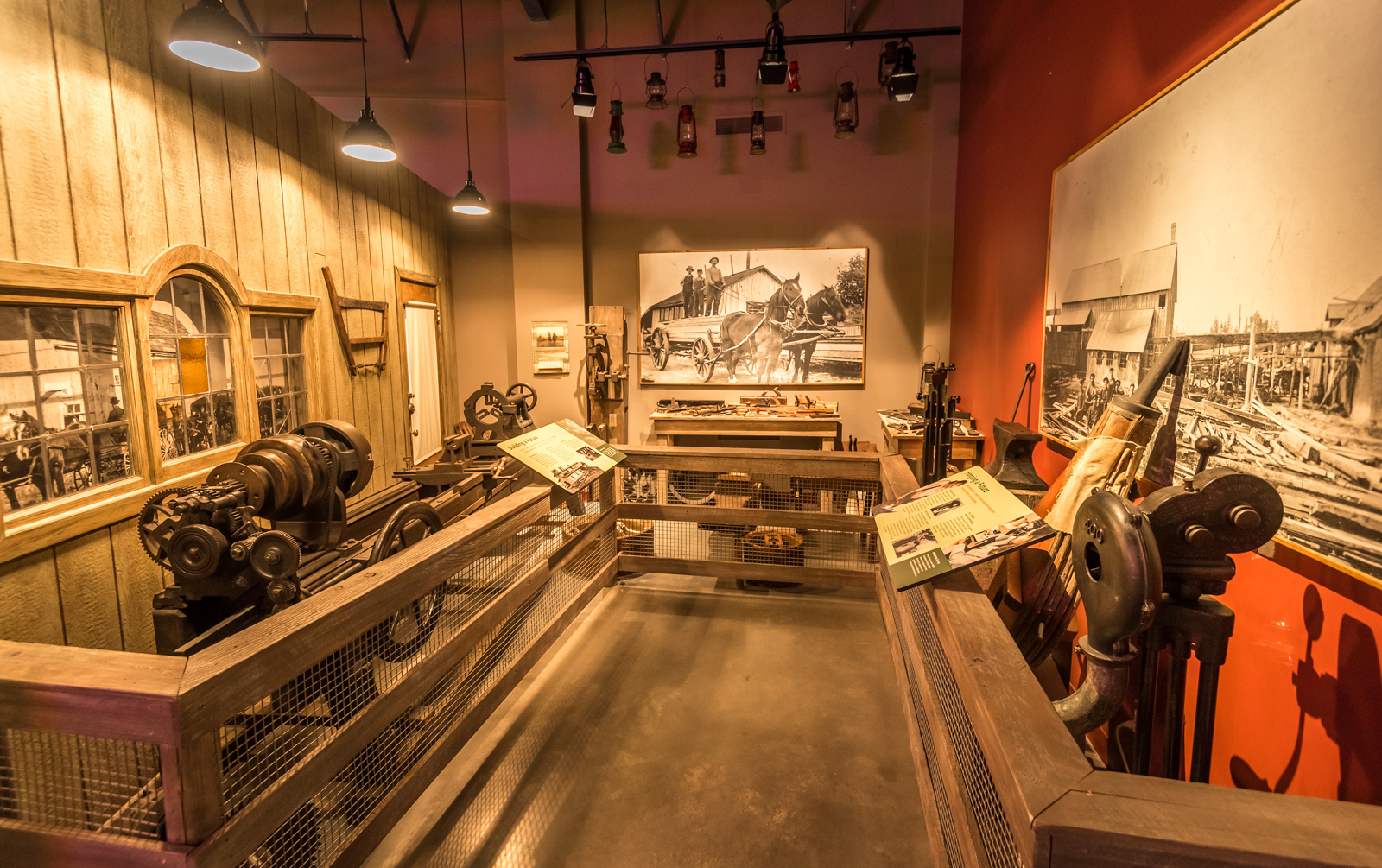
The ‘Surrey Stories Gallery’
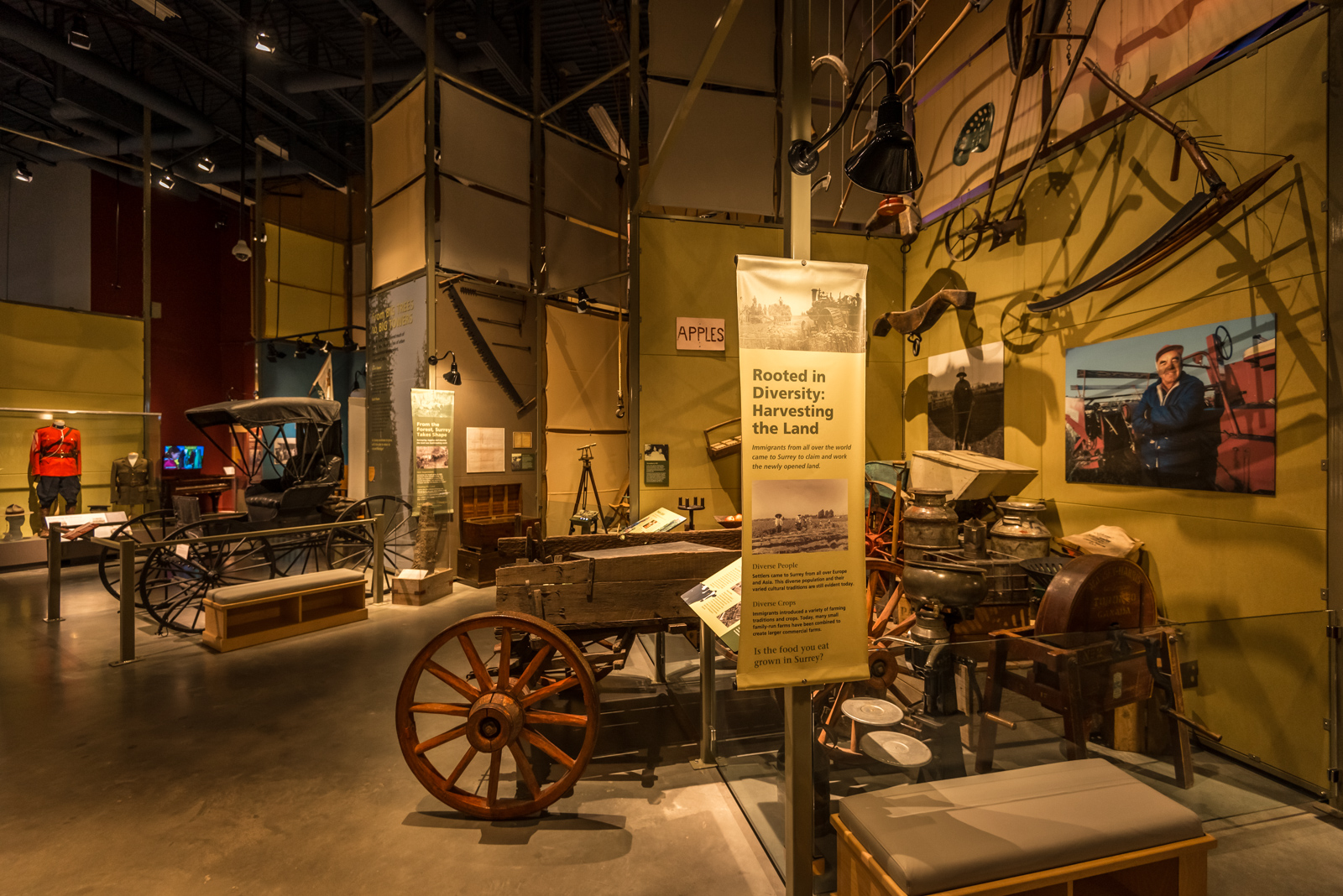
The ‘Surrey Stories Gallery’
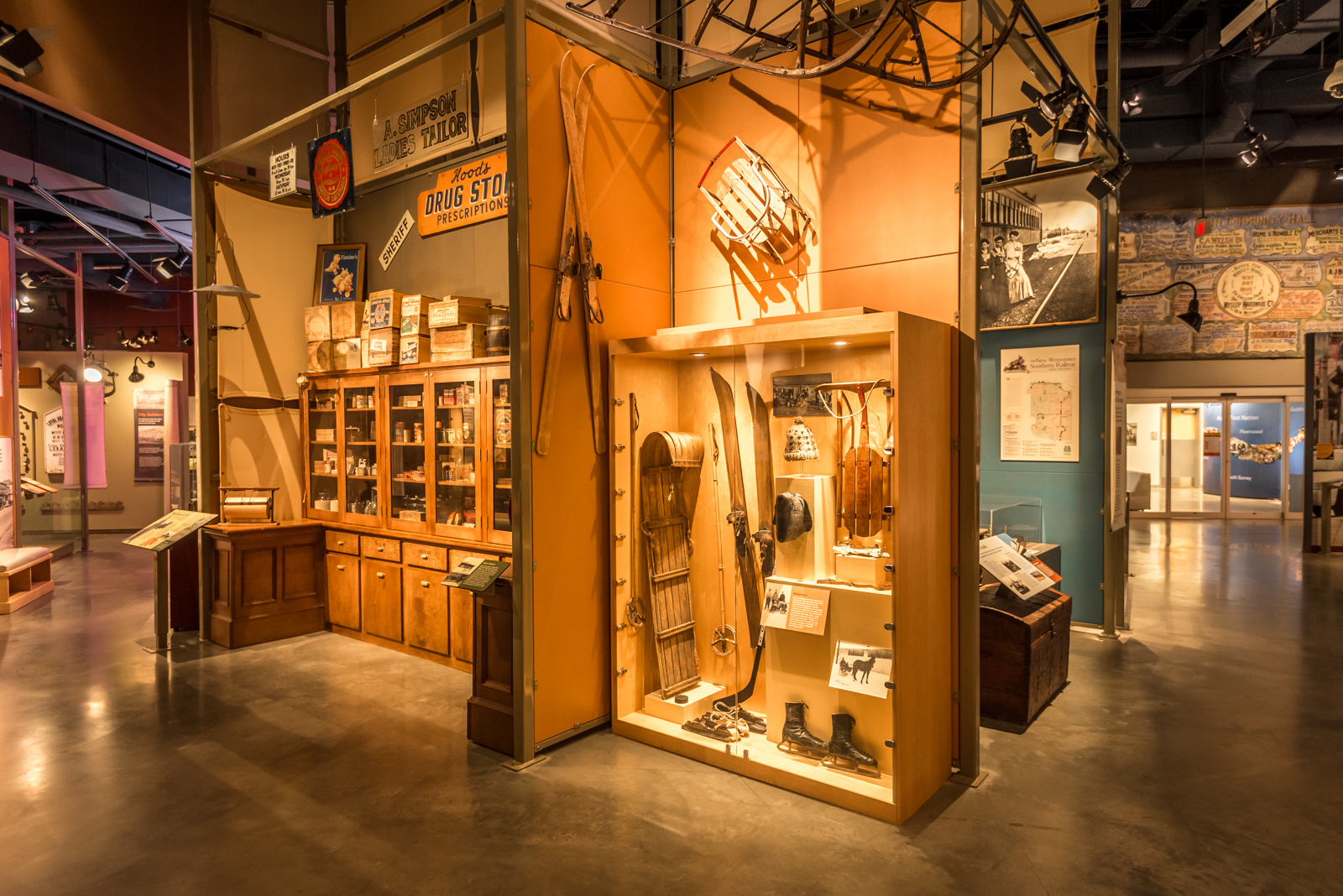
The ‘Surrey Stories Gallery’
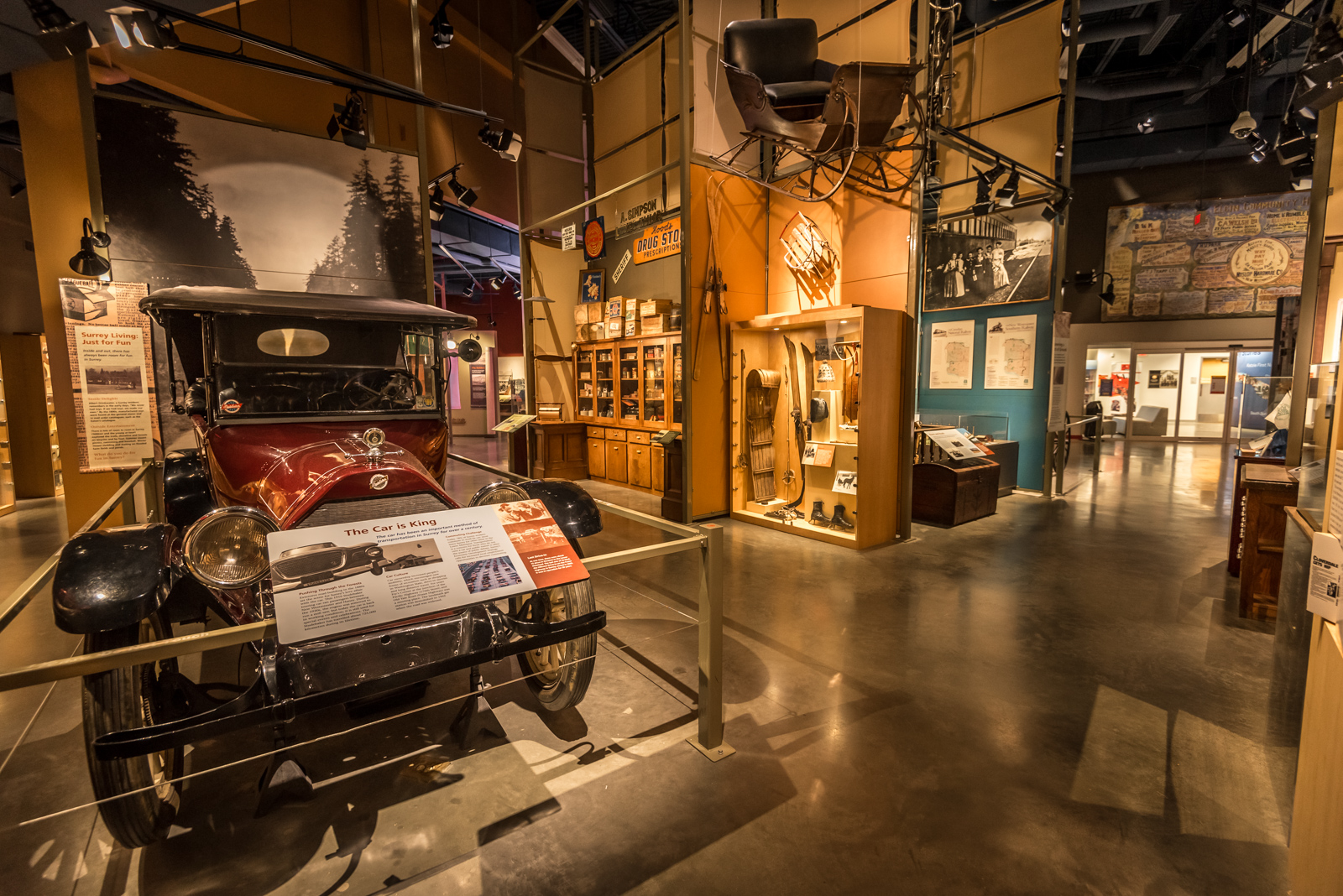
The ‘Surrey Stories Gallery’

The ‘Surrey Stories Gallery’
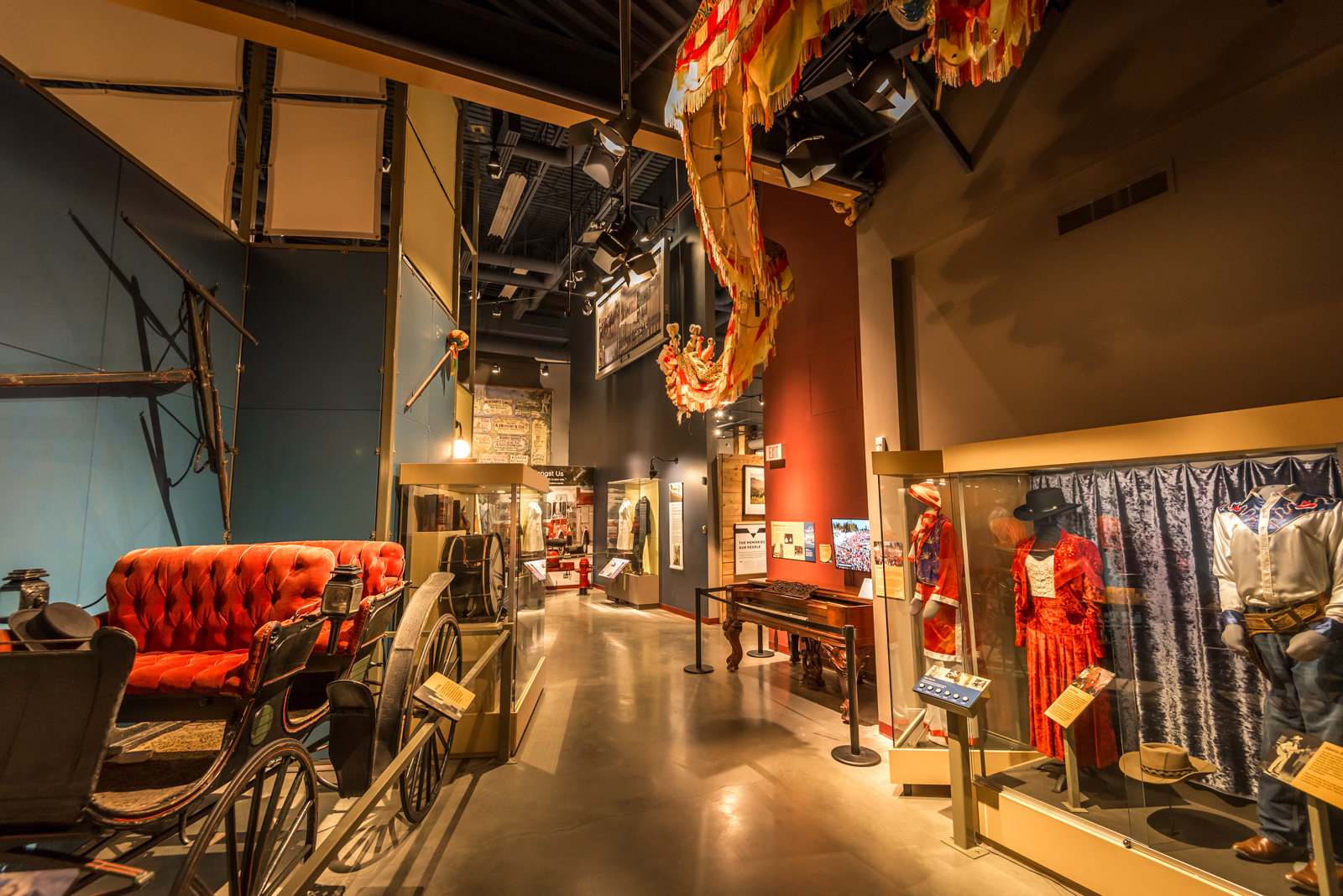
The ‘Surrey Stories Gallery’
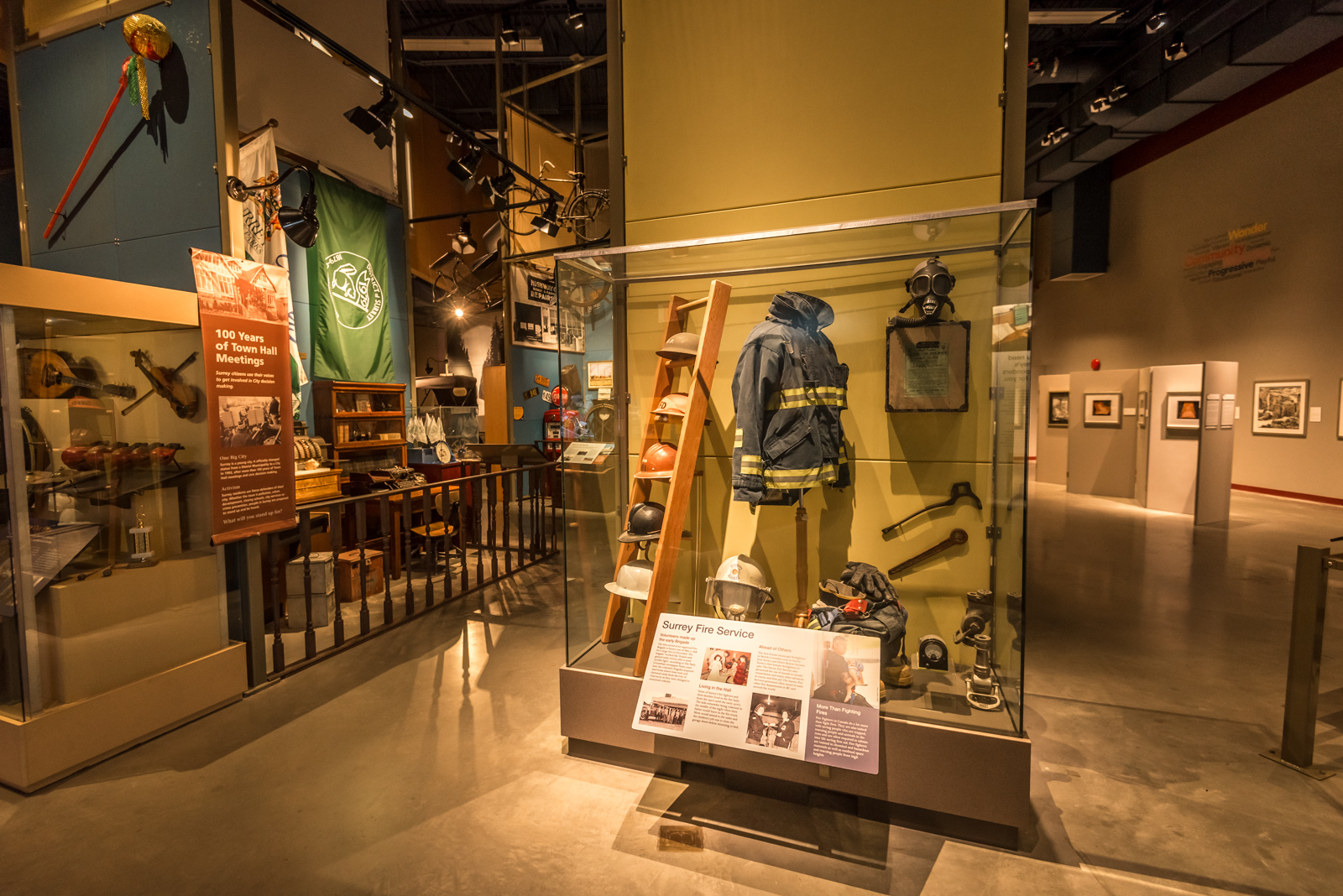
The ‘Surrey Stories Gallery’
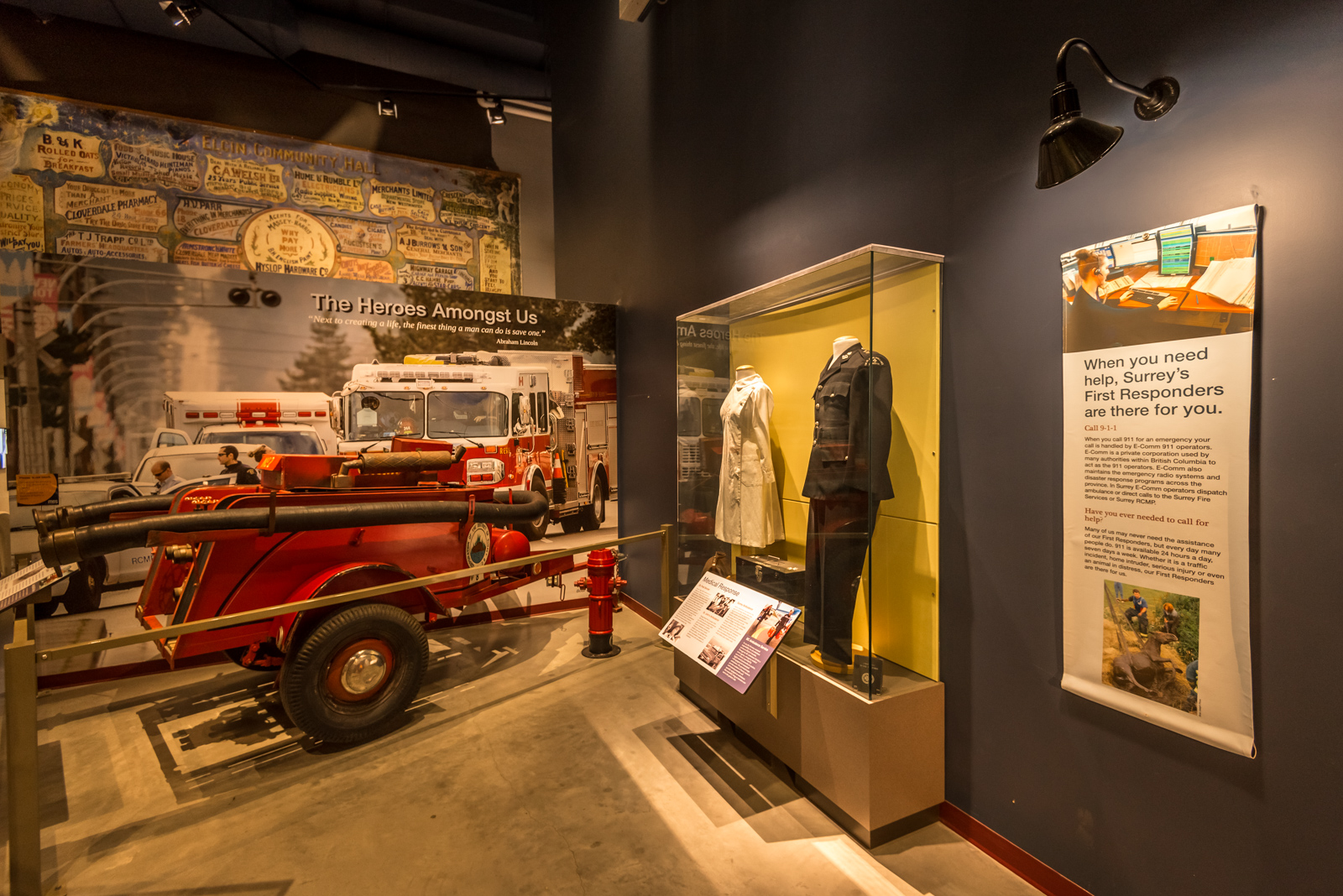
The ‘Surrey Stories’ Gallery
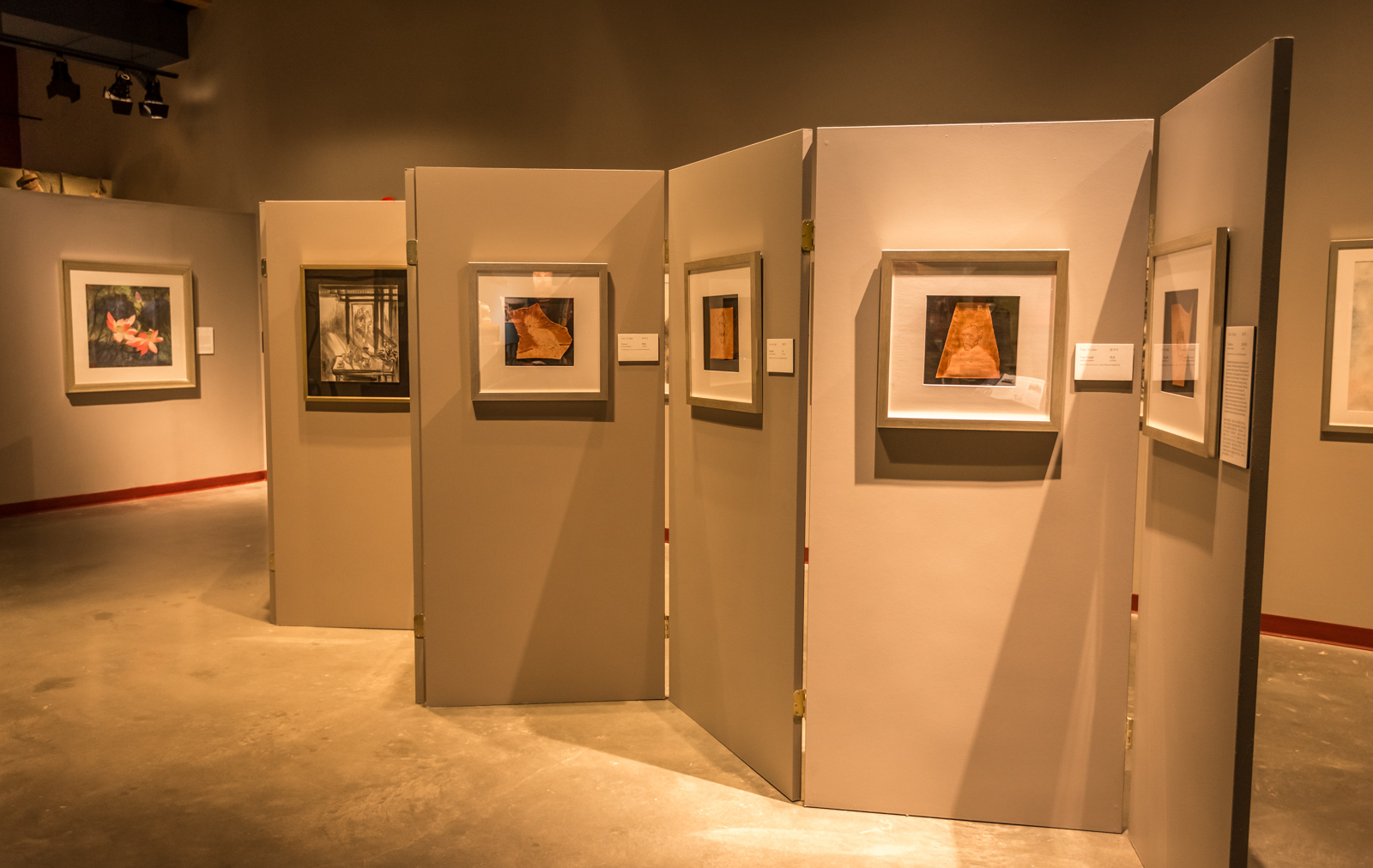
The ‘Surrey Stories’ Gallery
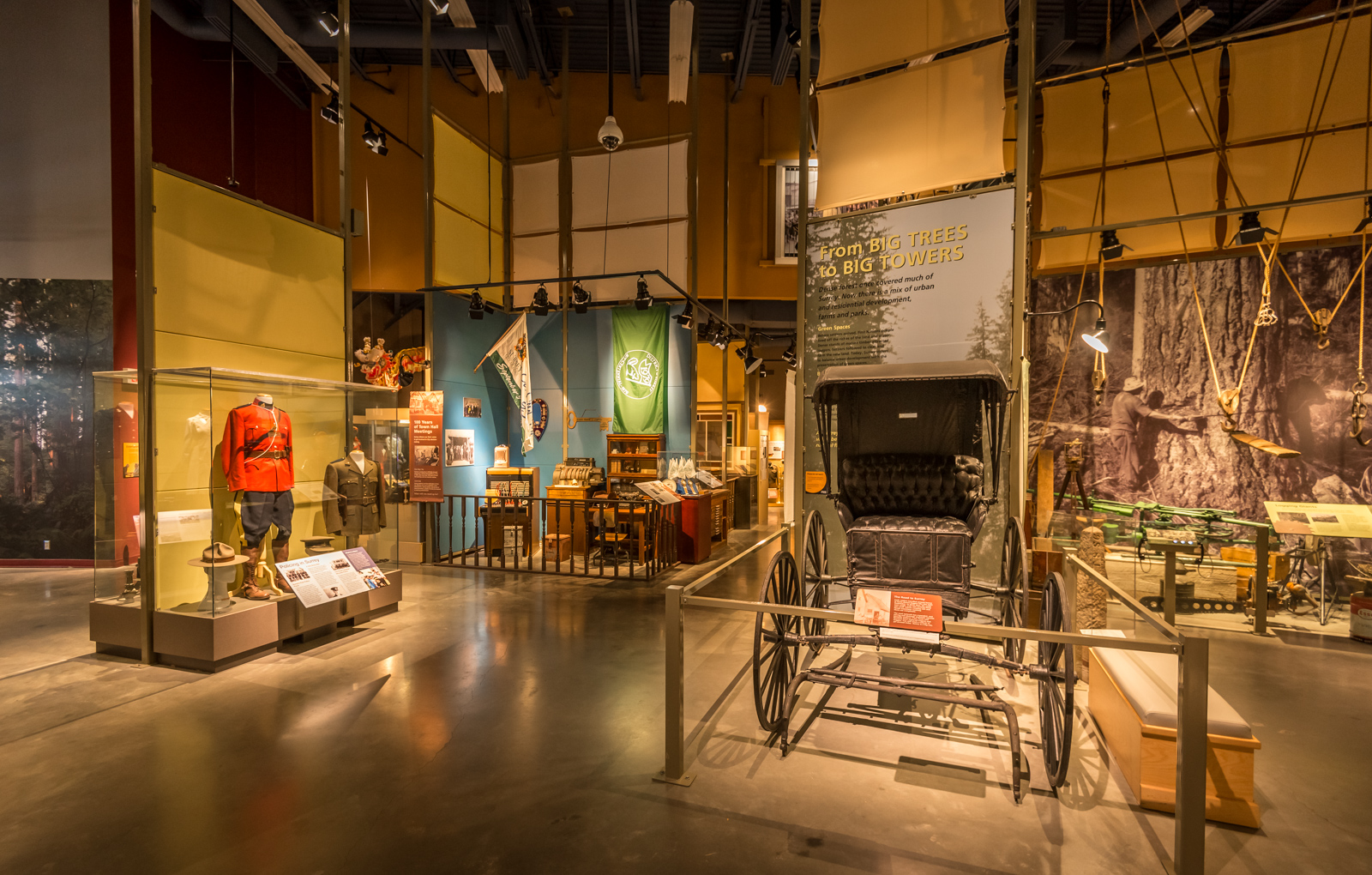
The ‘Surrey Stories’ Gallery
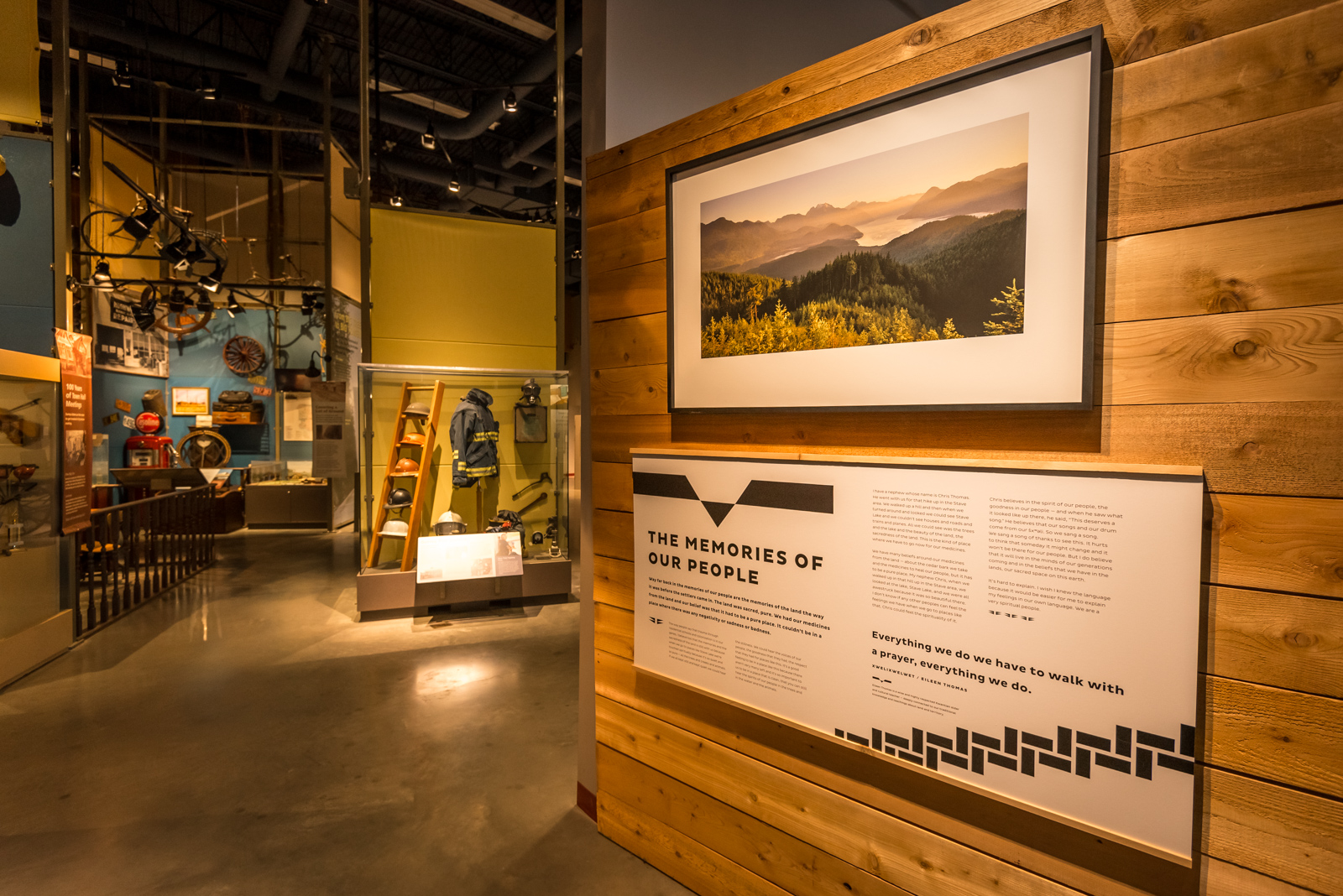
The ‘Surrey Stories’ Gallery
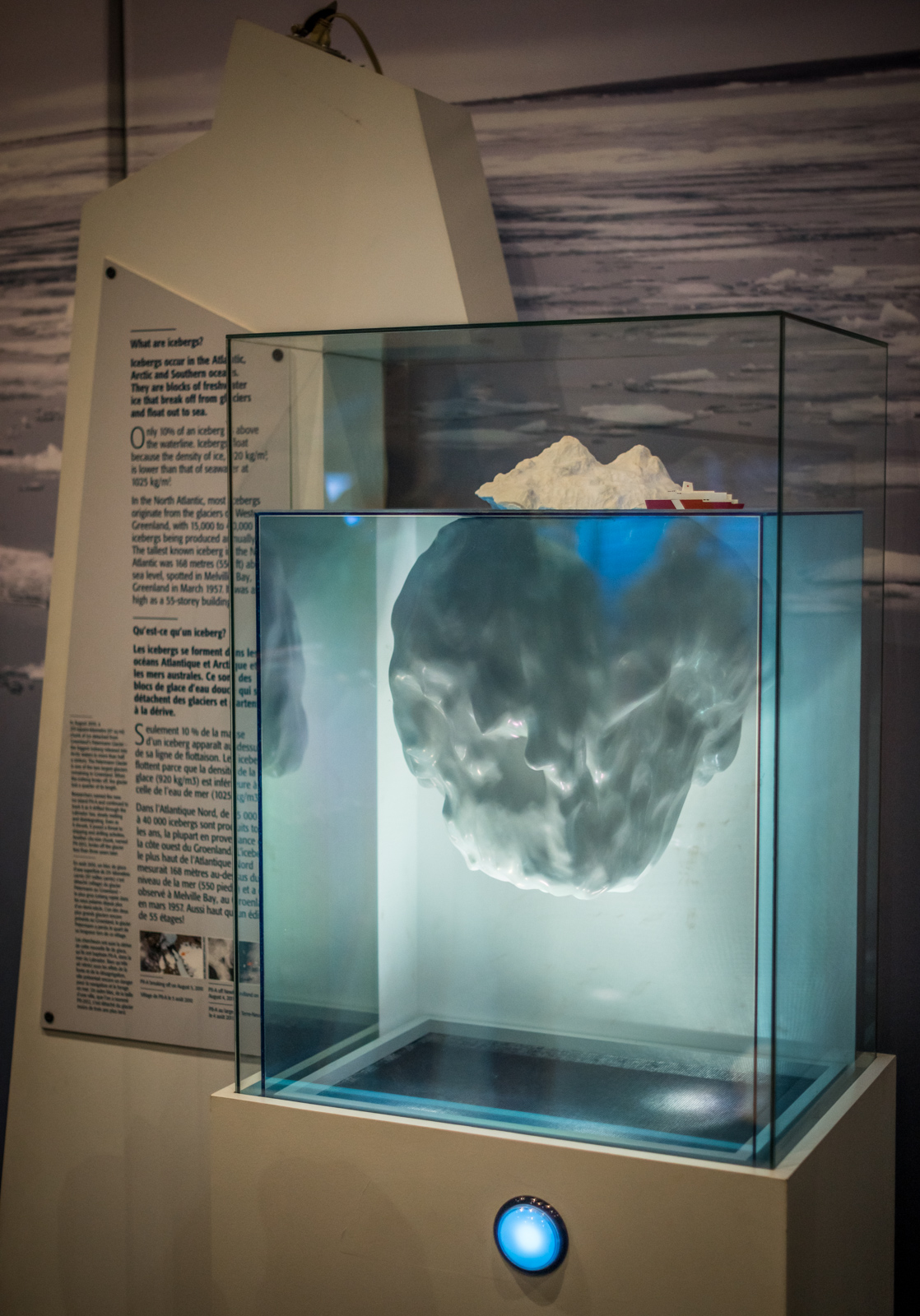
A display from ‘Arctic Voices’
‘Arctic Voices’ (March 5 – June 28, 2020), an exhibit co-produced by the Canadian Museum of Nature and Science North, designed to explored the Arctic's wildlife and the people who live there and how they’ve adapted to survive.
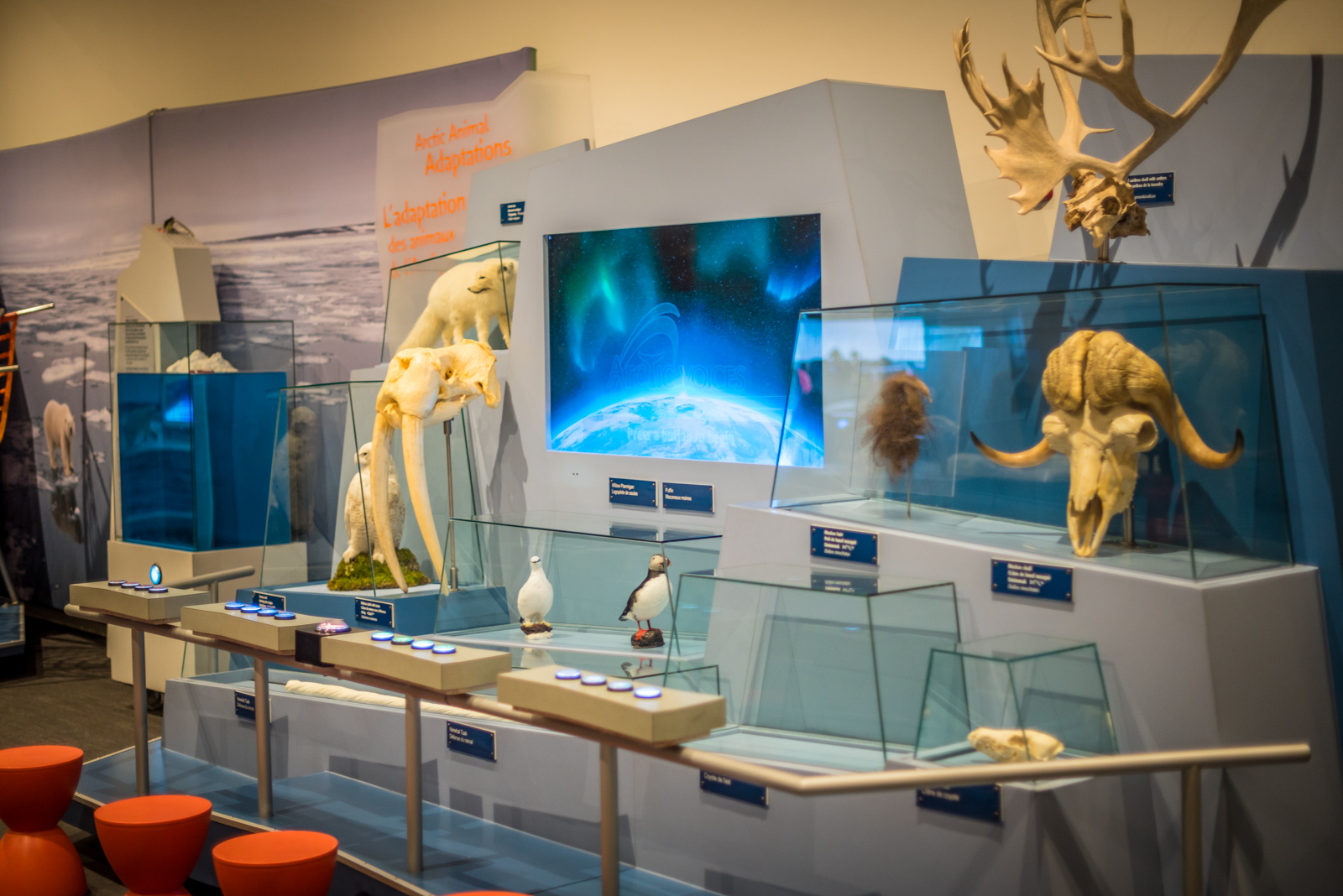
A display from ‘Arctic Voices’
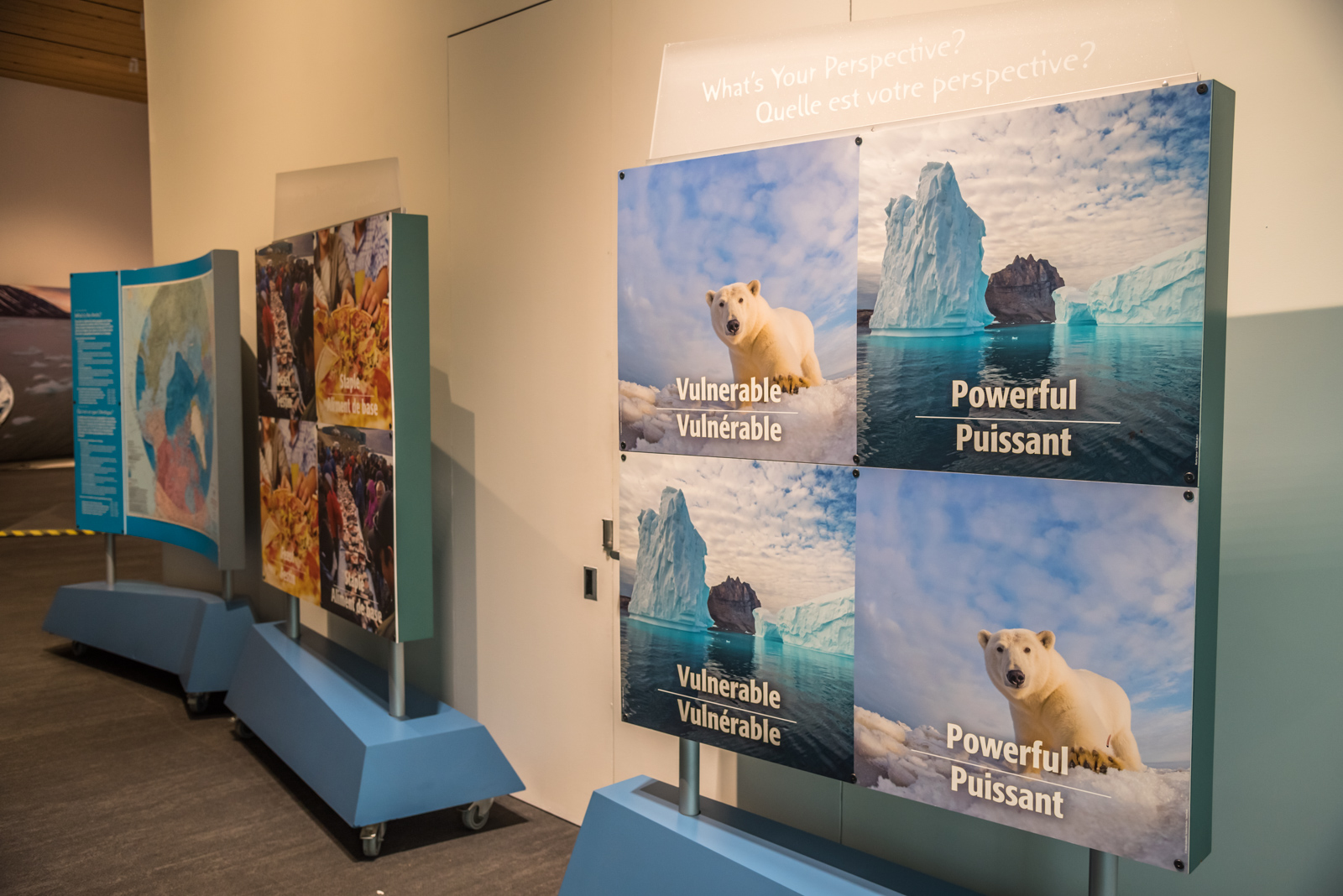
A display from ‘Arctic Voices’
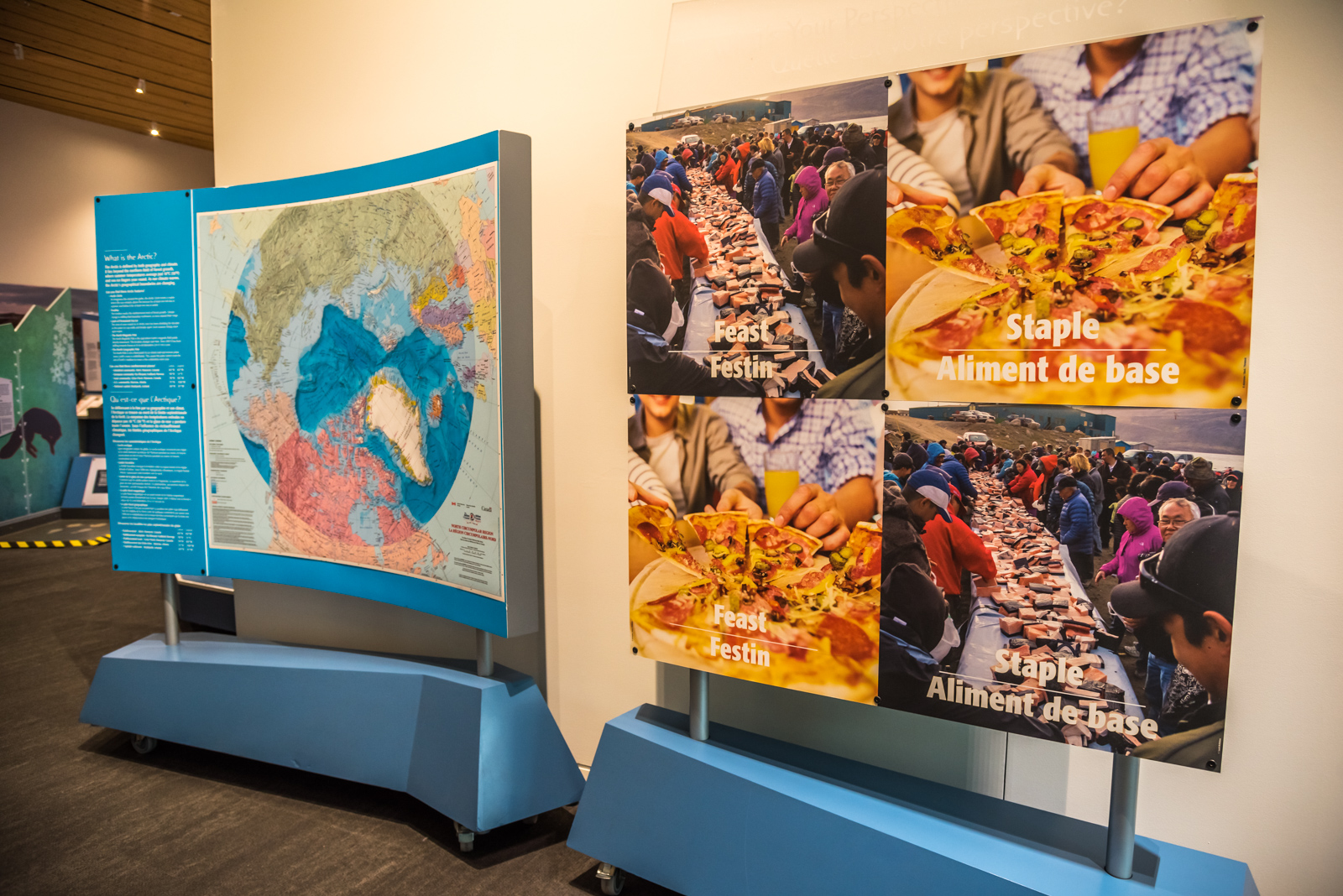
A display from ‘Arctic Voices’

A display from ‘Arctic Voices’
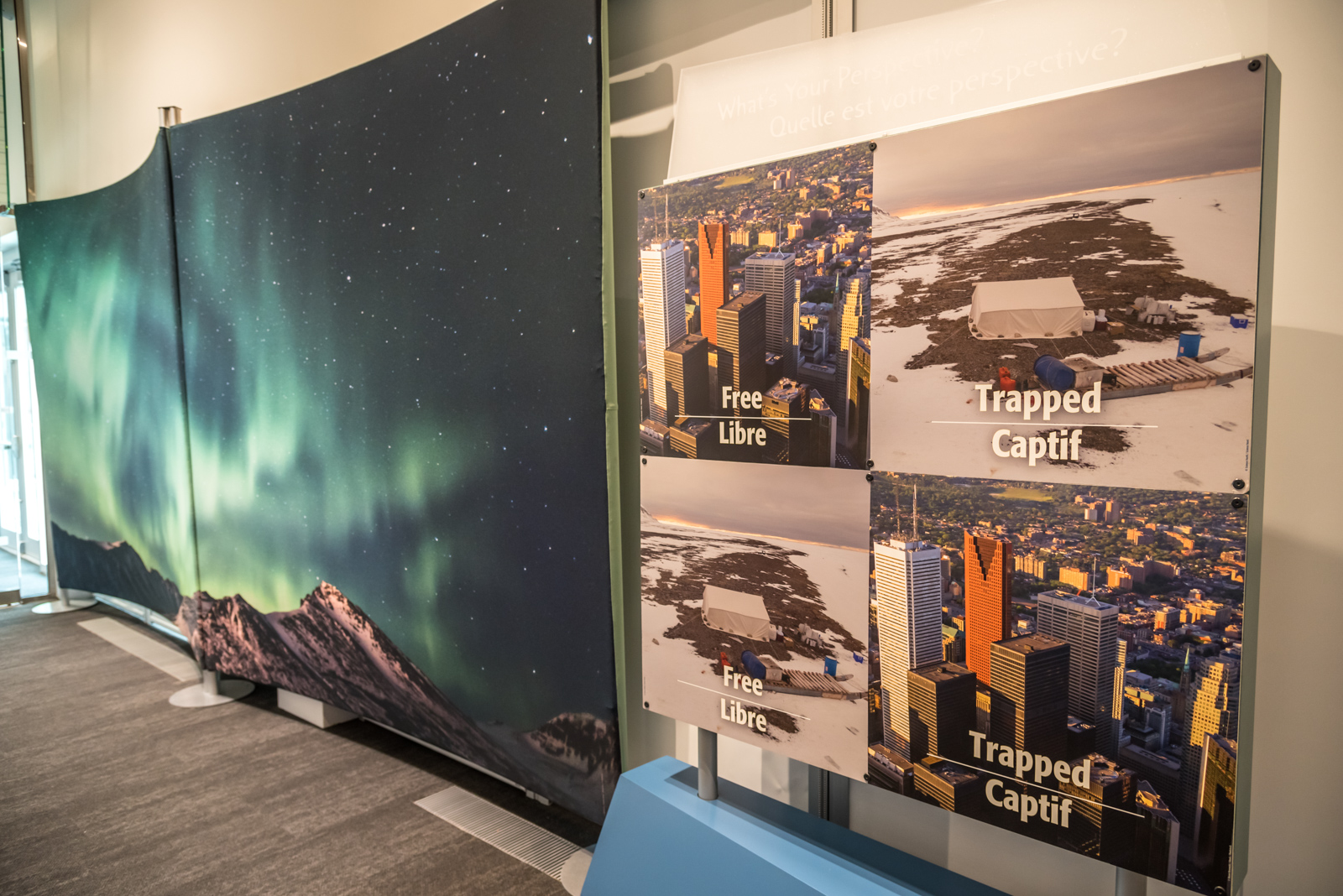
A display from ‘Arctic Voices’
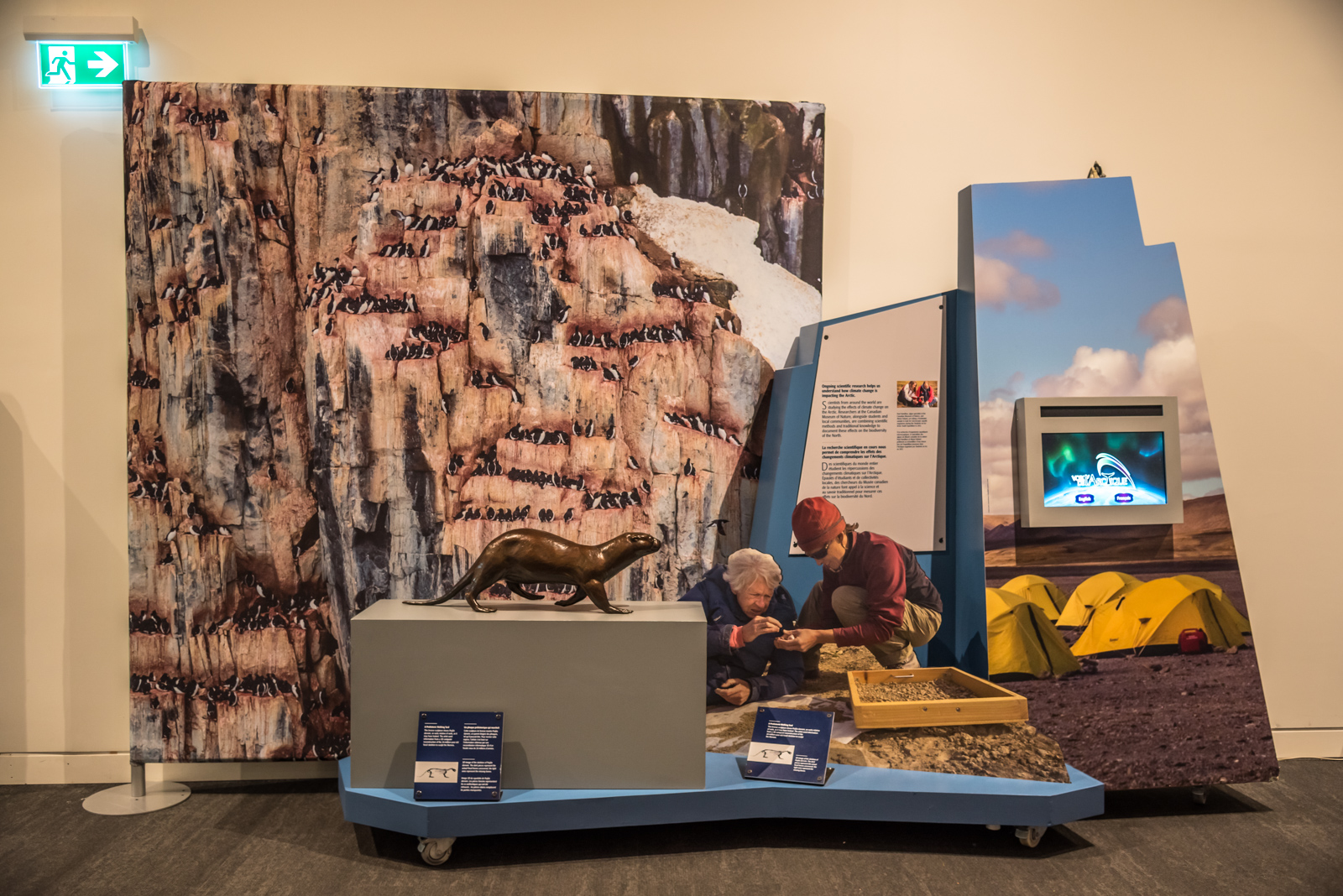
A display from ‘Arctic Voices’
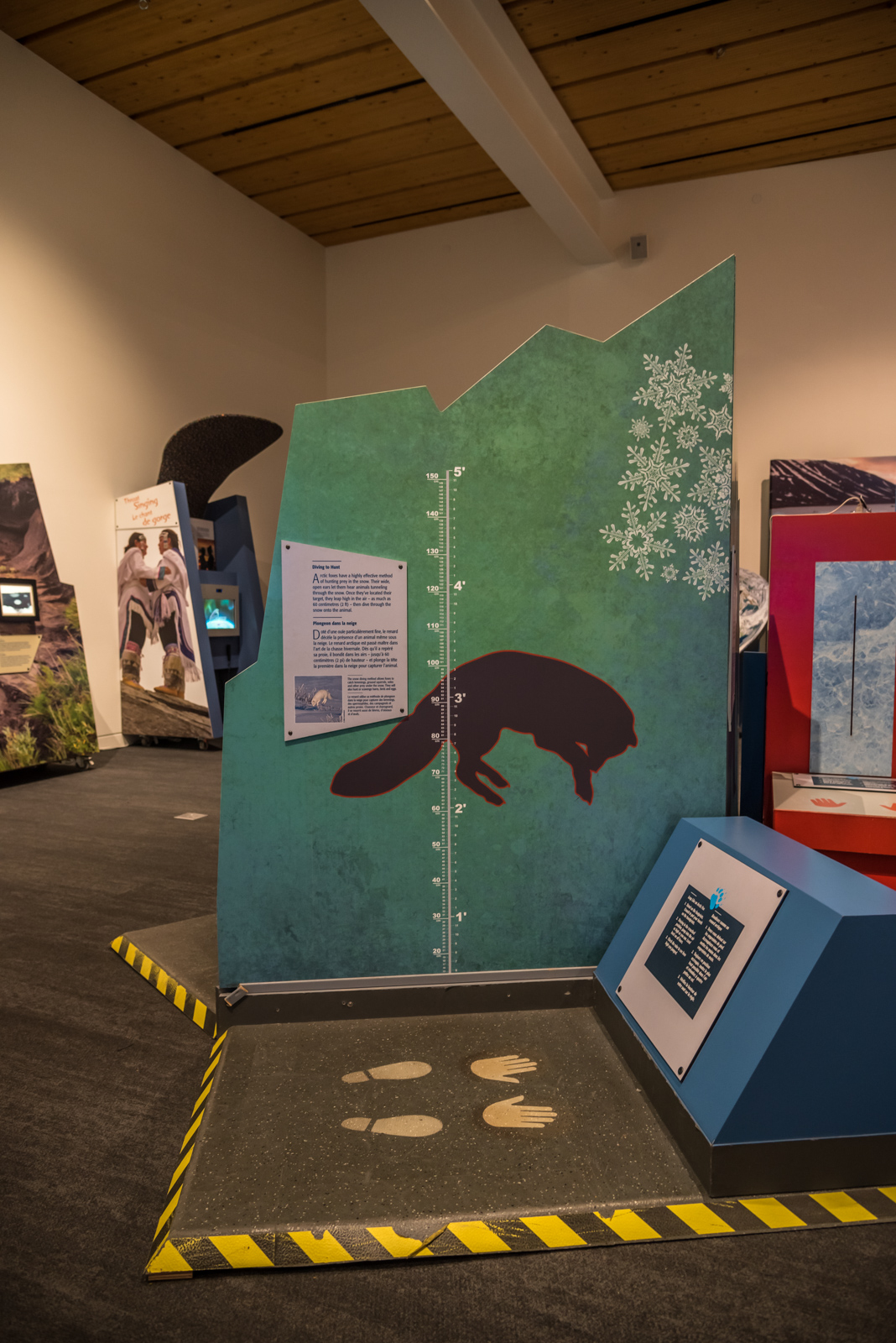
A display from ‘Arctic Voices’
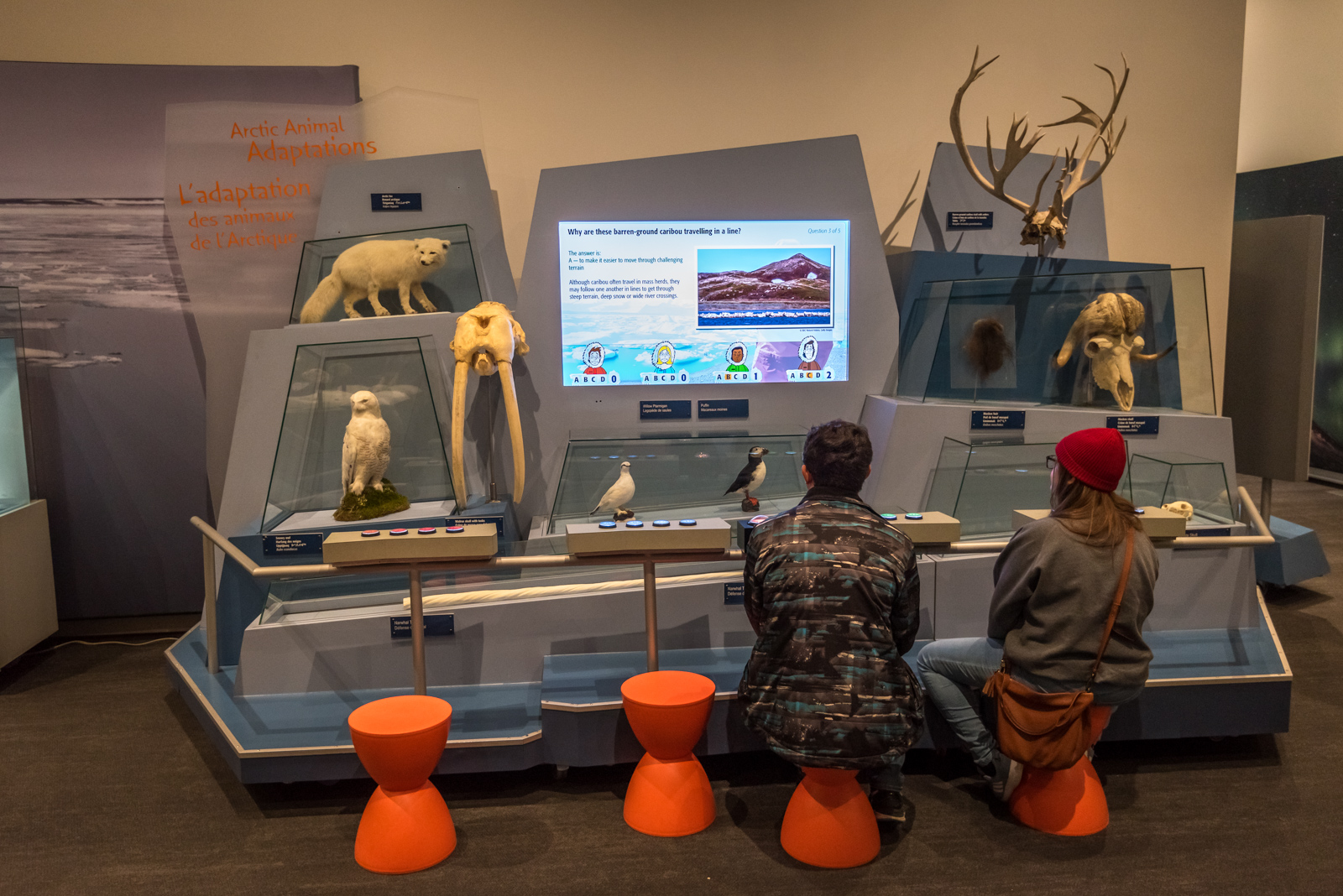
A display from ‘Arctic Voices’

Exterior of the Museum of Surrey
The museum is situated on the unceded and ancestral lands of the Salish peoples, including the q̓ic̓əy̓ (Katzie), q̓ʷɑ:n̓ƛ̓ən̓ (Kwantlen), and se’mya’me (Semiahmoo) Nations. It is owned and operated by the City of Surrey. Located on the Heritage Campus in Cloverdale, the museum includes a main building with feature gallery, TD Explore Zone, Indigenous Hall, Textile Centre and Surrey Stories Gallery.
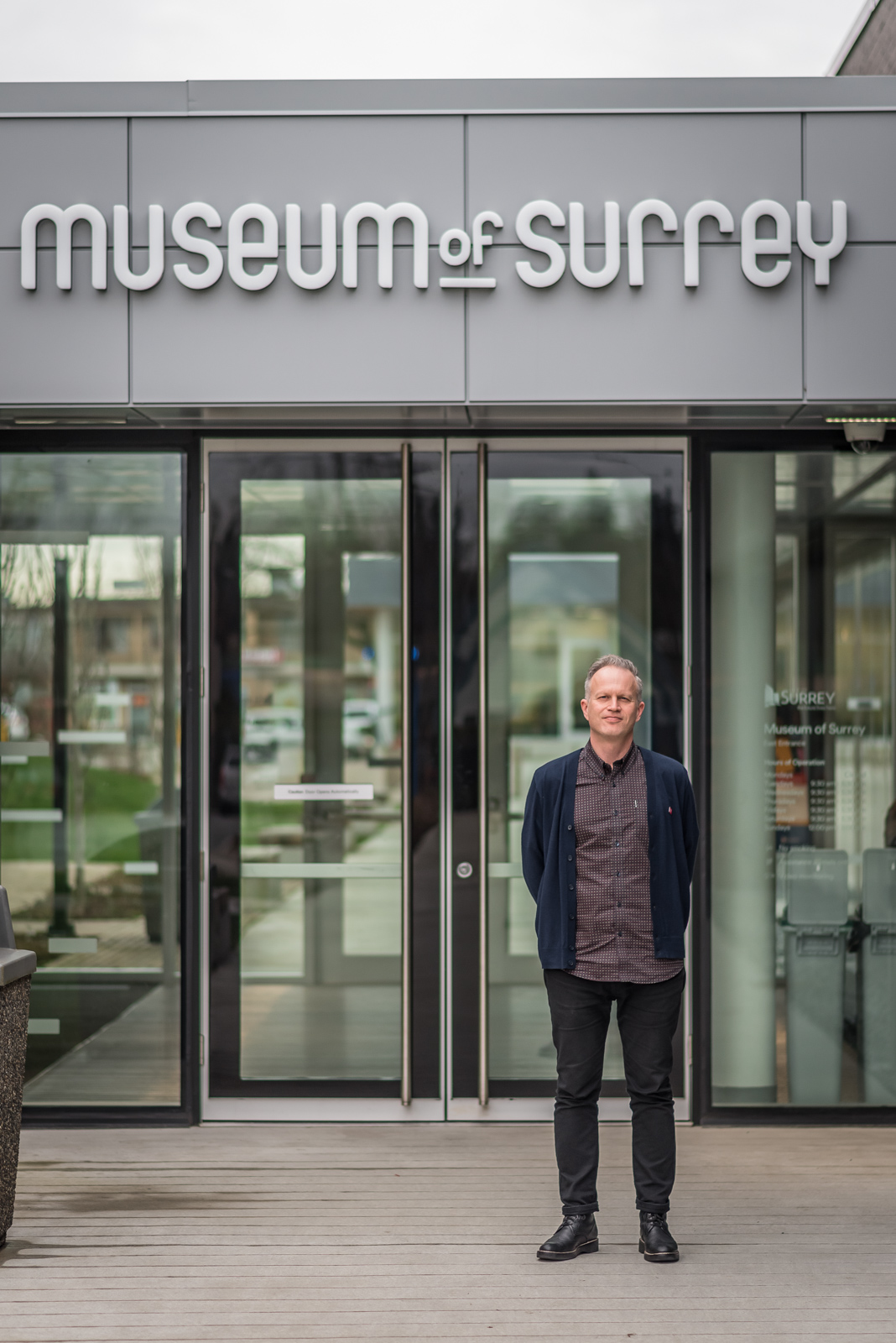
Museum of Surrey manager, Lynn Saffery, in front of the museum entrance
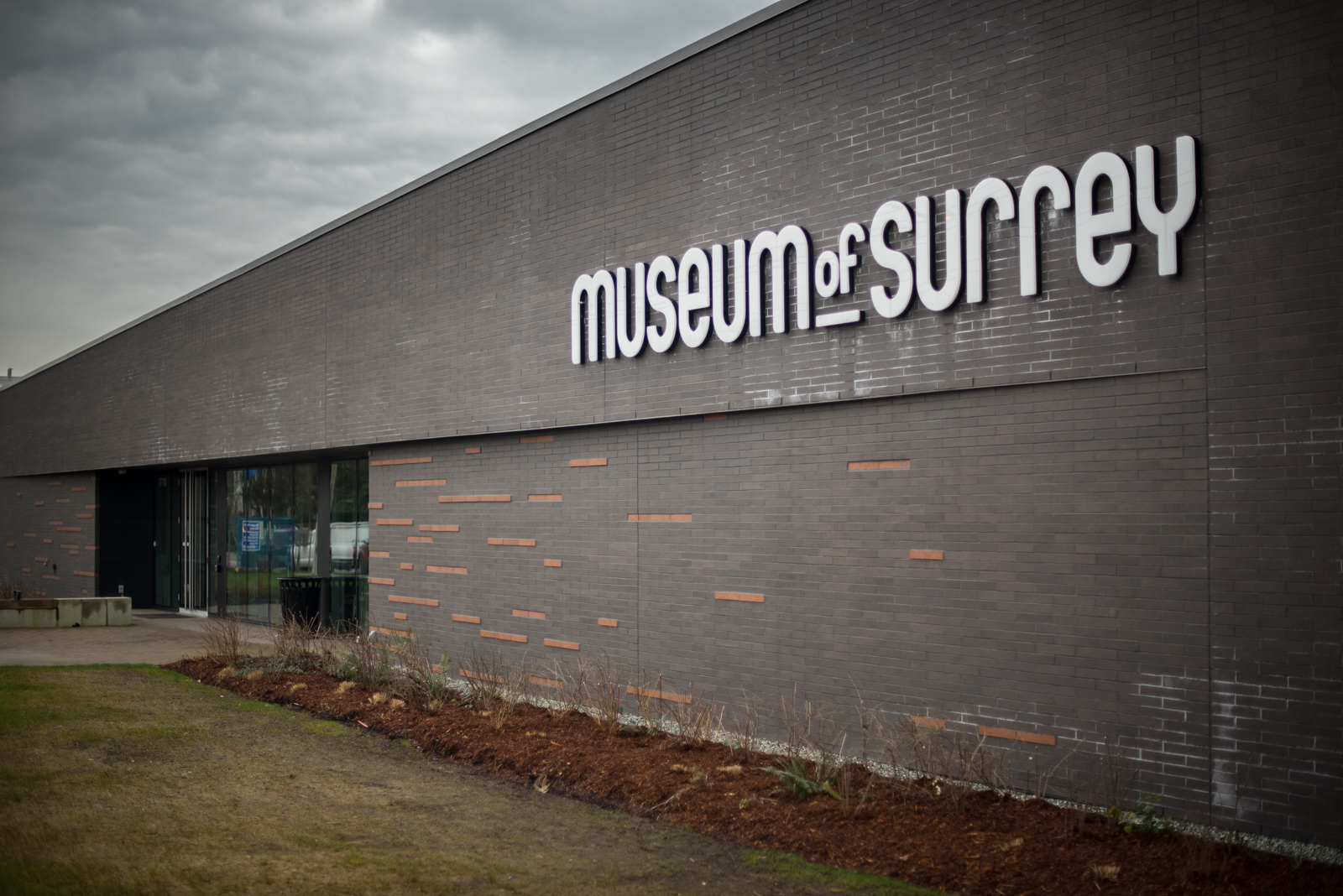
Exterior of the Museum of Surrey
The museum is situated on the unceded and ancestral lands of the Salish peoples, including the q̓ic̓əy̓ (Katzie), q̓ʷɑ:n̓ƛ̓ən̓ (Kwantlen), and se’mya’me (Semiahmoo) Nations. It is owned and operated by the City of Surrey. Located on the Heritage Campus in Cloverdale, the museum includes a main building with feature gallery, TD Explore Zone, Indigenous Hall, Textile Centre and Surrey Stories Gallery.
